Travel Tips
- Attractions
- Things to do
- Food & Wine
- Art & Culture

Rest of the world
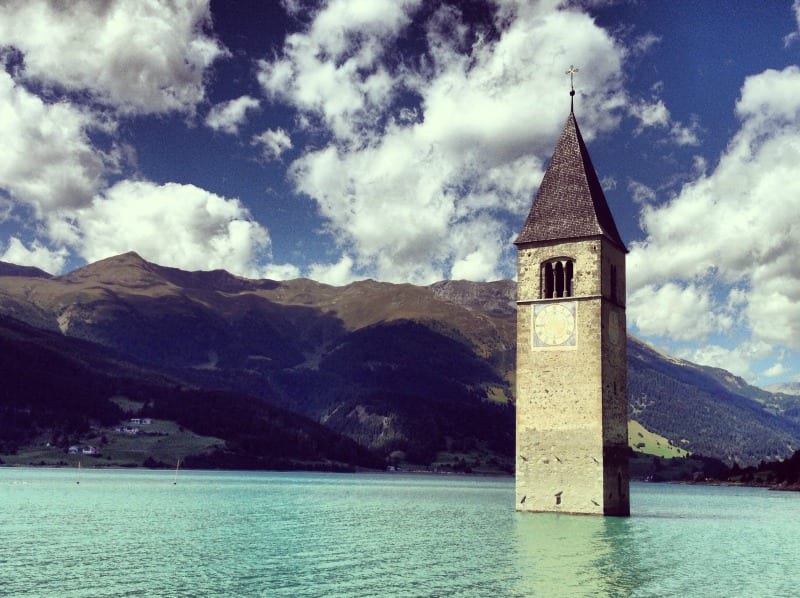

South Tyrol, Italy: A Haven in the Italian Alps
July 5, 2023
South Tyrol, Italy, is a haven for outdoor-lovers. Photo by Diana Simon
Backdropped by the Dolomites and Italian Alps, Italy’s South Tyrol—also known as Alto Adige—is a must-visit for travelers who love the outdoors. In winter, South Tyrol is ideal for skiing and snowboarding; in the summer, it’s perfect for those who love hiking and biking.
But you don’t have to be sporty to fall in love with South Tyrol! Dotted with charming towns, boasting breathtaking scenery, and renowned for its wines, this off-the-beaten-path region bursts with fascinating places to discover—even for non-athletes.
Want to head to South Tyrol? Here’s a guide to help you plan your trip, including where South Tyrol is located, how to get there and around (even without a car!), which local foods and wines to try, and some of Alto Adige’s must-see sights and must-do activities.
Table of Contents
Where is Alto Adige?
The northernmost region in Italy, Alto Adige (meaning “Upper Adige,” and named after the river that runs through it) borders Switzerland and Austria. It’s also known as Sudtirol, or “South Tyrol,” thanks to its location in the southernmost part of Austria.
One of the two regions making up Trentino-Alto Adige, Alto Adige was part of Austria until the end of the World War I. A predominantly German-speaking region, it has signs in German, Italian and in a language called Ladin, spoken by about 30,000 of the residents.
South Tyrol is divided into eight different districts. Bolzano (in German, “Bozen”) is the capital and largest town.
South Tyrol is situated in the northernmost part of Italy.
How can I get to South Tyrol?
Getting to South Tyrol can be a little tricky without a car—which is what makes it an off-the-beaten path destination! But it’s not impossible. If you don’t want to rent a car, you can also get there…
Alto Adige’s only airport is outside of Bolzano, and serves only domestic flights. Daily flights run from Rome to Bolzano.
The nearest international airport is in Verona, situated 90 miles (150km) from Bolzano. From Verona’s Villafranca airport, a bus runs every 20 minutes to the main train station in Verona (Porta Nuova), and from there, you can catch the train to Bolzano.
Alternatively, there are direct bus transfers to Bolzano and other South Tyrolean towns from the airports at Milan Malpensa, Bergamo, and Verona. These transfers must be booked at least 48 hours ahead of time, and prices start at €44, one-way. More details here.
Traveling by train isn’t just one of the best ways to get around Italy, but it’s affordable, too. (Don’t miss our post on how to travel Italy by train !). As the Italian rail network connects most major cities, this is probably the best way to get to Alto Adige.
From Verona, it’s only a 90-minute train ride to Bolzano; there are also direct trains from Rome and Florence (Campo di Marte). From Milan or Venice, you’ll need to switch trains in Verona, but it’s still a relatively easy trip.
How can I get around South Tyrol?
It’s easier than you might think, even without a car! The region has a very well-organized public transport system . The Mobilcard, valid for one, three or seven days at the price of €15, €23, or €28 respectively, gives you access to all the region’s public transport, including the buses, regional trains (along four separate lines), and ccable cars. Tickets can be purchased at tourist offices, hotels and automatic ticket machines in railway stations.
Another great way to travel around Alto Adige? By bicycle! The region offers the Bikemobil card, which gives you unlimited access to South Tyrol’s integrated transport system, as mentioned above, as well as the use of a rented bicycle. Similar to the Mobilcard, you can purchase one for either one, three or seven days. More details available on the official website .
Getting around the region by public transport is easier than you might think, thanks to the Mobilcard and Bikemobil cards.
Where can I stay in South Tyrol?
From luxury hotels to apartment rentals, there’s a huge range of accommodation in South Tyrol. However, we’re all for staying in an agriturismo, or “farm-stay” (here’s everything to know about staying in an agriturismo !). Staying at an agriturismo in South Tyrol won’t just give you an authentic experience, but will let you experience the region’s unspoiled countryside. Check out the Red Rooster website to sort through a wide variety of farm-stays, ranging from family-friendly to organic farms.
What should I eat and drink in South Tyrol?
Typical dishes.
Thanks to Alto Adige’s Austrian heritage, the cuisine in South Tyrol is distinctly different from the other regions in Italy. White cabbage, potatoes, and bread show up often, as does the flavorful cured and smoked pork—called speck—that’s labeled IGP, denoting its geographical origins. (Find out exactly what IGP and DOP foods really are! ).
Every year, there is a lively speck festival held in Santa Maddalena, a small town in Val di Funes ; the festival features a farmer’s market, local artisanal products, freshly baked local breads, music, and of course, tastings of speck. It’s usually in early October, so check before you go.
A plate of speck, a popular antipasto in South Tyrol. Photo by Benreis (Wikicommons)
One typical dish in Alto Adige that uses speck: canederli, bread dumplings made with leftover bread and, sometimes, cheese. Canederli can either be served in a broth or with melted butter and grated cheese.
As you drive through Alto Adige, you’ll notice (aside from the mountains!) endless stretches of apple orchards, usually ripe for picking at the end of September and early October. So make sure you taste apple juice and the indulgent apple strudel, a sweet way to end a South Tyrolean meal!
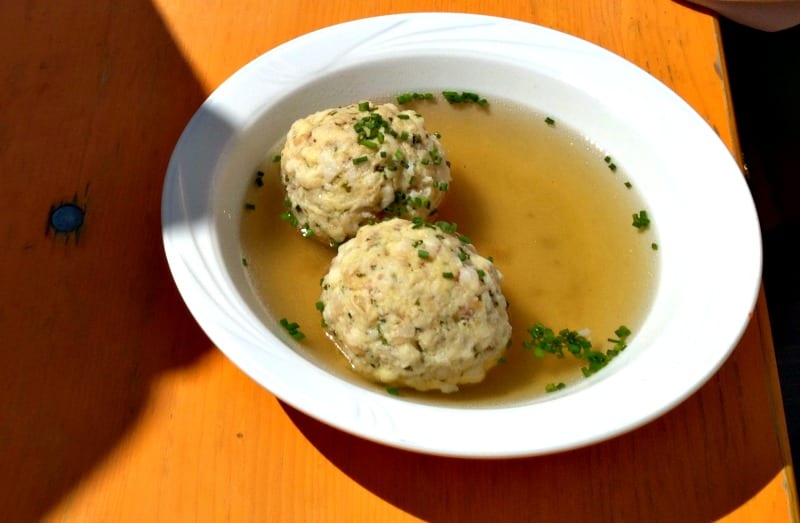
Canederli in broth is a typical food found in the South Tyrol.
Regional wines
Alto Adige is renowned for exceptional wines, including the white varieties of Riesling, Müller Thurgau, and Sylvaner, along with the reds Vernatsch and Pinot Nero.
Want to taste some of the best local wines? Check out what’s considered to be one of Italy’s top wine routes, the Sudtirol Weinstrasse (or “Wine Road”). Situated in the valley of the River Adige, the route starts northwest of Bolzano and heads south to the town of Salorno. Each May and June, the villages along the route hold various wine-related events, culminating with a night of open cellars.
What is there to do in Alto Adige?
Alto Adige boasts numerous hiking trails, the perfect summer activity. Photo by Diana Simon
Best time of year to visit South Tyrol
South Tyrol is a paradise for those who love nature, outdoor activities and, of course, to #takewalks ! With more than 8,000 miles (13,000km) of trails, it has a hiking route for everyone—regardless of ability. And with summer’s mild weather and striking views, all you need are some decent walking shoes to enjoy the region’s best offerings.
Biking is another popular activity, and the region has numerous routes to choose from . Wine-lovers can even cycle the South Tyrol Wine Road (here are three different route options !).
Whether you’re a beginner or a pro, there’s a ski slope for you in South Tyrol. Those looking for some extreme slopes should check out Saslong (Gröden), an exhilarating challenge with a 57 percent gradient; Pordoischarte (Dolomites) thrills with a spectacular, steep descent.
As the holidays approach, don’t miss the Christmas markets in Bolzano, Brunico, Merano,and Vipiteno. With the scent of balsam, lit-up Christmas decorations, and stall after stall selling vin brûlée and handicrafts, the markets make the festive season even more magical.
What sights should I see in South Tyrol?
There are so many gorgeous sights in South Tyrol, we can’t name them all in one post. But here are four of our favorite spots to help you get started.
The 1950 creation of the artificial Lake Resia submerged the entire town of Graun. Today, the only evidence left is the striking church steeple emerging from the lake. The haunting scene makes Lake Resia a popular attraction in Val Venosta (Vinschgau). In summer, it’s also great for kitesurfing.
The striking church steeple on Lake Resia. Photo by Diana Simon
Stelvio Pass
The drive up Stelvio Pass, built from 1802 to 1825 by the Austrian empire, isn’t for the faint-hearted! With its 48 hairpin turns, Stelvio pass is one of the world’s most dangerous roads. It’s also one of the highest paved routes in Europe, clocking in at 9,000 feet. As you can imagine, the views from here are breathtaking! For those who love a challenge, the Stelvio Bike Day , held annually, closes the pass to car traffic from 8am to 4pm to make it a route for bicyclists only.
Tyrol Castle
Situated near Merano, Tyrol Castle, formerly the home of the Counts of Tyrol, now is the headquarters of the South Tyrol Museum of History. Dating back to the 11th century, the castle served as the political headquarters until the 15th century; it was so important, in fact, that it gave its name, Tyrol, to the entire region. Today, its lovely courtyard, along with its intricate Romanesque portals and frescoes in the chapel, make it a must-visit.
Lake Carezza
A stunning Alpine lake in the Val d’Ega, 19 miles (30km) from Bolzano, the lake’s name means “Rainbow Lake” in Ladin—thanks to its beautiful shades of colors. The small lake’s water comes solely from underground springs… and, of course, melted snow.
Have you been to South Tyrol? What did you think? Let us know in the comments below!
Book a Tour

Pristine Sistine - The Chapel at its Best
1794 reviews

Premium Colosseum Tour with Roman Forum Palatine Hill
850 reviews

Pasta-Making Class: Cook, Dine Drink Wine with a Local Chef
121 reviews

Crypts, Bones Catacombs: Underground Tour of Rome
401 reviews

VIP Doge's Palace Secret Passages Tour

Legendary Venice: St. Mark's Basilica, Terrace Doge's Palace
286 reviews
Stay up to date with travel tips, local insights and all things Italy on our social channels!
Subscribe to our Newsletter
Get curated Italy travel tips delivered to your inbox!
Your browser is out-of-date!
Update your browser to view this website correctly. Update my browser now
- user link user link
Discover South Tyrol
For your information.
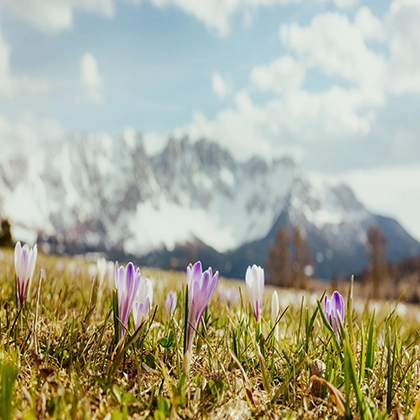
South Tyrol. Celebrating life
- Eating & Drinking
- Markets & Fairs
- Arts & Music
- Food, Wine & Tradition
- Sport events
- Guided tours
Search for places to stay
Experiences & events, from our hearts.
In South Tyrol we don't want to value anything too lightly. That's why we are responsible for our quality of life, nature, and unique products. We are driven to think outside the box and are eager to pave the way for innovation. With the passion lying in every one of us, it has all come true - because we love what we do and we do what we love.
Try it for yourself. In every experience, product and casual encounter.

Alpine & Mediterranean

Get out into nature

Cultural highlights in spring
South tyrol is....

We are South Tyrol

Arts and crafts
Getting to know inside out.
We'd like to show you how we live our life and culture. A culture that has long been shaped by German, Italian and Ladin influences. You'll get closer to South Tyrol in the blink of an eye.
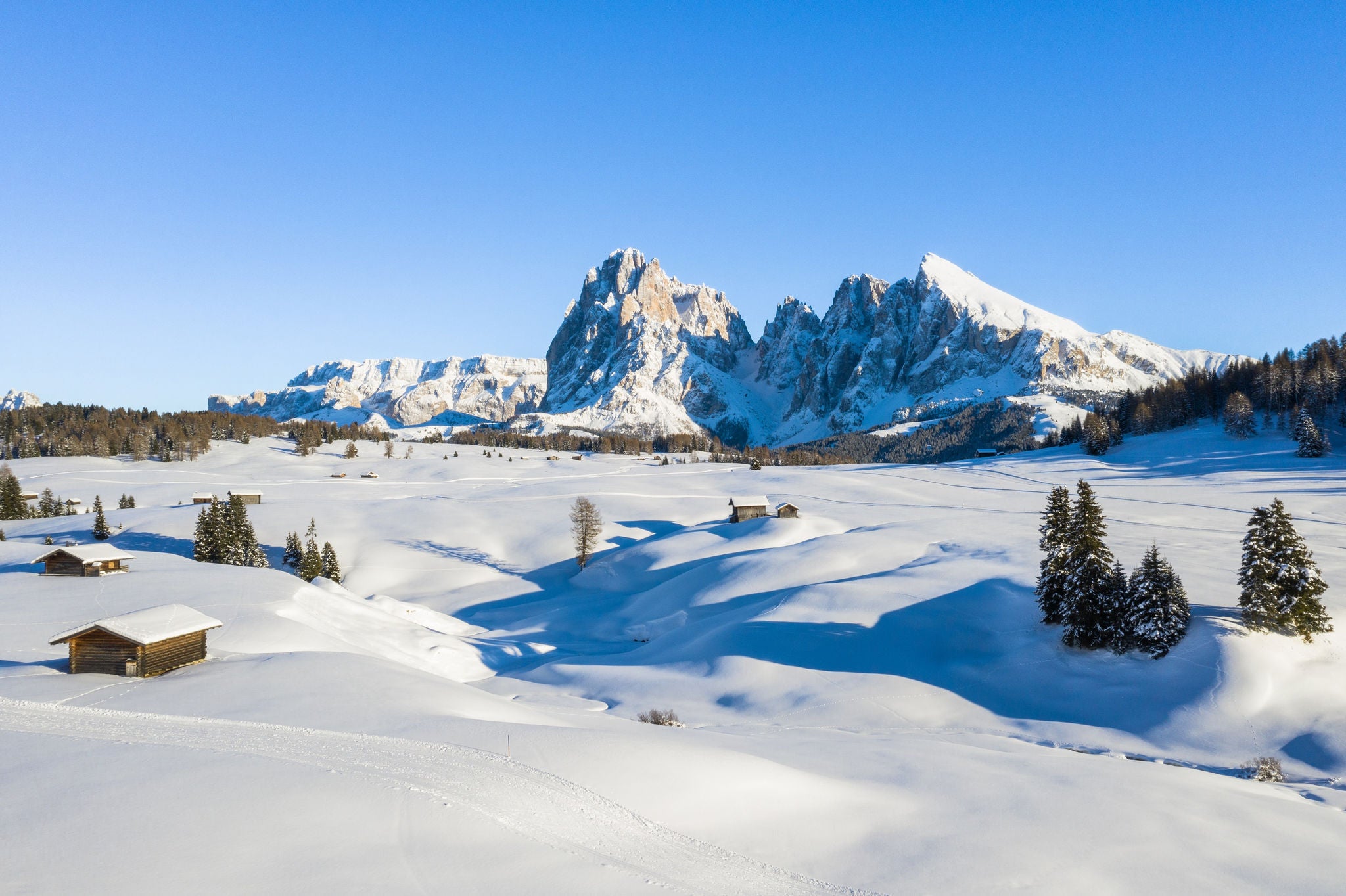
A guest in South Tyrol
Convivial, historic, in the mountains or in a wellness hotel with a sauna and infinity pool. Find the best accommodation.
Easter in South Tyrol
Easter in the valleys and villages comes with traditional customs and church ceremonies. Easter bread or creative asparagus recipes are served in many restaurants and promise moments of sheer indulgence.
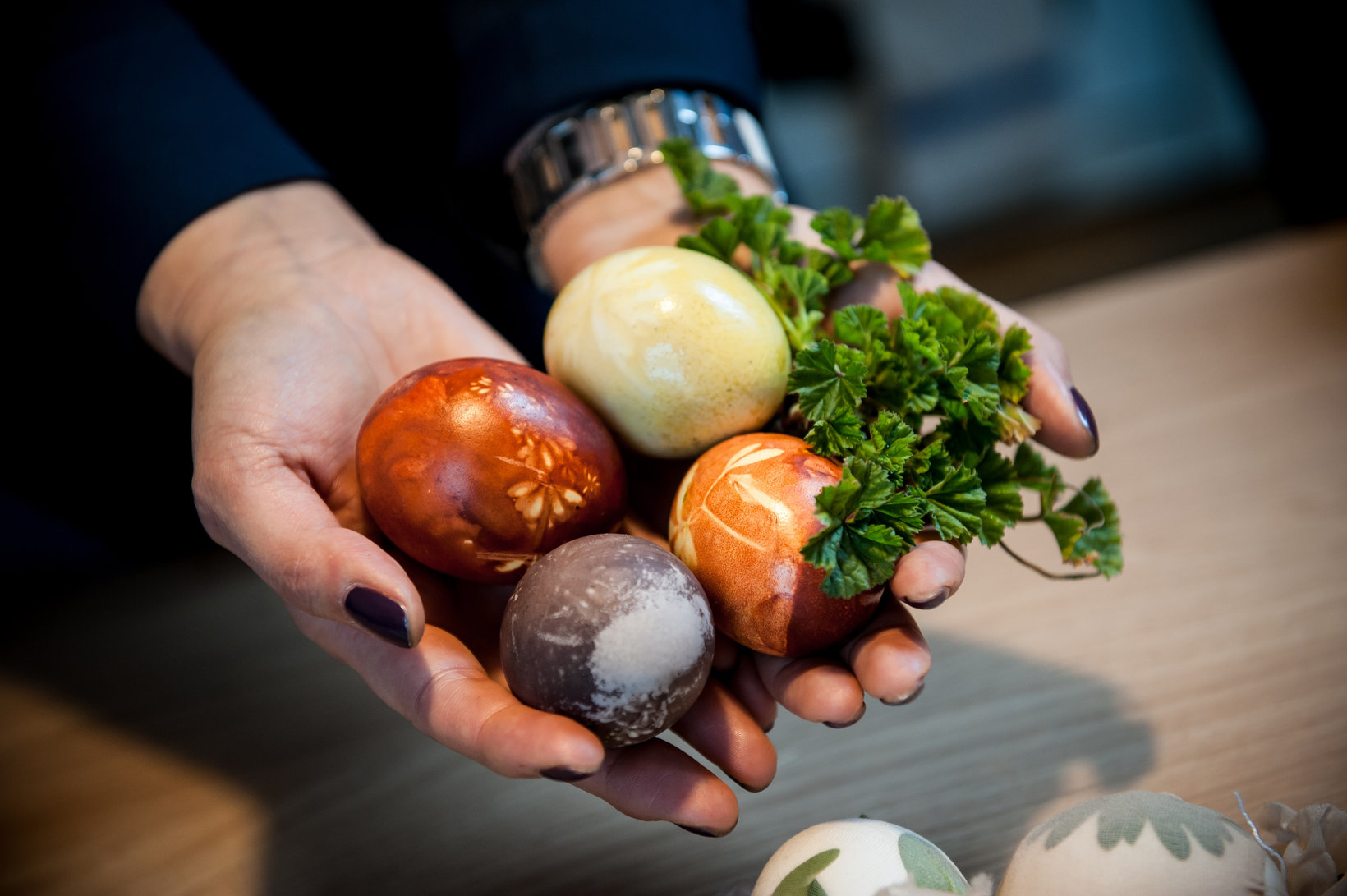
What can you experience in South Tyrol?
Draw inspiration from your stay in South Tyrol. You'll have a wide choice: quiet and active moments, winding alleys and sunny mountain slopes, products to taste and tranquil corners where to rest.

Biking through South Tyrol

Skiing until after Easter

Meran/Merano and evirons

South Tyrolean delicacies

Products with quality

Awakening nature
Spring in south tyrol.
We South Tyroleans are thrilled for the awakening of nature: we get our bikes out of the garage and plant colourful gardens. Are you a spring person too?
Your spring holiday can be as diverse as you want it to be. After putting your ski boots on, you can walk on a Waalwege canal trail past blossoming apple trees . But you can't call it a day yet. Wait until it'll be evening, and you'll be outside drinking an aperitivo in the warm spring air. Although South Tyrol is a small region, it combines at different altitudes and temperatures, urban charm and alpine silence . Come cycling , skiing , hiking or strolling. South Tyrol has it all.
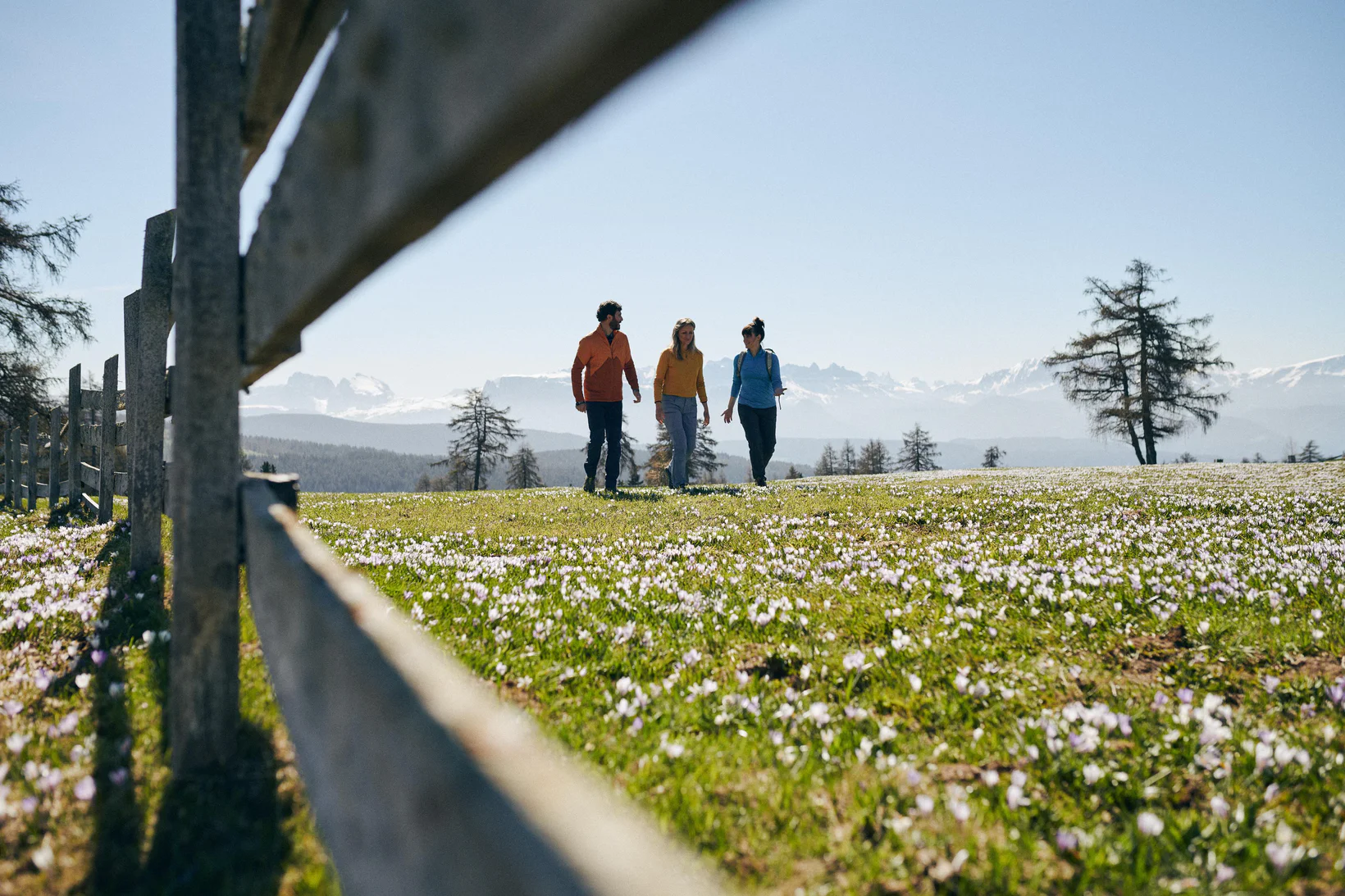
Our pioneers
A visionary who makes the construction of wooden houses even more sustainable and a wool artist who creates wonderful unique pieces with natural sources. What are the sources of motivation South Tyroleans tapped into?
The innovative idea of his patented solid wood wall came to Herbert Niederfriniger when he was thinking about his dream house. Now his company Holzius boasts a team of 60 employees and is committed to sustainable and natural solutions for building houses and wooden hotels.
Her wool is lovingly sheared from her sheep and its processing undergoes a significant transformation at a local spinning mill nearby. Johanna Aichner’s prowess shines as she handcrafts home interior products with the finest wool, like carpets, cushion covers, and blankets.


5-day weather forecast
With the 5-weather forecast you won't let bad weather ruin your holiday in South Tyrol: that's a good way for a great planning. On a rainy day, visit a musuem or hit the slopes of a ski resort when the snow is falling down. Look at the sky clearing out and enjoy your time outside.
South Tyrol Newsletter
Join us for a fresh pack of exclusive offers, fun adventures, breathtaking views, local recipes and much more. Make the most of your vacation!
I consent to the processing of my data to receive communications in line with my interests
By clicking on the “ Subscribe to the newsletter ” button you accept the Terms and Conditions and the Privacy Policy
Confirmation email has been sent. Don't you find it? Check your spam folder.

I consent to the processing of my data to receive communications in line with my interests
By clicking on the “ Subscribe to the newsletter ” button you accept the Terms and Conditions and the Privacy Policy

The travel website for your holidays in South Tyrol
Thanks to the diversity and unique beauty of this region, your South Tyrol holiday is guaranteed to be unforgettable: Discover the glaciated mountain peaks in the Tauferer Ahrntal valley, the lively and sophisticated centre of Bozen in the south of the region, the magical Mediterranean Meran and the green Pustertal valley, the gourmet region Eisacktal valley, the varied Vinschgau valley and not to forget the incomparable beauty of the Dolomites , a world natural heritage site.
Culture, tradition, delicious cuisine, warm hospitality and above all: lots of joie de vivre and cheerfulness! Whether you want to spend your days in a wellness hotel in South Tyrol , explore the country's ski regions or go hiking in the unique mountain world, South Tyrol in Italy promises a holiday that you will remember for a long time.
Holidays in South Tyrol - Find your dream accommodation
South Tyrol in Italy offers a wide range of accommodation to suit all tastes, from traditional hotels to luxurious chalets and family-friendly farm apartments . Many accommodations in South Tyrol are located in the midst of magnificent mountain scenery that invites holidaymakers to go hiking , climbing and mountain biking or skiing , cross-country skiing or snowshoe hiking. Other accommodations delight with romantic views of vineyards, orchards and castles as well as the mild climate in spring and autumn. Find your perfect accommodation and experience an unforgettable holiday in South Tyrol !
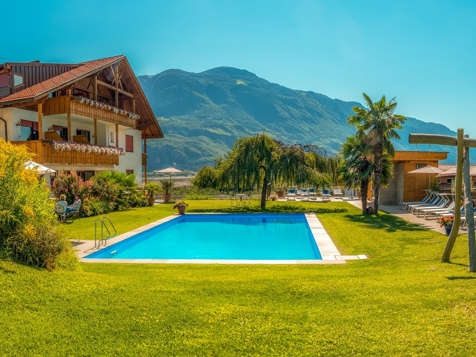
Comfortable rooms & spacious apartments, rich breakfast buffet or bread service, garden with heated pool, sunbathing lawn and garden house with whirlpool.

Farm holidays in the wine village Girlan and in cosy apartments – ideal for active travellers and for those who are looking for regeneration!

Inviting rooms and suites, excellent breakfast, heated outdoor pool in the garden & unlimited possibilities for active guests.

Inviting B&B in the environs of Meran with comfortable and cosy rooms, a delicious breakfast, dreamlike garden & wonderful view of the vineyards.
South Tyrol in summer: The perfect destination for active guests
A South Tyrol holiday in summer is perfect for anyone who wants to spend their summer actively. Whether hiking, cycling, golfing or adventure sports like paragliding or rafting – there is something for all tastes. Discover the unique natural diversity of South Tyrol, from the Three Peaks and six nature parks to hidden sights such as the earth pyramids in Terenten or the emerald-green Lake Prags. For families, there are first-class hotels and plenty of excursion destinations. Experience the rich cultural history of South Tyrol with castles, churches and monasteries or visit one of about 90 museums in the region. A holiday in South Tyrol in summer promises to be an unforgettable experience.
20. March 2024
Spring holidays in South Tyrol - Tips in April
Spring in South Tyrol is currently showing its best side and offers numerous opportunities for activities and relaxation. Hiking, cycling or climbing fantastic mountain peaks are just some of the activities for your South Tyrol holiday in April . We have put together selected tours, accommodation , events and attractions for you to enjoy your dream holiday in South Tyrol. Discover the breathtaking landscape and the diverse culture of South Tyrol. Whether you are travelling alone, with family or with friends, there is something for everyone. Book your spring holiday now and let yourself be enchanted by the beauty of the region!
Asparagus restaurants Culinary delicacies in spring
until 18.05.2024
Winter getaway in Tauferer Ahrntal
Advantage cards Exploring South Tyrol by train & bus
Current holiday offers
A dream holiday - for active guests who enjoy relaxation, culinary delights, and friendly interactions.
Welcome to the Tirolerhof at the gateway to the Gsieser Valley. Your perfect place for active holidays and pure relaxation!
TOP hotel ****s in Pustertal - large garden with swimming pool, natural bathing pond, saunas, guided hikes and much more!
Come to our hotel in Venosta Valley to enjoy moments of tranquility, relaxation and well-being surrounded by nature!
South Tyrol holidays in winter: Adventure & relaxation in the midst of nature
South Tyrol in winter is a paradise for sun lovers and winter sports fans. Whether adventurous snowkiting, ice climbing, skiing, cross-country skiing, tobogganing or snowshoeing – there is something for all tastes. The untouched nature and the modern winter sports areas complement each other perfectly and offer countless possibilities for a varied winter holiday. South Tyrol is also the perfect destination for families. Be enchanted by the incomparable beauty of the South Tyrolean mountains in winter and discover the winter landscape on foot or on skis. If you want to experience the culture and history of South Tyrol, then visit the castles, palaces and churches that can be found in every valley. South Tyrol also offers a distinctive wellness tradition and modern wellness trends . Book your South Tyrol holiday in winter now.
Explore South Tyrol
- Meran & environs
- Bozen & environs
Pure variety: Events & activities in South Tyrol
Throughout the year, South Tyrol has a variety of events to offer, ranging from cultural highlights to traditional festivals and sporting competitions . Each event has its own charm and offers a unique opportunity to experience the diversity and joie de vivre of South Tyrol. Be there and let yourself be inspired by the special atmosphere and hospitality. Whether music festival , wine fair or mountain marathon – there is something for everyone. Discover the highlights of the events calendar and let South Tyrol enchant you!

Trentino & South Tyrol
Home to the spectacular sawtoothed Dolomites, the semi-autonomous provinces of Trentino and South Tyrol are packed with stunning landscapes. The region has long enticed hikers, climbers, poets and fresh-air fanciers, with the scenic Sella Ronda remaining one of the world's most iconic skiing and cycling circuits.
Leave the planning to a local expert
Experience the real Trentino & South Tyrol. Let a local expert handle the planning for you.
Attractions
Must-see attractions.

Museo di Arte Moderna e Contemporanea Rovereto
This four-storey, 12,000-sq-metre steel, glass and marble behemoth, designed by Ticinese architect Mario Botta, is both imposing and human in scale, with…

Val di Genova
Northwest of Pinzolo is the entrance to the Val di Genova, renowned as one of the Alps' most beautiful valleys. It's great walking country, lined with a…

Schloss Trauttmansdorff Gardens
Merano (Meran)
You could give an entire day to these beautiful botanical gardens a little outside Merano (and they do suggest it). Exotic cacti and palms, fruit trees…

Castello del Buonconsiglio
Guarded by hulking fortifications, this massive edifice was home to Trento's bishop-princes until Napoleon's arrival in 1801. Enclosed within is the…

Museo Archeologico dell'Alto Adige
Bolzano (Bozen)
The star of the Museo Archeologico dell’Alto Adige is Ötzi, the Iceman, with almost the entire museum being given over to the Copper Age mummy. Kept in a…

A stunning modernist architectural work, courtesy of Renzo Piano, houses this 21st-century science museum and cleverly echoes the local landscape…

Museo Ladin
The Dolomites
Atmospherically set in a castle 15km south of Brunico and full of folk treasures, this is the best of three museums in this region devoted to Ladin…

LUMEN Museum of Mountain Photography
Anyone passionate about the mountains should make a beeline for this captivating museum, opened in 2018 at the summit of Kronplatz ski resort. The…
Plan with a local
Experience the real Italy
Let a local expert craft your dream trip.

Latest stories from Trentino & South Tyrol
Filter by interest:
- All Interests
- Adventure Travel
- Art & Culture
- Beaches, Coasts & Islands
- Food & Drink
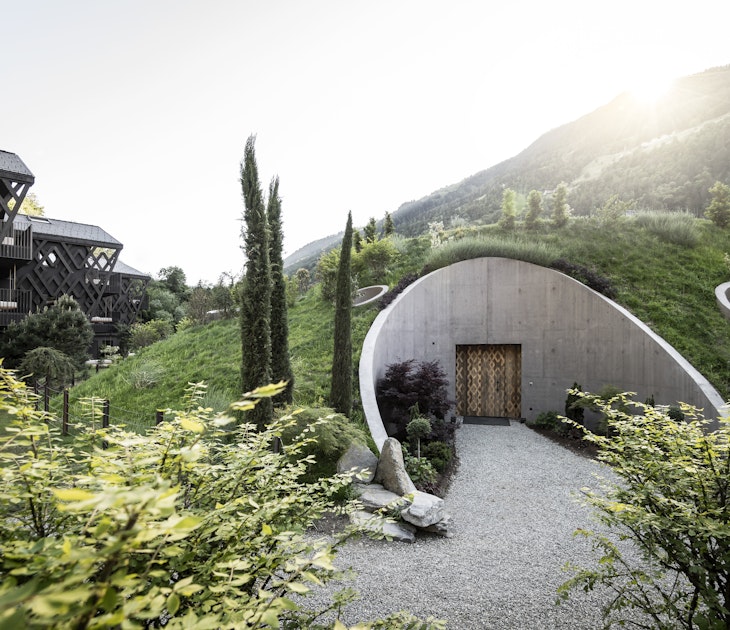
Aug 7, 2020 • 1 min read
The Apfelhotel Torgglerhof in South Tyrol recently underwent a revamp and expansion process that gifted it with uniquely designed structures, including a…
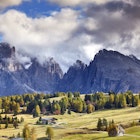
Feb 28, 2020 • 12 min read
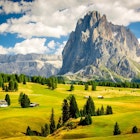
Jul 19, 2019 • 5 min read
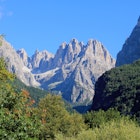
Jun 8, 2018 • 4 min read
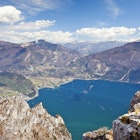
Apr 12, 2018 • 5 min read
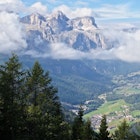
Aug 3, 2016 • 6 min read
Purchase our award-winning guidebooks
Get to the heart of Trentino & South Tyrol with one of our in-depth, award-winning guidebooks, covering maps, itineraries, and expert guidance.
Trentino & South Tyrol and beyond

- 2024 TRAVEL UPDATE
- Work with us
- Beyond Bologna
- Regions of Italy
- Travel books
- Best group tours
- Itineraries
- Accommodation guide
- Italian phrases for travel
- Rocket Italian review: 2024 update
- Ultimate Italy Travel Planner
- City Planners
- Essential Guides
- Italy themed gift ideas
- Trip planning services
Itineraries , Podcast episodes
Episode #128: how to spend 5 days in south tyrol and the dolomites.
This article may contain compensated links. See our full disclosure here
Listen to “How to Spend 5 Days in South Tyrol and the Dolomites” on Spreaker.
Many visitors try to squeeze a trip to the Dolomites and South Tyrol region into a day trip from Venice, but that is only going to give you the tiniest taster of what this incredible region has to offer. Most of us have limited time, so we look at some itinerary ideas from a local, to spend 5 amazing days in this magical region during your trip to Italy.
Show notes We talk to South Tyrol local Franziska Weingut Donà, whose family run the Donà Winery a gorgeous idyll set amidst jaw-dropping scenery with stunning views of the Dolomites, where you can stay as well as enjoy a wine tasting of their exceptional wines. As well as the incredibly stunning mountains, lakes, and pastures this area has to offer, we talk castles and sunken towns, apple strudel and edible flowers, and amazing alpine wine and cider.
What you’ll learn this episode
- The Donà winery is in Appiano which is close to the South Tyrol capital Bolzano and in the backyard of the Dolomites. As well as the extraordinary mountain views they are also next door to a beautiful castle (there are many castles in Appiano)
- Appiano is a very small region and the northern-most region of the province of South Tyrol, crossing the border to Switzerland and Austria
- Franziska’s mother tongue is German. Before the First World War, they were part of Austria and after became part of Italy. Her grandfather, for instance, was called Franz, and after the move to becoming Italy, his name was changed to Francesco – so a huge life change. Then for more than 70 years, they were able to speak their mother tongue German, and also speak Italian. The South Tyroleans are a great mixture – a mixture of the German straightness and the Italian Dolce Vita
- South Tyrol has great public transport. The trains and buses are very timely and organized and you can access Bolzano quite quickly from Venice or Milan. But visiting the South Tyrol it really is best to have a car as so there are so many more places around and up the mountains that if you have a car, it’s so much easier to get to
- Although it is on the border to Switzerland and Austria, the landscape of South Tyrol is not quite what you would see there – the Alps you might imagine – the Dolomites are very different and unique. They are mountains that are like giant stones standing tall in the landscape
- Franziska believes (as do we) that everyone should see the Dolomites at least once – as it’s such a unique and epic experience
- In the Dolomites, you have the Seiser Alm/Alpe di Siusi – a green plateau 2000 meters up, and is just pure nature. There’s just nothing much up there apart from the meadow, the mountains, some cows, and a few huts. And because it’s so huge, you feel quite free and so powerful when you are up there
- There is a huge number of churches in the region. For instance, in Lana a small town of only 10K people, there are 24 churches. The farmers are very important for South Tyrol and many farms built their own little churches, so you’ll find many scattered around the region
- A lot of people want to go on a day trip from Venice to the Dolomites, which is great but there are so many places to see you barely touch the sides. If you can take any longer it is well worth it. We’ve chosen 5 days for an example itinerary because sometimes people have maybe two weeks to travel through Italy and if they’re focusing on Northern Italy, they can take in maybe Venice, Milan, and some of the lakes – and then include some time to explore this exceptional area
Franziska’s Recommended 5 Day South Tyrol Itinerary
First of all, she suggests checking out the south of South Tyrol, which is where her family winery Weingut Doná is based, in Appiano, and is home to the 3 castle tour. The tour starts behind the Winery Weingut Doná. It’s a two hours walk and when you reach the top, where Castel Hocheppan is situated, you are rewarded by a beautiful 360° view and a castle with a fascinating history. You can see Bolzano, the Dolomites, and the surrounding countryside and vineyards. The castle is fairytale-like, with its turrets, set in a square over-looking the valley. As well as the castle there is a church with paintings and a wonderful herb garden. If you are up there with the children, there are farm animals and you can see how the farmers live. There’s also a Tavern up there so you can grab some lunch or a glass of beer or wine. It’s a pretty easy walk but you can also go up by car and get a little bit nearer to have a small walk and enjoy lunch up there. To continue on the 3 castles tour, you can then you can go to the other castles Boymont and Korb with more amazing views, farms, and history along the way.
In the afternoon you can then head to Kalterer (Caldaro) Lake, which is just 10 minutes by car. It’s a natural bathing lake, surrounded by vineyards. The South of South Tyrol is very Mediterranean and sunny so it’s not as cold as you might expect. Appiano, it’s just 270 meters up – so not so high – so you have mountains in the South Tyrol but the valleys and the foods grown there are not so high and so are pretty warm. If you come in summer, when it gets really hot – then you can head to the lake to cool off in the water after you’ve done your hike up to the castle – or just go into the mountains to enjoy the cooler temperatures up. there!
Spend a whole day at the Seiser Alm/Alpe di Siusi – the highest Plateau in Europe and a UNESCO World Heritage site. At 2000 meters above sea level, you will find this green, lush paradise sourrounded by the Dolomite stone mountains and find yourself deep in nature, peace, and an unforgettable landscape. You cannot go up there by car – you need to go up on the cable car, which you can get from Seis am Schlern (Siusi allo Sciliar). It’s beautiful and so silent and you can walk up to the mountains some more – to higher peaks or you can just walk around – meaning it’s accessible to almost everyone.
Gostner Schwaige is an alpine hut (refugio) just a 20 minute (easy) walk from the cable car. It is an incredible alpine hut where you can stay or get food – – the term Schwaige has been used to denote a mountain hut and it is used in the alpine territory since the middle ages. Franz produces dishes only from the local area, using a huge variety of edible flowers from the garden tended by his mother. They are also famous for their hay soup served in a bowl made of bread and their dumplings which are large (tennis balls size) served with different things depending on seasons etc – it can be made with cheese, with ham, with spinach, with fruit and served with butter, gorgonzola, salad, in a soup – a huge variety ot things. It also has incredible views of one of the Dolomites – the Schlern (Sciliar Massif). It’s pretty small with around 10 tables outside so in high season you should probably book, though out of season – June for example, you could just turn up or maybe wait 5/10 minutes.
Franziska suggests spending the whole day up on the plateau to make the most of it – so go up at 9 am and come down when the sun is going down.
A day to spend in Bolzano – the capital of South Tyrol. When you are in South Tyrol you simply have to go to Bolzano – an amazing city with a special flair – charming, beautiful, and innovative, and full of interesting history. Here you can see clearly the South Tyrolean mixture of German and Italian living together, interweaving the cultures.
It is around 3 hours to Venice and also 3 to 4 hours to Milan by car. Milan to Bolzano is also under 4 hours by train.
At Bolzano, you can have interesting shopping, and unusual and pretty architecture to admire – particularly the churches. As well as the weekly farmers market at Bolzano, there is a fruit market every day with flowers, fruits, and vegetables.
It is also home to the South Tyrol Museum of Archeology which is dedicated to one of the most famous and most important mummies in the world: Oetzi (Ötze ), the Iceman. In 1991, a partly revealed and partly ice-covered human body was found by a couple from Nuremberg (Germany) at the Similaun Glacier in the Oetztal Alps. The place of recovery is located at more than 3,000 meters above sea level and only 92.55 meters from the Austrian border, on Italian territory. After decades of research, we now know that Oetzi was 1.58 meters tall, lived around 3300 BC, and was fatally injured by an arrow when he was about 46 years old. You can see what he was wearing and even eating.
Close to Bolzano is the Messner Mountain Museum Firmian , one of the museums in the region dedicated to Reinhold Messner, the famous mountaineer, explorer, and author from South Tyrol – and the centerpiece museum. Messner made the first solo ascent of Mount Everest and was the first climber to ascend all fourteen Himalayan peaks over 8,000 meters above sea level. He was also the first to cross Antarctica and Greenland with neither snowmobiles nor dog sled and crossed the Gobi Desert alone (for a change of scenery no doubt). Not only is this museum set in a castle taking back to the middle ages (Sigmundskron Castle), but it also houses a fascinating and vast collection, and sometimes he even appears at the museum, so if you’re lucky enough you might see him.
Fransizka suggests heading to one of her favorite spots, enjoying some wonderful food, and doing a bit of exploring on this day. A couple of her favorite places to head to for amazing sites and views are Corvara and Renon.
From the town of Corvara, you can access the three peaks in the Dolomites – Tre Cime. These are Cima Piccola (“little peak”), Cima Grande (“big peak”), and Cima Ovest (“western peak”). You can head up there the whole year, for quite easy hiking and as it’s in the middle of the Dolomites, you’re always surrounded by spectacular views.
Renon, a town above Bolzano, is home to a unique natural phenomenon – its earth pyramids . They are naturally made, very tall pyramids of earth, like shards, with a rock atop. A truly unique sight, special to South Tyrol – They originate from glacial rocks, and the higher they are, the thinner they get, ending usually with a stone topper. They are constantly evolving and eroding, and each may collapse and make way for new formations.
Now it’s time to try some of the local specialties!!
South Tyrol, like all of Italy, has a strong food culture. They have great cow cheeses, speck ( a ham unique to the region, knödel (dumplings), wine, apples, and gorgeous Apple Strudel.
You will find many local restaurants and especially small local restaurants as you explore the region and they are all likely very good.
The knödels are dumplings made of bread which can be made in a huge variety of ways. Make them with spinach, so they are green, make with speck ham, make them with cheese or cover with a cheese sauce (maybe gorgonzola) or with butter. You can even make them sweet, like with apricots and fresh cheese like ricotta
Wine is an important part of South Tyrol and they have many vineyards. They have three autochthone vines, the Gewürztraminer, Vernatsch and Lagrein. These are the three that originate from the area bu they also have many other wine grapes growing there. They do have a special terroir for Pinot Noir, for example, because they like cold nights and hot days as well as Merlots, and Cabernet Sauvignon. They produce around 50% red wine and 50% white wine – like Chardonnay, Sauvignon, Pinot Blanc, Pinot Gris). The rest of Italy tends to grow more red than white, while it’s evenly split here and the red wines they do grow are more light red – not heavy wines, but strong.
Along with the wine, they grow a lot of apples in the region and make not only cider but their famous apple strudel. Theirs uses their unique locally grown apples, cinnamon, and raisins.
Merano is beautiful and is a very important food city also for South Tyrol, with a very mild climate and many flowers and plants growing there that you would not expect – like kiwis, lemons, oranges, and even bananas.
The South Tyrolean don’t eat a lot of meat but when they do, they prefer the best and will have local and high-quality beef, veal, pork and lamb. The meat will come from animals grazing in the local areas which adds to the exceptional quality. South Tyrol is a nice place to have a car because you can just drive around and you will stumble across beautiful places everywhere. Many enchanting small towns – towns with just a thousand or two thousand people living there. Some places with people just living up in the mountains or down in the valleys – and you can find incredible food to try wherever you go from the huge range of produce that is grown and farmed there.
Spend a day at Resia Lake, which is in the north of the region, in the Curon district, near the border of Switzerland and Austria.
The man-made Resia Lake and is huge – with a surface area of 10 km is and has a circumference of 15.3 km, with a maximum depth of 45 meters when full, and containing 120 million cubic meters of water. During its construction in 1950, the entire town of Curon and most of Resia/Reschen were flooded, which destroyed 163 houses and 523 hectares of land. Today, there is only the protruding church steeple from the water’s surface that is left as a reminder of the old town of Curon. It’s a beautiful, eery and fascinating place to visit. It’s very much a mountain town and you can feel like you’ve stepped back 50 years when you visit Resia.
The water itself can often be quite turquoise. Franziska loves to go there in September as Fall/Autumn has begun, so you have the contrast of the reds, oranges, and yellows against the turquoise water.
There are many activities going on around the lake – water skiing, kit surfing, you can hire bikes or go hiking, or you can just sit back and enjoy the quiet and the natural environment.
About our guests – Franziska Weingut Doná
Franziska Doná is from Southtyrol (South Tyrol) – a magical, little region in the very north of Italy.
She is the daughter of a Winemakers Family and has a sister and two brothers. When she was young she loved traveling around the world, then 10 years settled back down in South Tyrol.
She loves nature, hiking, the mountains, the grapes, as well as good food and wine, She loves to work with people and enjoys her role renting holiday apartments in South Tyrol.
The Donà Winery property, along with its own private winery, also offers wonderful accommodation. It is located on the South Tyrolean Wine Road close to the new Eppan golf course. The winery provides an idyll of quietness amidst vineyards with a view of the fascinating mountain world of the Dolomites.
You can find the Donà Winery on these channels:
- Website: www.weingut-dona.com
- Instagram: www.instagram.com/weingutdona
- Email: [email protected]
Places mentioned in the show
- Appiano – also known as Eppan an der Weinstraße, an area of South Tyrol in northern Italy, southwest of Bolzano
- Hocheppan Castle – also known as Appiano Castle, gorgeous place to visit, with amazing views
- Three Castles Walk – Appiano Castle, Castel Boymont (Schloss Boymont) and Castel Corba (Schloss Korb)
- Bolzano – the main city in South Tyrol and one of our 35 of the best cities to visit in Italy
- Seis am Schlern/Siusi allo Sciliar – alpine village where you can get the cable car to Alpe di Siusi/Seiser Alm
- Alpe di Siusi/Seiser Alm – a Dolomite plateau and the largest high-altitude Alpine meadow in Europe. Located in Italy’s South Tyrol province in the Dolomites mountain range, it is a major tourist attraction, notably for skiing and hiking
- Corvara – where tourism visit began in the Alta Badia (High Badia) at the foot of the Sassongher mountain
- Tre Cime (the three peaks of the Dolomites) – the three peaks, from east to west, are Cima Piccola (“little peak”), Cima Grande (“big peak”) and Cima Ovest (“western peak”)
- Marmolada – the highest mountain of the Dolomites
- Gostner Schwaige – alpine hut on Alpe di Siusi/Seiser Alm, producing dishes only from the local area with a huge variety of edible flowers
- Schlern – one of the Dolomites also known as Sciliar Massif, which looks like a rhino horn
- South Tyrolean Museum of Archeology – a museum all about Otzi (Oetze) the iceman
- Lana – town in the Etschtal (Etsch Valley) with over 24 churches known as the California of the Alps
- Castle Firmian & Messner Museum – a medieval castle that houses a museum dedicated to Reinhold Messner
- Corvara – great place to go hiking the 3 peaks
- Renon – famous for its natural earth pyramids
- Lake Resia – also known as Reschensee – a man-made lake near the border of Austria and Switzerland in the Curon district
Food & Drink
- Vernatsch – an important grape variety to South Tyrol
- Gewürztraminer – a grape variety used in white wines, and performs best in cooler climates
- Lagrein – a red wine grape variety native to the valleys of South Tyrol
- knöde l – a local kind of dumpling made with white bread and eggs
- terroir – a French term used to describe the environmental factors that affect a crop’s phenotype, including unique environment contexts, farming practices, and a crop’s specific growth habitat
- speck – a dry-cured, lightly smoked ham produced in South Tyrol
- apple strudel – known as an Austrian dish, the South Tyrolean apple strudel is special due to their apples and made with cinnamon and raisons
- rifugios – a mountain hut where you can stop for a break and some food
- Ötzi the Iceman – the natural mummy of a man who lived between 3400 and 3100 BCE, discovered locally in 1991 – and to which the South Tyrolean Museum of Archeology in Bolzano is fully dedicated
- autochthon – from ancient Greek, the concept of autochthones means the indigenous inhabitants of a country
Resources from Untold Italy
- Discover the Best things to do in the Dolomites , the Best towns in the Dolomites and Where to stay in the Dolomites and find out more about Bolzano and other Northern Cities in Best cities to visit in Italy and more interesting destinations to discover in Hidden gems in Italy – off the beaten path from north to south
- Listen: to previous episode on South Tyrol and the Dolomites – Episode #085 Hiking the Dolomites and Episode 64 Stunning South Tyrol and the Dolomites and to discover more fantastic destinations in Northern Italy in Episode #114: Welcome to Emilia Romagna , Episode #055: Picturesque Piedmont – lesser known region of wine and truffles! and Episode #032: A love letter to Brescia
- Join our exclusive Untold Italy Insiders to help plan your trips, come together with fellow travelers, to share travel finds and inspiration, and learn more about bella Italia!
- How to plan a trip to Italy – our article that takes you step by step through trip planning so you can plan an amazing trip full of memories you’ll cherish forever
- Italy Travel Planning – our FREE online community where you can ask questions and get inspiration for planning your trip
- Travel shop where you’ll find items mentioned in the show
Planning a trip to Italy?
We love travel in Italy and sharing our knowledge. Read our Italy trip planning guide or join our FREE Italy travel planning community . Our 115,000+ members are happy to answer questions about your itinerary, how to get from place to place, the best places to stay and fun things to do.
Sign up for our news and podcast updates where we share mini guides, tips, exclusive deals and more and we'll send you our Italy Trip Planning Checklist to say grazie ! >> click here to subscribe
Prefer to read along as you listen? You can download a PDF version of the full transcript of this episode.
Please share if you found this article useful
South Tyrol

- 2 Other destinations
- 3.1 History
- 3.2 Geography
- 3.3 Climate
- 3.4 People and culture
- 3.5 Trilingualism
- 3.6 Mass Media
- 3.7 Tourist Board
- 3.8 Magazines, events calendars
- 3.9 Holidays
- 5.1 By plane
- 5.2 By train
- 6.1 Value Card
- 6.2 MobilCard
- 6.3 By train
- 6.6 By bike
- 9.1 Currency
- 9.3 Tipping
- 9.4 Shopping
- 9.6 Bargaining
- 9.7 Opening hours
- 10.1 Restaurants
- 10.2 Imbiss
- 10.3 Vegetarian
- 11.3 Coffee
- 11.4 Glühwein
- 11.5 Spirits
- 11.6 Cocktails and aperitifs
- 11.7 Soft drinks
- 12.1 Hotels
- 12.2 B&Bs, Garni and Residence
- 12.3 Hostels
- 12.4 Camping
- 15 Stay safe
- 16 Stay healthy
- 17.1 Etiquette
- 18.1 Calling South Tyrol
- 18.2 Phones
- 18.3 Cell phones
- 18.4 Internet

South Tyrol ( German : Südtirol , Italian : Alto Adige , Ladin: Sudtirol ; also South Tyrol ) is the northernmost region in Italy , bordering Austria to the north and northeast, Switzerland to the northwest, and the rest of Italy to the south. Together with Trentino , it composes the northernmost Italian autonomous administrative region of Trentino-Alto Adige. This is also the only region in Italy where the majority of the population speaks German as their mother tongue (with the exception of the areas surrounding Bolzano/Bozen and Merano/Meran). Therefore, South Tyrol is officially bilingual, including all road signs, menus and media, and moreover even trilingual in the scenic eastern Ladin-speaking valleys.
This Alpine region can offer a lot of cultural highlights, both large cities and small picturesque storybook villages - and huge areas of wild nature, including the most important Italian national park, and many more regional parks, lakes, valleys and mountains. Here one finds the famous Dolomites (inscribed in the UNESCO World Heritage List ) and large important ski resorts near the Austrian border. Once a place of ethnic conflict, South Tyrol has emerged as an international model for inter-ethnic cooperation. German-speaking, Italian or Ladin, South Tyrolians are very proud of this grand accomplishment of inter-ethnic cooperation and compromise and serve as a model for the world. They are truly "European" in every sense.
Cities [ edit ]
Italian names are in italics .

- 46.5 11.35 1 Bolzano (German: Bozen) – the capital and the largest city of South Tyrol with culture, business, shopping and nature
- 46.8 11.933333 2 Bruneck ( Brunico ) – the easternmost town in South Tyrol with an important medieval castle
- 46.716667 11.65 3 Brixen ( Bressanone ) – until 1803 capital of the Bishopric of Brixen; one of the most culturally interesting towns in former Tyrol
- 46.666667 10.55 4 Glurns ( Glorenza ) – considered as the smallest town (place with Stadtrecht , right of city) in Italy and one of the smallest in Europe with its 800 inhabitants
- 46.566667 11.566667 5 Kastelruth ( Castelrotto ) – a small town about 20 km to the northeast of Bolzano. It serves as a nice base camp for exploring the adjacent Seiser Alm
- 46.633333 11.566667 6 Klausen ( Chiusa ) – picturesque town of artists between Bolzano and Brixen; also included in the list of "most beautiful Italian small towns"
- 46.666667 11.166667 7 Merano ( Meran ) – the former capital of the County of Tyrol (1418-1848) and health resort since centuries
- 46.566667 11.666667 9 St. Ulrich in Gröden ( Ortisei ) – Alpine town that looks like a village out of a fairy tale, with skiing in the winter and hiking in the summer
- 46.883333 11.433333 10 Sterzing ( Vipiteno ) – very important town near to the Brenner Pass ; its historical centre is included in the list of "most beautiful Italian small towns"
Other destinations [ edit ]

- 46.541111 11.644722 1 Seiser Alm ( Alpi Di Siusi ) – the largest meadow in the alps, with lots of hiking, and climbing trails
- 46.51672 11.50128 2 Völs am Schlern ( Fiè allo Sciliar ) - a historic village at the foot of the Sciliar mountain
Understand [ edit ]
History [ edit ].
It is known that people have lived here since the Stone Age - like Ötzi the Iceman, and the region was part of the Roman Empire from 59 BC until the Migration Period. From the 6th to the 9th century, the region was settled by the Bavarii together with the Langobards and the Romanised natives. As part of France and later the Holy Roman Empire, the region had a strategic importance as a bridgehead to Italy. Large parts of the province were donated to the Bishops of Trent and Brixen. After their caretakers, the earls of Tyrol (like Meinhard II of Gorizia-Tyrol) had gathered the province under their command, the region together with the valleys to the north was known as Tyrol.
In 1342, the earldom went over to the Bavarian dukes again when Emperor Louis IV voided the first marriage of Countess Margarete Maultasch. But already in 1363, the Wittelsbach released the country to the Habsburgs.
The Habsburgs ruled the region almost continuously until 1918, except from 1805–1814. In 1805, Austria was defeated by Napoleon and lost Tyrol to Bavaria in the Peace of Pressburg (Bavaria allied itself with Napoleon in the war). Tyroleans, led by Andreas Hofer, rose in rebellion against Bavarian rule. In 1814, Tyrol was transferred again from Bavaria to Austria at the Congress of Vienna .
In 1919, after the World War I, South Tyrol was annexed by Italy as a war prize. Italian-speaking government officials, soldiers, factory workers and other settlers were brought in by the Italian state, especially the Fascist regime, in an attempt to create an Italian-speaking majority in South Tyrol. This meant an increase of Italian-speakers in the region from 2.9% of the population in 1910 to 33.1% in 1953. The German culture and language were suppressed.
As a result of the Hitler-Mussolini-pact of 1939 between Nazi Germany and Fascist Italy, the German-speakers in the region were given the option to either keep their Italian citizenship and stay, but also lose their German heritage and language, or to acquire German citizenship and emigrate to the German Reich. Roughly 85% of German-speakers chose to emigrate to Germany, but due to the outbreak of WW2 in September 1939, few actually emigrated and most of the rest returned after the war. In 1943, Italy changed sides in World War II and the region was subsequently annexed by the Third Reich.
After World War II, the region was returned to Italy as a province, but with a great deal of administrative and legislative autonomy, starting in the 1970s and 80s. The bigger parties all accept the current status quo.
Geography [ edit ]

South Tyrol is the northernmost region of Italy and because of its history and location in the middle of the Alps it's still considered a Central European region although Italy is in Mediterranean (or Southern) Europe - it's also true that all regions in North-Eastern Italy consider themselves as Central European (and indeed they have more geographic similarities with Slovenia - which is considered fully Central European and on the southern part of the Alps - than with the rest of Italy). The region is composed of high mountains and their valleys. The best known part of South Tyrolean Alps are the Dolomites including Schlern (2,662 m) and Rosengarten (3,002 m). The Dolomites are in eastern South Tyrol while the highest mountains are in western South Tyrol with the Ortler Alps (highest peak - 3.902 m). The Dolomites offer some of the most dramatic mountain scenery on the planet with their striking appearance, which has evolved over millions of years as erosion and weathering shaped what were originally under-sea coral reefs. They take their name from Deodat de Dolomieu, the French geologist who first described them. The most important river is the Adige/Etsch which flows into the Adriatic Sea while the Eisack and Rienz are the two most important of the Adige's/Etsch's tributaries in South Tyrol. The Adige trench runs north - south, dividing the western (known as the Brenta) and eastern Dolomites. The only river which doesn't flow into the Adriatic Sea is the Drava which passes through most of the Central European countries and enters the Black Sea.
Climate [ edit ]
There are a lot of different and strange climates inside South Tyrol - normally South Tyrolean climate is sunny and dry and warmer than on the northern part of the Alps. That doesn't mean that the climate has to be Mediterranean - as local tourist guides say. The climate is of continental type (hot summers and cold winters with ambiguous springs and autumns) influenced by Alpine characteristics - for example summer is the year's most rainy season. On the mountains and in upper valleys the climate is strongly alpine (very cold winters and fresh summers). During the winter and the springs in the valleys blows often the föhn - a strong wind which is normally warm in the winter and cold in the spring. Summers in the lower valleys (Bolzano and Merano surroundings) can be very sultry. Annual average temperature in Bolzano is 11.6°C and the extreme records there go from -17 to +40°C. On the upper valleys the temperature is considerably lower (annual average from 3 to 5°C). Winter is the better season for skiing, spring and autumn for hiking and visiting places and summer for hiking in the woods - pay attention to the weather conditions!
People and culture [ edit ]
South Tyrol is a region of multiple identities - South Tyrolean can differently feel themselves as Tyroleans, Austrians, of German ethnicity, Italians, Ladins or simply South Tyrolean - or "Altoatesini". Normally German-speaking people feel specifically South Tyroleans and Tyroleans on an historical level while Italian-speaking people feel mainly Italians or Italian-speaking South Tyroleans (or eventually "Altoatesini" - people from Upper Adige). Ladin-speaking people consider themselves as Ladins but historically as Tyrolean Ladins. Ethnic tension has been a major problem in the past, but nowadays ethnic tensions play themselves out more inside political parties. For the most part and particular within the younger generations all three groups coexist in relative peace and harmony with the Ladins playing the role of a kind of middle-man peace broker in the past. The success of multi-cultural South Tyrol is largely due in part to the generous cultural and political autonomy that the region has been granted by Rome with the seal of approval from Vienna.
For the descendants of native Tyroleans the national hero is Andreas Hofer who fought against the Revolutionary French in order to save their homeland's freedom. Other famous South Tyroleans are Walther von der Vogelweide – the most celebrated of the Middle High German lyrics poet who was supposed to have been born near Bolzano – and the Medieval poet Oswald von Wolkenstein .
German-speaking (but often without ethnic distinction) South Tyroleans have stereotypes in common with Bavarians – from the Italian point of view: Lederhosen (leather pants), sausages and a lot of beer. From Germany they are seen as Mediterranean, singers and wine drinkers. Alcohol is though a problem in South Tyrol's society for all ethnic groups – especially among the young.
South Tyrol has two unofficial anthems: one is the Tyrolean anthem - which is officially recognized in Austrian Tyrol - and the other is a famous song (known as "Bozner Bergsteigerlied" or "Südtirollied") which begins with the words " Wohl ist die Welt so groß und weit... " ( Surely is the world so big and wide... ). Ladins have also their own anthems (Gherdëina Gherdëina for the Gardena Valley and a general anthem of Ladins). South Tyrol participate every year to the Gran Prix der Volksmusik which is broadcast in Eurovision - its first participation has been in 2001 and has won every year since then. The most known folk group are probably the Kastelruther Spatzen . Pop and rock are the preferred styles by the young.
South Tyroleans are almost all Catholics and quite conservative - but it depends on the areas. In the most touristy developed regions and in cities or bigger towns people are more open. It's said that there is no big differences in behavior of Germans or Italians - forming a nice inter-ethnic regional identity, some tourists affirm that local Italians are a bit closer and different from other Italians.
Today the region is famous for its sporty people such as Isolde and Carolina Kostner , Armin Zöggeler (sled's world champion) or Ylenia Scapin . Other famous people include the former journalist and now European parliamentary Lilli Gruber . Italian athletes from South Tyrol often represent Italy in the Winter Olympics and have won many times. This draws an interesting parallel to the Quebecois of Canada.
Trilingualism [ edit ]
The majority of the South Tyrolean population is German-speaking and in some valleys it's the totality. The Italian-speaking population lives mainly in the Bolzano/Bozen urban area and other larger towns like Merano/Meran. Ladin-speaking people live in the Gardena and Badia Valleys. Keep in mind that all South Tyroleans are taught Italian and that almost all Ladins speak German. Italians tend to be monolingual depending upon where they live. All the road signs have to be bilingual (trilingual where Ladin is spoken), and normally the first name identifies the majority language in the area.
Mass Media [ edit ]
In South Tyrol there is a trilingual media panorama and international newspapers are easy to find (especially from Germany). There are no local newspapers in English but the most popular dailies are the Dolomiten (conservative) in German and the Alto Adige (independent) in Italian. Other dailies are the Neue Südtiroler Tageszeitung (liberal) and the Corriere dell'Alto Adige (independent) - the local edition of the Italian Corriere della Sera . The most popular edition of Alto Adige is on Sunday - Dolomiten isn't published on Sunday and at its place there is the Sunday tabloid Zett . The most important weekly is the ff (liberal) in German.
The Italian public broadcaster RAI has a broadcasting centre in Bolzano (called Sender Bozen in German, Sede di Bolzano in Italian and Radio TV Ladina in Ladin) which produces a trilingual program daily. The local radio of RAI (FM4) transmits in German, Ladin and Italian (news in Italian are transmitted on Radio 2). News in German every hour and news in Ladin two times a day. Many private radio broadcasters transmit in Italian, German or Ladin - a radio from Bolzano (Radio Tandem) transmits also for the immigrant population (Albanian, Spanish, Urdu, Arabic, Ukrainian).
Also television broadcasts in the three regional languages with five newscasts every day. News in Italian ( Telegiornale Regionale ) are broadcast in Bolzano and Trento and cover Trentino and South Tyrol and are on air at 14:00, 19:35 and at night with news only for South Tyrol. News in German ( Tagesschau ) at 20:00 and 22:10 and news in Ladin ( TRAIL ) at 19:55. German general programmes are broadcast every evening, on Thursday evening in Ladin and on Sunday morning in Italian. RAI Bolzano transmits on the regional frequency of the Italian State-run RAI3. Two private television broadcasters (Videobolzano 33 and TCA) transmit only in Italian (evening news at 19:30 on Videobolzano 33 and at 19:00 on TCA).
Tourist Board [ edit ]
South Tyrol Marketing Pfarrplatz, 11 (+39 0471 999999, [email protected] ) - Contacting the South Tyrol Tourist Board you can get information about the region and single areas and ask for catalogs and brochures.
Magazines, events calendars [ edit ]
Inside - events in South Tyrol bilingual (German, Italian) pocket calendar with all events in Bozen and in South Tyrol. The index is written in English. You can find it everywhere. Free. Also online available.
Holidays [ edit ]
The best-loved holiday in South Tyrol is probably Christmas. The Christmas atmosphere begins the first Advent Sunday and the first Christmas-related unofficial holiday is on 6th December when the Nikolaus (St Nicholas) brings sweeties and small gifts to the children. In all South Tyrol there are ceremonies and the arrival of the Krampus - violent devils (be careful, they could hit if drunk). South Tyroleans celebrate Christmas on the eve night. Between Christmas and 6th January children dressed as the Three Kings (the Sternsänger , cantors of the star) go home to home to sing and collect money for charities. Differently as in other parts of Italy and commonly as in Catholic German-speaking countries, in South Tyrol the Whit Monday is a regional festivity. During Carnival ( Fasching in German) there are a lot of events. Here a list of official festivities (shops and offices are closed):
- New Year's Day ( Neujahr , Capodanno ), January 1 - shops are closed on December 31 afternoon too
- Three Kings' Day (Epiphany) ( Dreikönigstag , Epifania ), January 6
- Thursday Carnival's Day ( Fetter Donnerstag , Giovedì Grasso ), shops are closed in the afternoon
- Tuesday Carnival's Day ( Fetter Dienstag , Martedì Grasso ), shops are closed in the afternoon
- Easter ( Ostern , Pasqua ), variable (on Sunday) - date is the same as in other western countries. Also Easter Monday is holiday.
- Liberation Day ( Italienischer Staatsfeiertag , Giornata nazionale della Liberazione dal nazifascismo ), April 25 - nationalwide festivity although in South Tyrol American troops arrived on May 3, 1945.
- May Day ( Tag der Arbeit , Festa del Lavoro ), May 1
- Whit Monday ( Pfingstmontag , Lunedì di Pentecoste ), variable (end May, begin June)
- National Holiday ( Italienischer Staatsfeiertag , Festa della Repubblica ), June 2
- Assumption of Our Lady , August 15 ( Mariä Himmelfahrt , Assunzione - slang in both languages Ferragosto )
- All Saint's Day , November 1 ( Allerheiligen , Ognissanti ) - the night before many youths celebrate Halloween - it doesn't belong to the locale tradition
- St Nicholas ( Nikolaustag , San Nicolò ), December 6 - shops are open
- Immaculate Conception ( Mariä Empfang , Immacolata Concezione ), December 8
- Christmas ( Christtag , Natale ), December 25 - shops are closed on December 24 afternoon too
- St Stephen Day ( Stephanitag , Santo Stefano ), December 26
Talk [ edit ]

The official languages in South Tyrol are German and Italian , while Ladin is official in parts of the region and semi-officially recognized elsewhere. In general, everyone younger can speak and is taught Italian. One could say that most Ladin people can speak German as well but only a few Italian South Tyrolians can speak German depending on where they live. If they live in big cities they are unlikely to speak German. Really to get around outside of Bolzano or Merano one should speak German. All road signs and services to the public have to be provided in both languages. In the regional parliament deputies can speak their mother tongue and laws have to be published bilingual. The ancient Ladin language originated after the invasion of the Ancient Romans in the Alpine region. It is spoken in the Gardena and Badia valleys, and also in the Fassa Valley in Trentino and Cortina d'Ampezzo area in Veneto. Ladin has a fully official status in the valleys in which it's spoken and also in the capital it's common to see trilingual signs - but not road signs. It is a sister language of Romansh, still spoken in eastern Switzerland and Friulian, spoken in north-eastern Italy.
Every 10 years during the census South Tyrolean have to declare their ethnic affiliation in order to decide the percentage which has to be given at working places to German-, Italian- or Ladin-speakers. According to the 2011 census 69.41% declared to be German-speaking, 26.06% were Italian-speaking and 4.53% were Ladin-speaking.
Italian-speaking South Tyroleans live mostly in Bolzano - about 55% of the whole Italian-speaking population, and they are a majority in 4 other municipalities: its metropolitan area - the three metropolitan municipalities of Laives, Bronzolo and Vadena, and in the village of Salorno which borders Italian-speaking Trentino to the south. There are other big Italian-speaking communities in the most important towns such as Meran, Brixen, Sterzing and generally in the Wipp Valley. Ladin-speaking people are a majority in 8 municipalities and there are small minorities in Bolzano (0.71%), Brixen and Bruneck. German-speaking South Tyrolean are the dominant group in 103 of 116 municipalities - the most German-speaking village is Sankt Pankraz with a 99.81% German-speaking population. In general the more rural, the more likely the inhabitants speak German.
In everyday life most German-speaking South Tyroleans speak their local dialect, generally called Südtirolerisch , but this has a lot of varieties from location to location. The South Tyrolean German dialect is related to the Bavarian dialects spoken in Austria and Bavaria. Some loan words have been taken from Italian - especially bad words, though! A local Italian dialect exists only in the area of Laives in the Bolzano metropolitan area - here Italian-speakers of Trentinan ancestry speak a dialect of central Trentino mixed with local German dialect (this dialect is commonly called Laivesòt ). Only old Italian-speakers can speak the dialect (mostly Venetian) of origin being the others born in South Tyrol where the literary standard was the solution in order to communicate - however in local Italian there is a regional Venetian substrate as well as German influences. Ladin has no officially recognized literary standard - but it exists - and Ladins speak in South Tyrol two different dialects: Gherdeina and Badiot.
So, if you're going to go to South Tyrol it would be better to know some words of German instead of Italian, especially if you decide to visit villages and the mountains - in some valleys some local populations could have problems understanding foreigners speaking Italian, which is for them a foreign language too, particularly if they are elderly.
English is spreading fast and especially younger people can speak it, but this depends on their education level. English is a compulsory subject in South Tyrolean schools. In hotels, tourist offices and tourist places English is well known. In other places it would be better if you know some words of German (or Italian). French is not so popular but especially in Bolzano and other towns some young people can speak a little French.
Get in [ edit ]

Italian foreign ministry has a page [dead link] available also in English for entry documents required by foreign nationals. Because Italy is a signatory to the Schengen treaty there are no problems if you come with an Austrian or Swiss visa, as they are two member states of Schengen also - although Switzerland is not a member of the European Union .
There are no border controls between Schengen Agreement nations - so also the last controls at the border to Switzerland have dissolved.
By plane [ edit ]
The only airport in South Tyrol is the Airport Bolzano Dolomites in the capital city Bolzano . Nearest major hubs are Munich airport in Germany and Milano Malpensa Airport while other airports near South Tyrol are in Innsbruck , Austria and Verona . Low cost flights only to/from Verona , Treviso or Bergamo . Airport transfers are available. Normally Inghams offers direct flights from England in winter.
By train [ edit ]
South Tyrol is well connected, you'll most likely be coming from the rest of Italy via Verona or from the North via Innsbruck (Austria) and through the Brenner Pass. Free WiFi is available in the SAD and Trenitalia electric railcars, for which a one-time registration is required. These trains tend to be wheelchair friendly. The push-pull style Trenitalia trains that also operate in the region can be a challenge for the disabled, who need wheelchairs.
The main connection from the North is over the Brenner Pass from Innsbruck (Austria). There are good connections via Innsbruck from Vienna, Salzburg, Munich, Zurich and the rest of North/Central Europe through these cities.
Passengers coming from Graz , or South-Central Europe ( Zagreb , Maribor ) may find the connection via Lienz in East Tyrol and into the Puster Valley ( Bruneck , Franzenfeste) useful. Its also possible to get in from Vienna this way, but connections are much less frequent.
It is often cheaper or necessary to buy two separate train tickets if coming from abroad (Austria, Germany, etc.) and then changing to a local train. The Northern most station in South Tyrol is Brenner and is exactly at the border. If you change trains here, you can buy local transportation tickets and the 'Value Card' at vending machines.
See 'Getting Around' getting around for more details.
By bus [ edit ]
South Tyrol is very well connected by bus mainly with Germany and Eastern Central Europe. Traveling by bus is cheaper than by train and it could be a good solution if you find what you are looking for. The local travel agency Gross organizes up to 12 bus connections every month between Bolzano and Munich (one-way ticket for €25). Almost every important city in Poland is connected with Bolzano through international bus connections - normally arrival is in Genoa . The Polish travel agency Wikel [formerly dead link] is the most known for this cheap connections. If you are coming from Romania your reference could be the Romanian CentroTrans travel agency which has also offices in England. Coaches from Romania stop in Bolzano but also in Brixen . In the Romanian website about bus stations you can find arrivals and departures from Romania/to South Tyrol at the Bolzano bus station. Connections with Slovakia from/to Bratislava are operated by the Eurolines agency [formerly dead link] in Bratislava. Connections with the Czech Republic are operated by the Tourbus agency (web site also in English available) with buses from Prague or Brno and other places. Prices are cheap - a return ticket from Brno to Bolzano costs €94. Tourist connections are also available from Southern Germany, Austria and Switzerland - this connections are operated by the German travel agency Südtirol Tours or by the Swiss Südtirol Express . In winter bus transfers between low cost airports in Northern Italy and tourist destinations are available - for this check on the official tourism board web site.
By car [ edit ]
You have to drive through South Tyrol, anyway, if you are coming from Germany to other part of Italy. The A22 motorway (also known as the Brenner Motorway ) passes through South Tyrol and splits the region into two sides - west and east. In Austria the Brenner motorway is coded as A13 and while identification road signs in Italy are green, in Austria and Germany, they are blue. In South Tyrol there are 8 motorway exits (two of them in Bolzano) while tool booths are only at 6 exits - in Sterzing you will pay for the remaining itinerary. For a car which goes from Neumarkt-Auer to Brenner you will pay €5.40 and from Bolzano South and Bolzano North €0.60 (March 2007). On the web site of the A22 society you can check the fare you might have to pay. The motorway charges a fee except in case of strikes involving the staff at the booths. For driving on Austrian motorways you have to buy the Vignette (available for a 10-days, 2-months and 1-year-validity) - for a car a 10-days-validity vignette costs €7.60 (2007). An exception is on the route between Innsbruck South and Brenner - here you have to pay €8 for the whole itinerary at the booths. German motorways are for free.
On the same side of the A22 motorway there is also the Statal Road 12 (known also as Abetone-Brenner ) which is for free. If you come from East Tyrol (nearest regions: Carinthia, Slovenia) you will pass the border at Winnebach and the route is for free, so it's also coming from Switzerland with the border at Taufers im Münstertal and from other mountain passes through South Tyrol like Reschenpass. You could have to pay a fee for passing the Jaufenpass on the Austrian side.
Get around [ edit ]

Almost all places are very well connected by train or by bus ( SII ) and roads are considered to be the best well-kept in Italy and road signs are not an exception or ambiguous.
Value Card [ edit ]
If you want to travel inside South Tyrol and up to Innsbruck or Trento by bus or by train you can buy the "Value Card" ("Wertkarte" or "Carta valore") for €5, €10 or €25 and you will pay less with this card which has validity only in South Tyrol - in other parts of Italy you have to buy a ticket at the train station every time. In major cities and their metropolitan areas this tickets can be bought also in general shops like bakeries, bars, restaurants, supermarkets, other retail stores and in the tourist offices. All dealers have identification stickers. In smaller places you can find them at bus stations. For more information check see the regional transport system website .
MobilCard [ edit ]
- The MobilCard [dead link] is a convenient and cheap way to get around the region. These cards can be bought in all sales outlets of the South Tyrolean transport association and in the various tourist associations in the region.
- The Mobilcard is available as a 3-day or 7-day ticket and is valid on all public transport in the South Tyrolean transport association.
- The Bikemobil Card is available as a day card, 3-day card and 7-day card. It enables a combined use of public transport from the South Tyrolean transport association and rental bicycles.
- The Museumobil Card is available as a 3-day card and a 7-day card and, in addition to using all public transport of the South Tyrolean transport association, enables free entry to around 80 museums throughout South Tyrol.
All main valleys are crossed by trains and the two regional main hubs are Bolzano and Franzensfeste, while the main train route is that which goes from North to South and vice versa - the international one. Bolzano is the major hub in the region and also serves between Southern and Central Europe. Throughout the province transfers are well timed and even regional service is frequent (hourly). From Bolzano you can catch a train which arrives up to Mals in the Vinschgau valley and from Franzensfeste there are the trains that bring you to Lienz in the East Tyrol, Austria and passes through the Puster Valley . Traveling by train is relatively cheap if compared to Austria or Germany yet trains are punctual, unlike many regions in Italy.
Railway Streches: There are four railway stretches in South Tyrol:

- Pustertal Line is a branch line from Franzenfeste to Bruneck and Innichen and continuing onward to East Tyrol in Austria.
- Meraner Line is a branch line that goes between Bolzano and Meran.
- Vinschgerbahn Line is a continuation of the Meraner Line .
Tickets: Train service is now split between a 'privatized' operation and the Italian state company Trenitalia . This is rather new and even confuses locals, hopefully the situation will change again soon, but for now its best to be careful which tickets you have for which train. There are three main types of tickets:
- [Long-] Distance Tickets either for Trainitalia or for DB/ÖBB Italia are normally issued for specific long-distance express trains like EuroCity Trains and may include connections to local trains. There are domestic and international variants. They are cheaper if bought in advance (online sales possible) and need to purchased for the specific train/operator.
- Single Tickets for regional trains (normally denoted with an 'R' or otherwise marked on the schedule), can be bought from point-to-point domestically. They are basically the same as the Value Card tickets, but may be easier for visitors for use.
- Value Card is indeed an amazing value, as it give a significant reduction over Single Ticket price. It is valid on all local and regional trains (including to Innsbruck in Austria). Cards are available in €5, €10 and €20 denominations from white vending machines and at sales points (train stations, small shops). You then need to validate the card before each journey by inserting it into a green stamping machine and entering the destination code where you're headed. The codes are posted by the machines in all stations and buses. Locals know the system takes some getting used to and are very helpful.
Travelling across South Tyrol from Mals (West) to Innichen (East) will cost about €14 and it's a travel of about 4 hours. The Value Card fare from Bolzano Central Station to Mals is €6.43 and it's a travel of about 2 hours - while from Bolzano to Innichen costs €8.22 and it's also travel of 2 hours. Between Bolzano and Mals or Innichen there are also direct connections during the day but travel time doesn't change. Reaching Innsbruck costs €12.78 and the travel lasts 2 hours. (All prices using the Value Card.)
Operators: The operating companies and train-types:
- Trenitalia operate mostly regional services on the Brennerlinie between Brenner and Bolozano and onward to the rest of Italy. They also operate some regional/local trains on the branch lines, including the occasional connection from Lienz in East Tyrol (Austria) via Bruneck and Franzenfeste to Innsbruck (in the northern part of Austrian Tyrol). Many trains are old and not accessible to people with reduced mobility. Trenitalia do operate some express trains (EuroCity, InterCity, espresso, EuroNight) from Bolzano south--Be sure to have a Distance Ticket if boarding one of these (aboard these trains regional tickets are worthless).
- DB/ÖBB Italia (Italian) is a partnership between Austrian Railways ( Ö sterreichische B undes b ahnen ) [1] , D eutsche B ahn (Germany) [2] and the Italian company Trenord (previously LeNORD). They jointly operate several daily EuroCity express trains that run Munich-Innsbruck-Brenner-Franzenfeste-Brixen-Bolzano-Verona/Milan/Venice/etc. You need a ticket specifically for these trains, Trenitalia tickets are not valid. Tickets are available (surcharge-free) aboard, at the public transportation vending maschines in South Tyrol or at specific DB-ÖBB offices and partner agencies in other Italian cities. Online, DB [3] [dead link] is the easiest place to buy them.
- Südtirol Bahn (also known as Vinschger Bahn[-operater] after their original stretch. Operates most of the trains on the Pustertalbahn : Franzenfeste-Bruneck-Innichen-Leinz (A), and many trains on the other regional lines Meraner Linie and Vinschgerbahn . Their trains are all comfortable, new, and accessible (as well as the majority of stations they serve).
- ÖBB Regional & S-Bahn operate local S-Bahn trains that connect perfectly to the Trenitalia regional/local arrivals and departures in Brenner (for onward travel to Innsbruck). Also they operate some trains to Innichen on the border to East Tyrol, where services connect to Südtirol Bahn trains on the Pustertal Line
The local public transportation website has all the details, and the only understandable trip-planner for the region.
Buses reach places that trains can't. South Tyrol has excellent bus connections inside the country with a very efficient transport system. Traveling by bus is not expensive and permit to go up to the most isolated village on the mountains. The major regional hub is at Bolzano bus station. From Bolzano depart buses to the places in the surrounding districts (metropolitan area and mountain villages) and to the most important distant towns. From the major local hubs (Meran, Brixen, Sterzing, Bruneck and Schlanders) depart buses to the nearest surrounding areas. On regional buses you can buy your ticket on board too - drivers sell also value cards.
Also the smallest and most isolated mountain village is well connected through a well-kept road. In South Tyrol there are three kind of roads: local roads, provincial roads ( SP/LS meaning Strada Provinciale / Landesstraße ) and statal roads ( SS meaning Strada Statale / Staatsstraße ) - however provincial and statal roads are run by the regional government of South Tyrol. Highway A22 is a toll road and paying is compulsory. In South Tyrol police seems to be much less tolerant than in other parts of Italy, so pay attention and keep to the rules.
Traffic signs are always very precise and the usage of pictographs is more common than in other parts of Europe since in South Tyrol two or three languages have to be used. In most parts of South Tyrol signs are written in the German/Italian order, while in Bolzano and other smaller Italian-speaking areas in Italian/German. Also complimentary information is bilingual. In the Ladin-speaking valleys road signs are trilingual - Ladin/German/Italian.
Speed limits are:
- 130 km/h on highways (green traffic sign);
- 110 km/h on freeways (blue traffic sign - similar to a free highway);
- 90 km/h on single-lane roads (blue traffic sign);
- 50 km/h inside cities (after the white traffic sign on which is written the place name).
Italian laws allow a 5% tolerance on local speed limit and fines are generally very expensive.
Motorbikes should drive always with the headlights on, for other vehicles that applies only outside cities. In mountain roads there are a lot of accidents involving bikers - so pay attention.
The tolerated limit of alcohol is 0.50g/L in blood. Being above this limit is thus illegal and can entitle you an expensive fine and license withdraw and maybe also a night in jail. Also driving after having taking drugs is illegal. All passengers are required to wear their seat belt and children under 10 must use the back seat.
By bike [ edit ]
South Tyrol has one of the most developed bike trail systems in Italy and especially in the valleys you can reach most of the towns in the region and also in the surrounding regions. Along bike trails there are a lot of lay over points. The majority of bike trails begin in Bolzano/Bozen. On the web site of the regional government you can find the maps of the bike trail systems in South Tyrol divided by districts or Bezirke.(German and Italian). In this region are different shops for the rental of bicycles, if you want come or extend your tour from the Veneto Region is recommended Venetian shop in Mira that can arrange with a small fee: deliver pickup, drop off and customized logistics support for move of your luggage/bike.
See [ edit ]

Picturesque villages and mountainside churches.
Do [ edit ]
Buy [ edit ], currency [ edit ].
As South Tyrol is a part of Italy and consequently of the Eurozone, the official currency is the Euro. The best rates for changing money are offered by banks. Nobody will accept foreign money anymore, though at the time of national currencies, German Marks and Austrian Schillings were quite accepted.
Costs [ edit ]
The prices are a bit higher than the Italian average but it depends on the area - and for example they are in any case cheaper than in the United Kingdom. Most touristy developed areas are more expensive than the regional average. For example, accommodations in the Bolzano metropolitan area town of Laives are cheaper. There is big differences also in prices between hotels of the same category - so a three star hotel could have similar prices to four but also two star hotels. Four and five stars hotels could ask more than €100 for a night staying but two stars hotels ask less than €40 (except in highly touristy developed areas). If you want to save money avoid to reserve a room in famous places and prefer near but less popular locations. Youth hostels are cheap if you see that the quality is much higher than European standards.
Tipping [ edit ]
In South Tyrol tipping is not so common - however in tourist areas it's quite normal and accepted. If you also were satisfied of the service you could round up the bill.
Shopping [ edit ]
South Tyrol is the souvenir paradise: loden, traditional hand-crafts and regional delicatessen. Especially if you want to buy some delicatessen like speck (a kind of smoked ham) , dairy products, confectionary, apples, bread, honey or wine, grappa and apple juice you can find them also in supermarkets where they are far cheaper than in tourist shops - but they have a greater choice. All typical products from South Tyrol have a distinction mark within is written "Südtirol". It's to note that also typical meals are to be found frozen in supermarkets like e.g. spätzele, knödel and schlutzkrapfen. A local company called Nägele produces a lot of popular juices but also local coke and spetzi (coke mixed with lemonade). You can find the South Tyrolean coke in glass bottles in some supermarkets and in their store in Algund near Meran. The most famous South Tyrolean biscuits are probably the wafers of Loacker: in Bolzano there is an official store which sells all kind of Loacker biscuits.
ATMs [ edit ]
ATMs in South Tyrol are called Bancomat. They are widespread and you will find them even in smaller, rural villages. The majority of shops, restaurants and hotels accept ATM cards and credit cards.
Bargaining [ edit ]
Bargaining is absolutely not common and considered strange - only with the immigrant pitchmen is possible to bargain.
Opening hours [ edit ]
Opening hours can be different in tourist destinations and in towns. In tourist places during high season shops are open also on Sunday for example. Seasonal sales begin first in the valleys and after in tourist places. Normally in Bolzano winter sales begin around 7th January and summer sales after the 15th August. On Sunday shops are closed - sometimes hypermarkets in Bolzano are open.
- Supermarkets (in Bolzano and major centres): 08:00 – 19:00 (sometimes until 19:30, on Saturday sometime until 18:00)
- Supermarkets (in other centres, also some chains in Bolzano): 08:00/08:30 - 12:30/13:00 in the morning and 15:00-19:00 in the afternoon
- Hypermarkets (in Bolzano): 08:30/09:00 - 20:00
- Department stores: 08:30 - 19:30
- Small and middle shops: 08:30/09:00 – 19:00/19:30
- Petrol stations: along the highways usually 24 hr a day, along the freeway Bolzano-Merano 06:00-23:00
Eat [ edit ]
South Tyrolean cuisine is typically Austrian (Tyrolean) with Mediterranean influences but today also Italian stereotyped specialties like pizza and pasta with Bolognese sauce are offered as local dishes in Tyrolean-style restaurants - however portions are big and flavor sometimes better than in other parts of Italy. Chives here is almost everywhere.
Typical South Tyrolean products include Speck (a kind of smoked ham), a lot of sorts of bread, strudel, apples and a lot of pastries. During Christmas typical cakes are Zelten and Christstollen.
The regional dish par excellence is the Knödel . Knödel are bread balls with speck or other ingredients, and were a complete meal in the past. There are also sweet knödel which are made with apricots ( Marillenknödel ), with plum ( Zwetschgenknödel ), with chestnuts ( Kastanienknödel ).
Other known entries include specialties such as Herrengröstl (potatoes, beef, onions, speck), Kaiserschmarrn (fluffy pancake with raisin and sugar), Gulaschsuppe (typical dish in all of Central Europe), Schlutzkrapfen (a kind of dumpling with spinach or other ingredients), Spätzle (a kind of spinach dumpling), pork roast or sausages with sauerkraut.
In pubs and cafés snacks are offered - among them there is a local invention called Bauerntoast ( farmer's toast ), which is toasted local rye-bread stuffed with speck and cheese (sometimes also with salami or small tomatoes) and dished with ketchup and mayonnaise.
Bread is very important and there are a lot of local bakery chains. In the Bolzano area there are e.g. Lemayr, Eisenstecken, Franziskaner, Hackhofer. In bakeries it is possible to buy cheap sandwiches and pastries. Bakeries operate also in supermarkets - here prices are even lower.
Restaurants in small places close very early (around 21:00), while in major centers and tourist areas the kitchen closes around 22:00/23:00.
Restaurants [ edit ]
In Bolzano and major towns there are a lot of different kind of restaurants including ethnic specialties. In the most conservative parts of South Tyrol the only choice is the Gasthof , the typical Austrian-style restaurant with local dishes. The most traditional are quite cheap but there are some Gasthof which was transformed into a luxury local restaurant. A meal could cost between €8-12. Menus are written in German and Italian, sometimes also in English. In all restaurant in South Tyrol menus are at least bilingual, while in the more expensive restaurants menus are normally also written in English and in some places also in Dutch. It's common to split up the bill in a group, except in very expensive restaurants.

Imbiss [ edit ]
'Imbiss' means fast food, and is what you will see on the sign of stands that sell primarily sausage (Wurst) and fries (Pommes Frites). Sausages will include Bratwurst, which is fried and usually a boiled pork sausage. In South Tyrol, the variant known as Currywurst is very popular. It is a sausage chopped up and covered in spiced ketchup, dusted with curry powder. Imbisse are found in major centres and on the roads. They are cheap. Beer and often harder liquor are available in most. 'Döner Kebab' is lamb or chicken with Turkish origins stuffed into bread, similar to Greek Gyros and Arab Schawarma. In Bolzano it's very popular and was imported from Austria and Germany by Montenegrin immigrants years ago - Bolzano is maybe the first city in Italy where a kebab stand was opened. There are a dozen kebab stands there. In other towns kebabs are more difficult to find. McDonald's has a location only in Bolzano.
Vegetarian [ edit ]
Vegetarianism is not common but many restaurants offer dishes which don't contain meat. A lot of hotels and restaurants offer a vegetarian menu for their guests, but only Bolzano has more choices with restaurants for vegetarian diets.
Drink [ edit ]
The legal drinking age in South Tyrol is 18. Local alcoholic drinks include wine and beer. Nightlife can be found mainly in Bolzano - other towns are a bit more sleepy, but you can find discos, disco pubs and pubs in major centres and in tourist areas. However, the most popular ones are in the Bolzano metropolitan area. Pubs are open until 01:00 or 02:00 in the morning and begin to be full of people after 20:30-21:00 on Saturday. Discos are open until 06:00 and people go there around midnight.
Beer [ edit ]
Beer in South Tyrol is a very popular drink among all ages. The local brewing company Forst is the leader in South Tyrol. Forst produces six kinds of beer and the Premium is the most known and drunk. In South Tyrol there are also small brewhouses (pubs that produces their own beer). In Bolzano the Bozner Bier is very popular and can be found only in the pub in which it's made and in a restaurant.
In pubs and restaurants you could have a big choice of beers, the majority of which is imported - especially from Germany. In some hypermarkets in Bolzano there is a big choice of local and export beers also from Australia, Japan and Mexico. Normally there is no price difference between local or export beers in pubs or restaurant - however Guinness could be a bit more expensive. Irish pubs are spreading in all South Tyrol and especially in the capital.
Wine [ edit ]
South Tyrol is a renowned wine producer. The three most known local types are Lagrein and Magdalener both from Bolzano and Gewürztraminer from Tramin. Especially in the south of South Tyrol there are a lot of cellar in which you can taste the wine from producer. Other sorts of wine include pinot blanc or vernatsch. Despite the fact that South Tyrol has one of the smallest vineyard surfaces in Italy it's considered to be in the top 5 regions in quality.
Coffee [ edit ]
South Tyrol is the ideal place for people who love coffee. Here you can find typical Italian espresso and Viennese cappuccino, or Irish coffee and American coffee. Normally small bars offer only Italian-style coffee and in some cases German coffee, though. The best American coffee can be found at McDonald's in Bolzano (ask for take away if you want to have the paper glass) for only €0.90 - here you can drink the cheapest coffee in South Tyrol. Coffee in South Tyrol is the most expensive in Italy with an average of €1 for an espresso (in the Bolzano city centre or in exclusive bars also €1.20) but it's far less expensive than in neighboring Austria or in Germany.
Glühwein [ edit ]
If you are visiting South Tyrol in winter you can drink the very popular Glühwein ( mulled wine ), a spiced wine served very hot to comfort you in the cold of winter. You can find it especially in the Christmas markets or in ski resorts' après ski.
Spirits [ edit ]
In South Tyrol there is a big production of grappa which is very good quality. However, in South Tyrol you can find all kind of spirits.
Cocktails and aperitifs [ edit ]
The most popular local cocktail is the Flieger which is Red Bull and vodka and it can be red (with strawberry vodka), black (with raspberry vodka) or white (with normal vodka). The aperitif time begins at 17:00 but a lot of people drink an aperitif also in the night. The most popular drink is Veneziano which is white wine and Aperol.
Soft drinks [ edit ]
In South Tyrol you can find all kinds of soft drinks but the most popular soft drinks are Spezi (pronounce: "sh-peh-tzi") which is a cola-lemonade mix and Spuma which is an aromatic soda, very similar to Austrian Almdudler (which sometimes also can be found).
Sleep [ edit ]
South Tyrol is a tourist region and all options for accommodation are provided. You can find without problems hotels, B&Bs, youth hostels, campings and farm holidays. Tourist offices can help you in finding your ideal accommodation. During the Christmas market period accommodations are full in fast all the region - advanced reservation is required.
Hotels [ edit ]
International hotel chains like Best Western, Sheraton and Steigenberger have franchises in South Tyrol, most of them especially in Bolzano. In South Tyrol there is a local international chain for wellness hotels which has locations also in Austria, Croatia and in the Czech Republic and it's called Falkensteiner. Among hotels are included e.g. luxury, international, typical, big, small, and cheap hotels. There are a lot of pensions (small familiar hotels) and gasthofs (restaurant with rooms for guests). Quality is very high also in small 1-star pensions, so price are not the cheapest in Europe. Category is given in stars (from 1 to 5 where the 5-stars are the most expensive).
- Granpanorama Hotel StephansHof 4-star hotel. St. Stefan 12, Villanders • Tel. +39 0472 843 150 • Fax +39 0472 843 348 • [email protected]
B&Bs, Garni and Residence [ edit ]
B&Bs are more common as Garnis which are very closed but they are more similar to small hotels. Residence are small apartment houses which offer most times also breakfast.
Hostels [ edit ]
In South Tyrol there are six youth hostels ( Jugendherbergen in German, Ostello della Gioventù in Italian) which are budget accommodations but have high standards. They are good places to get to know other travellers. Of these six hostels, four are international youth hostels and two are independent hostels.
There are hostels in Bolzano, Meran, Brixen, Toblach, Salorno and Neumarkt.
Camping [ edit ]
In South Tyrol there are a lot of campings with a lot of services - so they could be a bit more expensive than in other parts of Europe.
Farm [ edit ]
One other possibility in South Tyrol is the holiday on a farm ( Ferien am Bauernhof ). Here the farm is a small familiar company and it's simple to find farmers which made a guest house in their farm. Farms with beds can be found also in city or town outskirts.
Learn [ edit ]
In South Tyrol there is an international and trilingual (English, German, Italian) university - the Free University of Bozen-Bolzano , which was founded in 1997. In Bolzano there are a lot of students from all over the world. The university has also a location in Brixen (Faculty of Education) and Bruneck (Major in Tourism Management). The university has a very important library.
In Brixen there is also the High School of Theological Studies , while in Bolzano there are also other colleges like the Academy of Music and the College for Health-Care Professions.
There are also Italian and German courses provided by the University in Bolzano.
Work [ edit ]
If you know both German and Italian, finding a job in South Tyrol will be a cakewalk.
If you are a citizen of an EU member state, you can start work right away, but if you're a non-EU citizen, you have to get a work permit from the Italian authorities.
Stay safe [ edit ]

South Tyrol is one of the safest regions in Italy and in Europe. There is practically no violent crime. You only need to be careful of pickpockets in crowded places.
Venturing out of town for outdoor activities, especially in winter, there are dangers related to cold weather and mountaineering . Know what you are doing. Especially note the danger of avalanches .
If you need the police, call 113.
Stay healthy [ edit ]
South Tyrolean hospitals and health service are among the top ranked in Italy and for emergencies call 118. There are no dangers for your health.
The tap water is of exceptional quality and safe to drink throughout South Tyrol.
Respect [ edit ]
Given the region's close cultural association with Austria, some of the various respect tips found in the Austria article may come in handy.
South Tyrol is unique in that it is Italy's only German-speaking region. First-time visitors may be surprised at this, but the best thing to do is to just appreciate Italy's cultural and regional diversity.
There are some who advocate for the secession of South Tyrol and want the region to join Austria . Support for secession has declined, but you should refrain from discussing the issue with those who are committed to the cause.
When communicating with German-speakers, try not to use Italian place names for towns in the region, and vice versa for Italian-speakers.
As is the case in all German-speaking societies, Nazism is a societal taboo in South Tyrol. Never shout Nazi phrases like "Sieg heil" or perform the Nazi salute in public, even as a joke. It is extremely vulgar.
Etiquette [ edit ]
In South Tyrol there is an Austrian style mixed to Italian etiquette: for example when entering and leaving public places South Tyrolean always say Grüß Gott or Buongiorno when arriving Auf Wiederschauen or Arrivederci when leaving. Don't say ciao or hallo to people you don't know. It's very impolite. Don't raise your voice or shout in public, especially on public transportation, as this is considered extremely impolite and aggressive. Eye contact is very important if introduced to someone or toasting. When toasting say prost in German or cin cin in Italian - normally, Italian-speakers use both.
Complete nudity is forbidden in public especially if there are children, but it's common to see topless women in beaches and recreational areas.
When eating knödels, note that because they should be tender, if you use a knife for eating them you are saying to the cook that the knödels he/she cooked are not good.
If you are walking in the mountains, it is common to greet the people you meet.
Connect [ edit ]
Calling south tyrol [ edit ].
International code for Italy is +39 while the code for South Tyrol is 047. The final number is 1 for the Bolzano area (0471), 2 for the Brixen area (0472), 3 for the Meran area (0473) and 4 for the Bruneck area (0474). Also calling from abroad you have to put the 0 of the local code.
Phones [ edit ]
Public phones are available in the offices of telecom. Phone boxes are to be found on street and from phone boxes you can also send SMSs. Phone boxes usually operate with prepaid cards which can be obtained from kiosks and tobacco/newspaper stores (German: Trafik , Italian and local German dialect: Tabacchino ).
Phone numbers have an area code followed by the phone number itself. Mobile phone numbers use the prefix prefix without 0 and the first two digits being 32..., 33.., 34.., 38... Toll-free numbers are denoted by 800, numbers starting with 166 or 899 are usually expensive lines.
In the tabacchini you can buy also prepaid cards for calling outside Italy. Especially in Bolzano there are a lot of phone centers run by immigrants where you can phone.
Cell phones [ edit ]
South Tyrol has a perfect GSM and 3G (UMTS) network coverage of nearly 100% in the valleys, in remote mountainous areas you might have problems.
In Italy there are not so much cell network providers which are only four: TIM, Vodafone, Wind and Tre (3G). There is no big difference between them and they are all expensive related to other European countries. In Italy there was a fee for prepaid cards - after a consumer fight this was outlawed.
Internet [ edit ]
You can find internet cafes mainly in Bolzano. Hotels in cities do normally have internet terminals, more expensive hotels provide internet access in the rooms itself.
Go next [ edit ]
- UNESCO World Heritage Sites
- UNESCO tag to be fixed
- Has custom banner
- Articles needing translation from German
- Has mapframe
- Has map markers
- Articles with dead external links
- Articles with formerly dead external links
- Trentino-Alto Adige
- All destination articles
- Outline regions
- Outline articles
- Region articles
- Bottom-level regions
- Has Geo parameter
- Pages with maps
Navigation menu
PARTNER CONTENT FOR SOUTH TYROL
South Tyrol: Italy’s best-kept secret
Welcome to a land of contrasts, where the mediterranean meets the alps and adrenalin meets relaxation.

Nestled amid the majestic Dolomites in northern Italy is South Tyrol. Welcome to a land of contrasts, where the Mediterranean meets the Alps and adrenalin meets relaxation. Explore the peaks by foot or bike, and bask in the region’s glorious sunshine. Hike high Alpine trails and crisscross Italian meadows, before winding down to enjoy the perfect remedy for aching muscles: a gutsy Italian red and a Michelin-starred meal with mountain views.
FOOD & WINE
A cuisine of contrasts Any adventure in South Tyrol can be paired with truly excellent food and wine, the Alpine-Mediterranean cuisine unique to the region. Rustic, down-to-earth tastes are spiced with Mediterranean flair, and no matter the meal — be it a pleasing aperitif, a zesty antipasto, homemade pasta, or a caffè macchiato — southern influences seep into the gastronomy. Germanic touches, meanwhile, can be glimpsed in dishes like spinach dumplings and apple strudel — South Tyrolean classics.
Starry skies With 26 Michelin stars strewn across 19 local restaurants, South Tyrol features the highest density of top-honoured chefs in the country, and is the most decorated region in all of Italy. Whether it’s hearty South Tyrolean fare or classic cucina italiana (Italian food), you can enjoy both.
A local’s touch The tempting aromas of traditional kitchens beckon hikers to stop for a meal in the mountains and in the valleys. High-quality, traditional cuisine is served in mountain huts called rifugi, using fresh local ingredients such as bacon, milk, eggs, vegetables and herbs. Find out more about South Tyrol’s cuisine

WHAT TO DO
On two wheels Whether you’re looking to set a new personal best or just get closer to nature, you’ll find a journey to remember. Whether it’s a short riverside cruise or a challenging day-long tour through mountain passes, South Tyrol’s huge number of roads and trails have plenty to offer cyclists of every ability. Those up for the challenge can tackle the Sellaronda MTB tour, a mountain merry-go-round comprising 36 miles of winding roads, trails and breathtaking views. But cycling doesn’t have to be all hard work, so what better way to break up a leisurely ride than with a few wine tastings? Cycling the South Tyrol Wine Road is a truly memorable experience that takes in quaint villages with plenty of wineries along the way. Find out more about South Tyrol’s cycling trails
Best foot forward Located amid the soaring peaks of the Dolomites, wide valleys and vineyards, South Tyrol’s unique landscape is rife with possibilities when it comes to hiking. Whether in the Ortler region, the wine regions or Dolomites themselves, South Tyrol offers walking and hiking for all levels, from leisurely strolls to trekking amid glaciers and Alpine lakes. The region is home to no fewer than eight nature reserves, and there are over 8,000 miles of natural paths to explore.
A UNESCO World Heritage Site, the Dolomites also offer varied challenges for rock climbers and mountaineers. Vertical rock faces and steep towers guarantee the ultimate in adrenalin sports. Find out more about South Tyrol’s hiking regions
Discover more of South Tyrol here
suedtirol.info
- South Tyrol
- Travel and Adventure
- Trentino-Alto Adige/Südtirol
Features The Collection
Italy’s alpine wine: exploring south tyrol.
Words by Rebecca Ann Hughes

Italy’s 20 regions take pride in their distinct characters, having been part of independent kingdoms and cultures for centuries before the country’s unification in 1861. Trentino-Alto Adige, a northern region bordering Austria , only joined the block in 1919 and, despite Fascist endeavours to ‘Italianise’ the population, it has never conformed to la dolce vita stereotypes. And nor has its wine.
Müller-Thurgau, Vernatsch, Lagrein, Sylvaner, Riesling, Gewürztraminer – these are some of the grape varieties of South Tyrol, the northern part of Trentino-Alto Adige, and they are rarely found in other parts of Italy.
Crunching along gravel tracks through the wine-producing areas, it’s easy to see why. Carpeted with vertiginous vines, the sun-drenched hillside rises steeply up from the road. Above is a backdrop of pale-blue mountains. Summer days are balmy, nights are chilly.

Glacial movements of millennia past, long-dried-up seas and more than 150 types of rock have laid the groundwork for a unique and variegated terroir. South Tyrol’s viticulture is far from monotonous – over 20 varieties thrive in the region’s microclimate pockets and precipitous altitudes.
I delve into the 3,000-year-old history of the area’s viticulture at the South Tyrolean Wine Museum , which opened in 1955 and claims to be the oldest of its kind in Italy . Alpine tribes known as the Rhaetians were exploiting the fertile terrain for winemaking before the arrival of the Romans, as Cato the Elder recounts in his De Agri Cultura . But it was under the Romans that the autochthonous varieties Vernatsch, Lagrein and Teroldego first flourished. In the Middle Ages, monasteries and aristocrats took up the oenological mantle, and later the Habsburg monarchy supercharged production, exporting wine to royal courts around Europe.
The museum’s own vineyard grows grape varieties that are now almost obsolete, like Bozner Seidentraube, Weiße Erdbeertraube, Blatterle and Gschlafene. Inside, exhibits include traditional torggl , hefty wine presses, some of which date as far back as the 18th century.
The South Tyrolean Wine Road winds past mountain ranges, medieval castles and Alpine villages
Today, the best way to explore the pocket-sized winemaking province of South Tyrol is along the rigorously signposted wine trail. The 150km South Tyrolean Wine Road wends its way past jagged mountain ranges, imposing medieval castles and Alpine villages. The route’s organisers offer guided tours with expert winemakers, wine safaris and cycling itineraries.
My first stop is Bolzano, the capital of South Tyrol. Squares are lined with pastel-hued buildings bearing delicately painted decorations, the steeple of an ornately imposing Gothic cathedral commands the skyline, and manicured floral displays encircle historic monuments.
Here, I get my first taste of South Tyrol’s distinctive Mediterranean-meets-Alpine culture. According to the regional tourist board, 70% of inhabitants speak German as their first language, and Bolzano (or Bozen) is peppered with rustic establishments – such as Wirtshaus Vögele and Franziskanerstuben – serving robust Tyrolean dishes like canederli (bread dumplings) and apple strudel. But the squares are also lined with elegant cafés where well-dressed clients sip Aperol Spritzes.

The wine produced around here is another expression of this geographic melding. In the temperate climate, grapes grow on the gentle slopes of the St Magdalena hills around Bolzano. I head out of the centre to the Pitzner Winery , in the former arms plant of the striking Castel Cornedo (Burg Karneid), a castle jutting up from a rocky outcrop high above. The winery’s identity is progressive – from the charging stations for electric cars, to its circular agriculture.
Brothers Markus and Thomas Puff tend to the grapes growing in six different vineyards – all blessed by a favourable microclimate. ‘The well-ventilated slopes yield strong vines, while the marked temperature drops at the end of a summer’s day favour highly aromatic grapes,’ they write on their website. Their wines age in an evocatively chilly, 700-year-old cellar, while the enoteca above is sleek and modern. Here, I taste the hyperlocal St Magdalener Malanders, made from 95% Vernatsch (at its best in the St Magdalena soil around Bolzano) and 5% Lagrein. It leads with a distinctive scent of sour cherry and redcurrant, which gives way to warm mocha and dark chocolate on the palate.
Visitors can stay the night in one of the winery’s three elegantly minimalist suites, with a room-service breakfast of fresh croissants and homemade jam included. There’s also a rooftop terrace with a sauna, bar and outdoor pool from where you can gaze at the mighty Sciliar limestone massif.

Just under 15km south is the aristocratic village of Appiano, crowded with some 180 castles and manor houses. Refinement is in the air at the Michelin-starred Osteria Acquarol , which serves a contemporary cuisine with ingredients from independent local producers and the restaurant’s own vegetable garden. The menu changes seasonally – I try raw roe deer with figs and cumin, and crispy eel with leeks and sour orange. In the neighbouring village of Cornaiano, I find grandeur at Cantina Girlan , which opened in 1923 in a restored 16th- century manor. Wine cooperatives in other areas of Italy are often disparaged as producers of quantity over quality, but South Tyrol has a nearly 150-year-old tradition of first-rate multiproducer collectives.

Around 200 families grow grapes for Cantina Girlan, and oenologist Gerhard Kofler works personally with each to provide consultations and ensure quality. I enter the gracious cream property through a doorway beneath a suspended tower. Inside the vaulted enoteca, I sample its low-yield Solisti wines, like the full-bodied, fruity Gschleier Alte Reben Vernatsch and the citrus-and-peach-scented Curlan Chardonnay Riserva.
From Appiano and Cornaiano, you can follow a hiking trail to Lake Caldaro, the largest body of water in South Tyrol. In autumn, the hillside is aflame with russet-coloured vines above the expanse of cobalt water. The nearby town of Caldaro (Kaltern) is home to the aforementioned South Tyrolean Wine Museum, and it holds a wine festival in August, with four days of music, food stands and, naturally, plenty of good local wine.

On the road between Caldaro and the lake, I stop at Manincor winery, surrounded by vine-carpeted hills. Majestic iron gates lead into a courtyard overlooked by a noble manor house emblazoned with the family’s coat of arms. It is contrasted by the most recent addition to the estate, a stylish glass-panelled wine shop. In the late autumn sun, I sip a velvety, berry-rich Rubatsch, made from the local Lagrein grape, and I can hear the sheep that roam freely among the vines bleating nearby.

As the temperature drops towards evening, I return to the lakeshore to eat at Seehof Keller . The restaurant’s vast lake-view terrace is popular in summer, but dining inside the grand restored farmstead in autumn might be even more special. I’m seated in a room with a low, rough, wooden-beamed ceiling and a stone-paved floor. The lighting is warm and soft, and flowers brighten the light-wood table.
With their autumn menu, I’m introduced to the historic custom of Törggelen . Originally, this referred to the occasion when the new wine was drunk after harvest (the word deriving from the torggl wine press), but it has expanded to mean a celebration of local, autumnal foods and traditions. I eat refined classics like canederli with truffles and potato foam, and guinea fowl stuffed with walnuts and prunes. Dishes are paired with wines from the restaurant’s own vineyards.

My next stop on the wine road is Egna, a medieval hamlet with pale-coloured houses and arcaded streets. Founded in 1189, it is one of the designated ‘most beautiful villages in Italy’ and has welcomed prestigious visitors such as Dürer and Mozart. I stop at the vaulted enoteca Johnson & Dipoli , with its charmingly old-fashioned interior of dark wooden furniture and framed historic prints. I’ve come for the extensive wine collection, but I stay for the tempting plates of schlutzkrapfen – stuffed pasta in half-moon shapes, like mezzelune – and beef tartare.
In Egna, I find South Tyrol’s most theatrically positioned winery. Baron Longo , a family-run business with 400 years of history, operates inside the ancestral home, which sits atop a vine-covered hill. During the 20th century, the family sold their grapes to a cooperative, but since 2015, under the management of Anton Baron Longo, the winery has returned to producing its own labels.
You can book a wine tasting to try its delicate, floral Hohenstein Gewürztraminer or Friedberg Lagrein, an elegant red with notes of chocolate and vanilla. The winery also offers a picnic experience in the shaded garden by the house, and an e-bike tour around the vineyards passing the mysterious metal monolith that appeared among the vines in 2020.

My final destination on the South Tyrolean Wine Road is Magrè, a village of superlatives. It’s home to the oldest vine in the province – and one of the oldest in Europe – which decorates a house along Grafengasse street. Planted in 1601, it still bears about 80kg of grapes each season. Near the village you can also find the highest Müller-Thurgau vineyard in Europe at the Schlosskellerei Turmhof winery in Entiklar (Niclara), at an altitude of 1,000m above sea level.
In Magrè, I learn that South Tyrol’s winemaking may be steeped in tradition but is not shackled by it. The Trentino-Alto Adige region has invested heavily in green energy and renewable sources in recent years, and vineyards have followed suit. I discover as much at the sixth-generation family business Alois Lageder , in the centre of Magrè, which practises biodynamic viticulture. Alongside eliminating all chemical herbicides and insecticides, the 55ha vineyard is an explosion of biodiversity. In spring, orange poppies and purple wildflowers bloom between the rows. Cows graze and peacocks strut beneath the vines. For owner Alois Clemens Lageder, the vineyard is a ‘single living organism’.

In an elegant courtyard graced by a fountain and backed by a grand manor house, I taste its Müller-Thurgau, a white grape variety that was created in 1882 by crossing Riesling with Madeleine Royale. Aged only in steel, it is crisp and delicate, perfectly echoing the scents of lavender, rosemary and lemon of the garden’s floral decorations.
After a few days touring South Tyrol’s wine scene, I feel embraced by the quiet refinement that pervades the province. Its wine is inextricably linked to the delicate blend of two seemingly contrasting cultures, and it is best experienced in situ.

Wineries to visit in South Tyrol
- Alois Lageder , Magrè (Margreid). Now run by the sixth generation of the Lageder family, this winery is dedicated to biodynamic principles. Flora and fauna bloom between vines producing excellent Lagrein and Chardonnay. @alois.lageder
- Baron Longo , Egna (Neumarkt). At Baron Longo, winemaking happens inside the family’s 17th-century ancestral home. Owner Anton Baron Longo has been producing exquisite biodynamic wines using local varieties such as Gewürztraminer and Lagrein since 2015. @baronlongo
- Girlan Cantina , Cornaiano (Girlan). Founded in 1923 by 24 wine growers, Girlan Cantina (pictured) is a prime example of how cooperatives can produce high-end wines. Around 200 families sell their grapes to the cellar. @cantina_girlan
- Manincor , Caldaro (Kaltern). Surrounded by hectares of vineyards, Manincor is one of the most attractive wineries on the South Tyrol Wine Road. A 17th-century manor house is flanked by a modern-design wine shop. @manincor.wine
- Pitzner Winery , Bolzano (Bozen). Young and progressive, the Pitzner Winery is run by brothers Markus and Thomas Puff. They produce an exclusive 45,000 bottles a year from six vineyards over an area of 6ha. @pitzner_winery

Top accommodation in South Tyrol
- Adler Lodge Ritten , Soprabolzano (Oberbozen). At this Alpine retreat just north of Bolzano, guests sleep in wooden chalets with log fires. Enjoy the spa, open-air infinity pool and forest saunas. @adlersparesorts
- Pitzner Winery , Bolzano (Bozen). Extend your vineyard visit with a night in the elegant grey-palette suites of Pitzner Winery (pictured above). There’s a kitchenette in each for self-catering, plus a wine and delicatessen store, pool, sauna and outdoor bar. @pitzner_winery

Restaurants to have on your radar in South Tyrol
- Johnson & Dipoli , Egna (Neumarkt). This wine bar and bistro is located under the atmospheric arcades of a pretty village. Stop for a special dinner with dishes recommended personally by the owner. @johnsondipoli
- Löwengrube , Bolzano (Bozen). Time spools backwards as you enter Bolzano’s 16th-century Löwengrube. The dining room is decorated with greyscale frescoes and wood panelling, kept light and elegant by the tasteful table settings. The food sees original twists on classic dishes. @restaurant_loewengrube
- Osteria Acquarol , Appiano (Eppan). Elegance and refinement are the themes at this Michelin-starred establishment where dishes have a hint of Mexico in honour of the chef’s wife. It’s an intimate spot, with just a few tables in a minimalist interior. @acquarol
- Restaurant Astra , Collepietra (Steinegg). Chef Gregor Eschgfäller dishes up art at Restaurant Astra, with delicate culinary creations on handmade plates. The unconventional menu takes you on a gastronomic journey – you’ll be more than happy to sit back and enjoy the ride. @astrarestaurant
- Seehof Keller , Caldaro (Kaltern). If you’re a romantic, head to Seehof Keller (pictured), with a vast patio overlooking Lake Caldaro. Dishes use ingredients from the restaurant’s smokehouse and wines from its vineyard. In the colder months, dining is inside the grand restored farmstead. @seehofkeller

Things to do in South Tyrol
- Obereggen ski resort . Head to this large ski area for 48km of slopes with a spectacular backdrop of soaring limestone peaks. Eat at the strikingly modern Oberholz Hut (pictured below), with big glass windows, at an altitude of 2,096m. @obereggen_official
- WineSafari, South Tyrolean Wine Road . Guests are driven along part of the South Tyrolean Wine Road, stopping at wineries for guided tastings with sommeliers and oenologists. The day includes a short panoramic hike and a stop at a local wine bar. @suedtiroler.weinstrasse

‘Which wines pair best with lamb?’

Barbaresco wine estates to watch

Tasting the world's most expensive alcohol-free wine

Seven star wines for Easter celebrations
The italy report 2023, the collection.

Eight award-winning Italian white wines
Wine handpicked by iwsc.

The 50 best wine hotels in the world

A drink lover’s guide to Geneva

Club Oenologique Newsletter
Sign up for the latest in wine, spirits, food and travel, straight to your inbox
Where to Go Hiking
Where to Go Skiing
Best Time to Visit
Weather & Climate
Best Destinations
Top Cities to Visit
Must-Try Foods
Two-Week Itinerary
Things to Do
Best Beaches
Best Museums
Dolomites Guide
Italy's Dolomites Region: The Complete Guide
:max_bytes(150000):strip_icc():format(webp)/ElizabethHeath-Headshot-horiz-e7525e97616245958bf3d94e8db7f119.png)
How to Get There
Weather in the dolomites, things to do in the dolomites.
- Dolomites Towns & Cities to Visit
Where to Ski
- Where to Hike, Bike & Climb
Where to Stay
- Frequently Asked Questions
A favorite destination of nature lovers, the Dolomites, or Dolomiti in Italian, is a mountainous region that is part of the Northern Italian Alps. Dominated by 18 majestic peaks, its diverse landscape consists of more than 350,000 acres of jagged pinnacles, sheer rock faces, icy glaciers, deep gorges, lush forests, and verdant valleys. There are 2,131 named mountains in the Dolomites region; Marmolada, which boasts Punta Penía, the highest peak of the mountain range, is nicknamed the "Queen of the Dolomites." Because of its stunning beauty and well-preserved Mesozoic carbonate platform system that was formed 250 million years ago, the Dolomites were named a UNESCO World Heritage Site in 2009.
Throughout the Dolomites, towns and villages dot the countryside, each part of a fascinating smorgasbord of unique customs and languages. In fact, prior to the end of World War I, South Tyrol and Trentino were part of Austria, which explains why 75 percent of the region's population speaks German as their first language.
The Dolomites straddle the northeastern border between Italy and Austria, running through the Italian provinces of Belluno, Alto Adige (also called South Tyrol), and Trentino. The highest point of the mountain rises nearly 11,000 feet above sea level.
The journey from Milan to Bolzano takes a little over 3 hours by car or train. While it's possible to see a lot of the Dolomites by train or regional bus, many travelers prefer to rent a car for exploring small towns and natural areas not on public transportation routes.
Weather can change abruptly in the Dolomites, so be prepared for anything. Autumn generally comes early with frost present as early as late August. People flock to the region to see the explosion of color that the fall foliage, before winter blankets the landscape with snow that may not melt until late spring. Summers are short but beautifully lush and green.
Replete with dramatic crests and unspoiled lakes, rivers, woodlands, and meadows, the region draws visitors year-round, with most coming for summer or winter sports.
Here's a list of some things of the great things to do in the Dolomites.
- Ski and Snowboard Spectacular Slopes: Its clean air, pristine surroundings, and lofty summits make the Dolomites an ideal place for all manner of outdoor winter sports. Depending on annual snowfall, slopes at the highest elevations may open by early fall and remain open until late spring.
- Tackle a Via Ferrata Climbing Route: A via ferrata (sometimes referred to in the plural as vie ferrate ) is a protected climbing route outfitted with steel cables affixed to the rock face, that climbers can use to secure themselves. Each via ferrata is ranked by difficulty — determined by the steepness and the length between the holds. The most sought-after vie ferrate are found near Cortina, Alta Badia, and Val di Fassa.
- Take a Breathtaking Drive on the Great Dolomites Road: One way to see the Dolomites up close is to plan a car trip along the breathtaking Great Dolomites Road ( Grande Strada delle Dolomiti ). An engineering feat, the highway cuts through the mountains beginning outside Bolzano and ending in Cortina d'Ampezzo.
- Barrel Downhill on a Mountain Bike: Mountain biking is a popular pastime in the mild climate during the summer months. Whether you join a private biking tour or strike out on your own, you'll enjoy stunning views along winding trails and bumpy cycling paths.
- Soar Over Snow Capped Peaks in a Hot Air Balloon: In early-to-mid January, the skies over Dobbiaco are filled with hundreds of hot air balloons participating in the annual Balloon Week festival. Book a private balloon tour that takes you up, up and away for a bird's eye view of the Dolomites' Alta Pusteria valley.
Dolomites Towns & Cities to Visit
- Belluno: The alpine town of Belluno is considered the gateway to the Dolomites. Nestled between the Piave and Ardo rivers, this charming city is surrounded by meadows and rolling hills, making it the perfect home base for mountain biking, and trekking.
- Bolzano-Bozen: The capital of South Tyrol, Bolzano, has lovely parks, flower-lined promenades, and a cog railway and cable-car that ferry passengers up to ski areas and plateaus with stunning views of the surrounding peaks. Must-sees include the Duomo di Bolzano and the Archaeological Museum where you can meet Ötzi the Iceman, an incredibly well-preserved glacial mummy dating back to the Copper Age.
- Brunico-Bruneck: Brunico was founded in the 13th-century and is the largest town in the South Tyrol holiday area of Kronplatz. Adjacent to the ritzy Plan de Corones ski resort, other popular attractions in town includes Brunico Castle and the Messner Mountain Museum.
- Cortina d'Ampezzo: Cortina d'Ampezzo is a fashionable village in the province of Belluno. Not only does Cortina have an abundance of scenery, but it also boasts museums, art galleries, fine-dining restaurants, luxury hotels, plus one of the most famous ski resorts in the world. In the summertime, mountain climbers flock to the area to try their hand at the challenging via ferrata hiking trails nearby.
- Merano: Merano is a pretty spa town best known for attracting literary figures as Franz Kafka and Ezra Pound. Its main thoroughfare of smart shops and fancy hotels ranks second only to its beautiful gardens that line the River Passirio.
- Val Gardena Ski Resort: High in the Dolomites, Val Gardena in South Tyrol is an international holiday spot frequented by winter sports enthusiasts. Part of the Sella Ronda circuit, Val Gardena sports 80 lifts and more than 300 miles of connected slopes. The village of Selva Gardena offers visitors plenty of opportunities for cultural events and leisure activities.
- Cortina d'Ampezzo Ski Resort: One of the world's most lavish ski resorts, the slopes at Cortina d'Ampezzo are ideal for beginning-to-intermediate skiers. It has 47 lifts and offers an array of fun activities for families such as tobogganing, bobsledding, ice skating, and even hockey.
- Ortisei Ski Resort: Best known for its outstanding cross-country skiing, Ortisei Ski Resort is located in the Val Gardena valley. After exploring the quaint little town, you can take the narrow-gauge railway up to the 8,000-foot summit to see one of the most beautiful alpine pastures in all of Italy.
Where to Hike, Bike & Climb
- Hiking: A must for enthusiastic hikers and climbers, the Belluno Dolomites National Park is a nature reserve with glaciers, waterfalls, forests, and archaeology museums. Renon-Ritten is another hiker's paradise, perched on a plateau that overlooks the city of Bolzano.
- Mountain Biking: For the more daring cyclist, the Herrensteigh in the Kronplatz area offers a variety of challenging downhill and freeride trails.
- Mountaineering: Monte Cristallo is located in the center of the Dolomites and has four peaks, making up the Cristallo group. The highest reaches an elevation of over 10,000 feet and can be explored by cable car or by scaling one of its three via ferrata routes. The 1993 movie "Cliffhanger," with Sylvester Stallone was filmed there.
- Luxury Hotels: The Hotel Miramonti is a popular luxury choice, especially for couples. It features jaw-dropping views of the Dolomites from a 4,000 foot high vista point. Other great luxury options include 1477 Reichhalter , Villa Arnica , Rosa Alpina , and Hotel La Perla .
- Wellness Hotels: Why not spend your time in the Dolomites indulging in pampering treatments and unwinding in thermal spas? Adler Spa Dolomiti boasts a ski lodge vibe with excellent spa services. The stunning boutique wellness sanctuary Forestis was once a retreat for Popes. And the LeFay Resort & Spa Dolomiti offers four floors of spa services, one of the largest spas in the Alps.
- Mountain & Alpine Huts: Also referred to as refuges, mountain or alpine huts are sprinkled all over the Dolomites. They serve as a rest stop where hikers and mountain climbers can grab a hearty meal before heading back out on the trail again. Rifugio Locatelli is one of the most popular options; booking ahead is highly recommended.
The official website of the South Tyrol has loads of information on things to do and places to stay in the Dolomites.
The Dolomites straddle the northeastern border between Italy and Austria.
The Dolomites are a mountainous region that is part of the Northern Italian Alps.
The journey from Milan to Bolzano, the "Gateway to the Dolomites," takes a little over 3 hours by car or train.
The 15 Best Destinations in Italy
The Geography of Italy
The Top Spots for Skiing and Winter Sports in Italy
Best Places to Go in Northern Italy's Veneto Region
The Top Cities to Visit in Trentino Alto Adige, Italy
Your Trip to Switzerland: The Complete Guide
The 9 Best Ski Resorts in Italy
The Top 23 Things to Do in Italy
A Guide to Italy's Wine Regions
13 Top Things to Do at Lake Tahoe
The Lakes of Northern Italy
Italy in Winter: Weather, What to Pack, and What to See
Veneto Region of Northern Italy: Tourist Map With Cities
The Best Ski Resorts in Sweden
10 Best Honeymoon Destinations in the Mountains
Yosemite National Park: The Complete Guide
Gloriette Guesthouse
- Soprabolzano, Italy
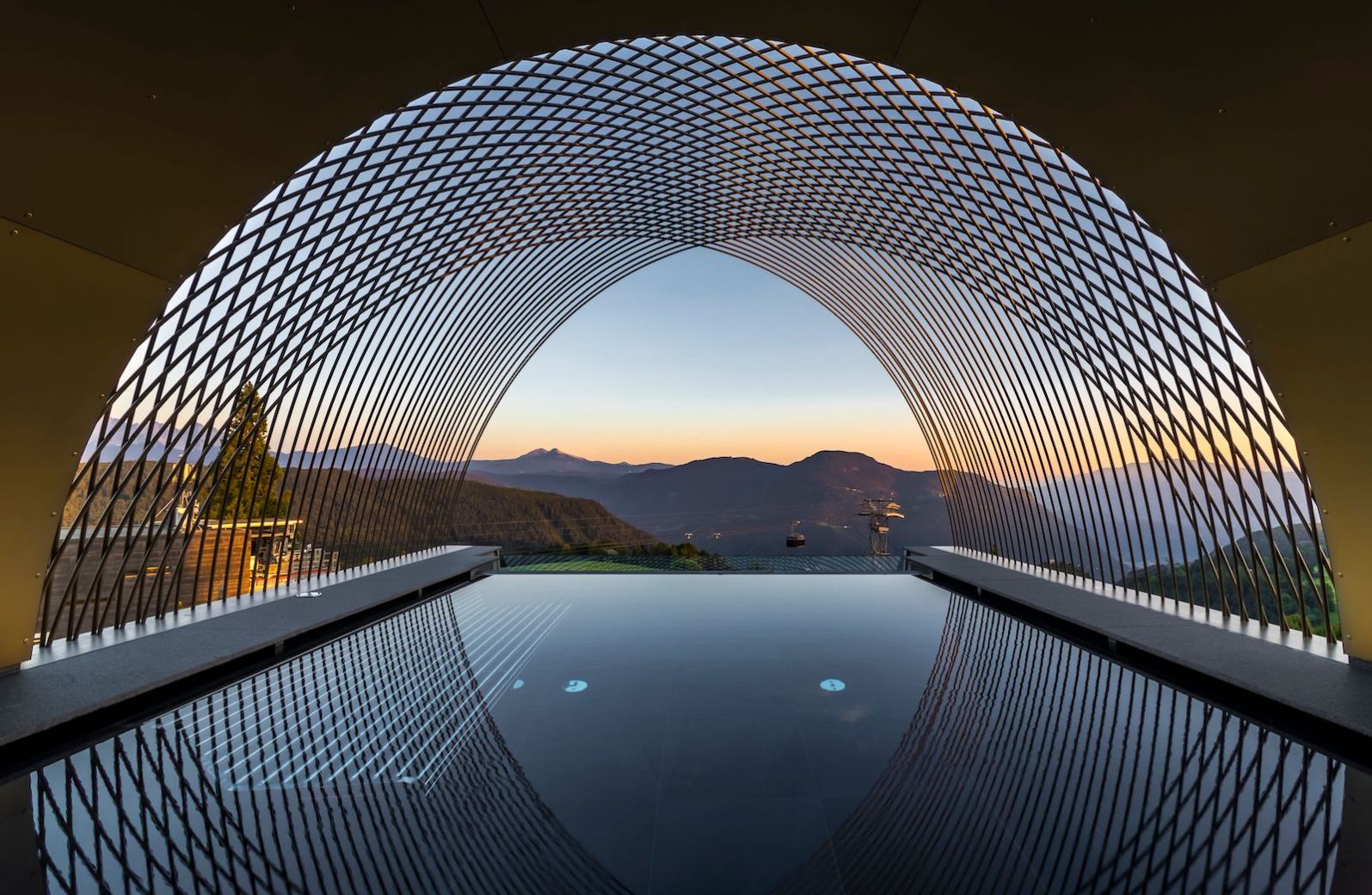
Bühelwirt
- Valle Aurina, Italy
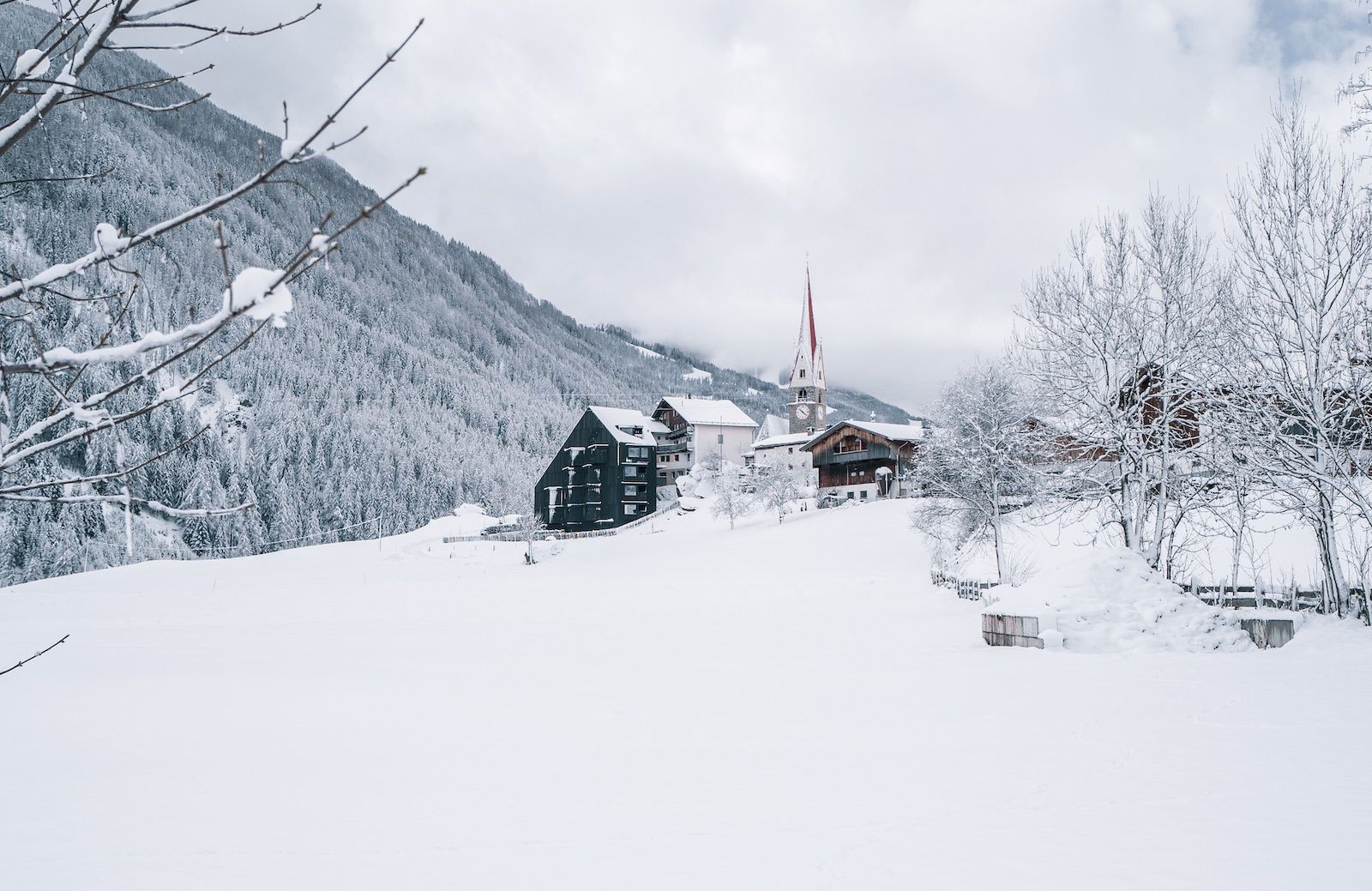
- San Candido, Italy
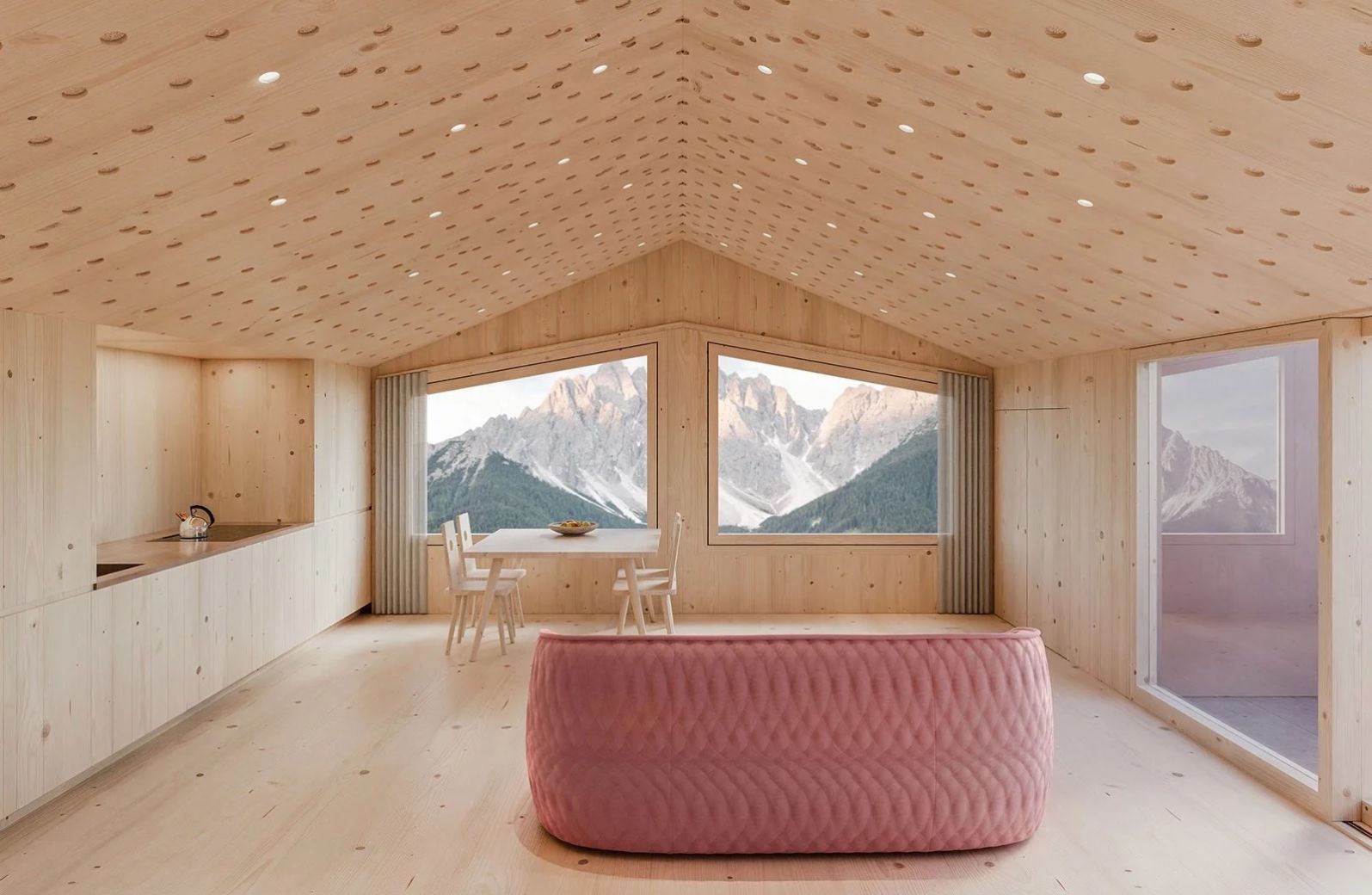
Villa Arnica
- Lana, Italy
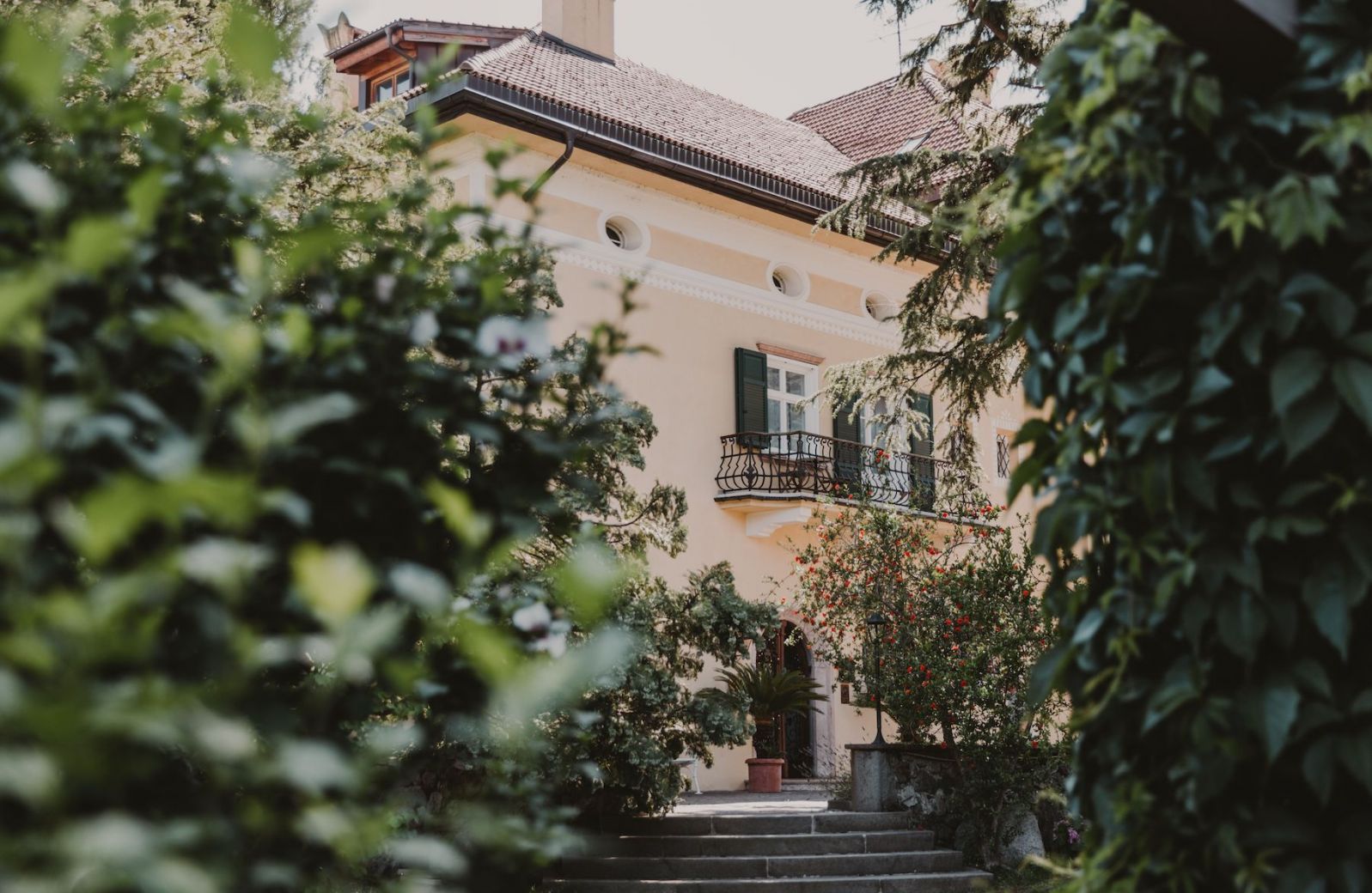
Ansitz Steinbock
- Villandro, Italy
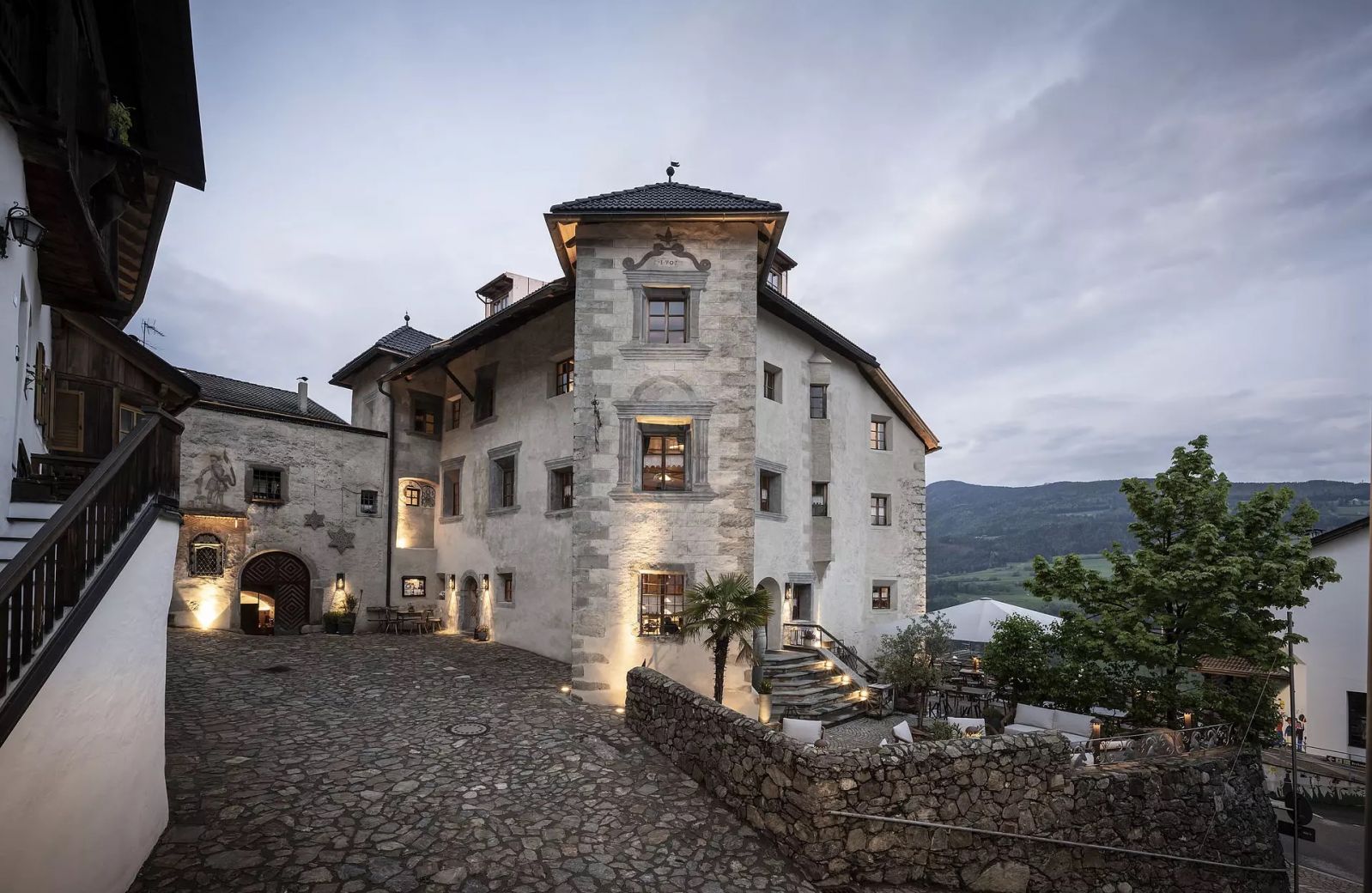
Hotel Weißes Kreuz
- Val Venosta, Italy
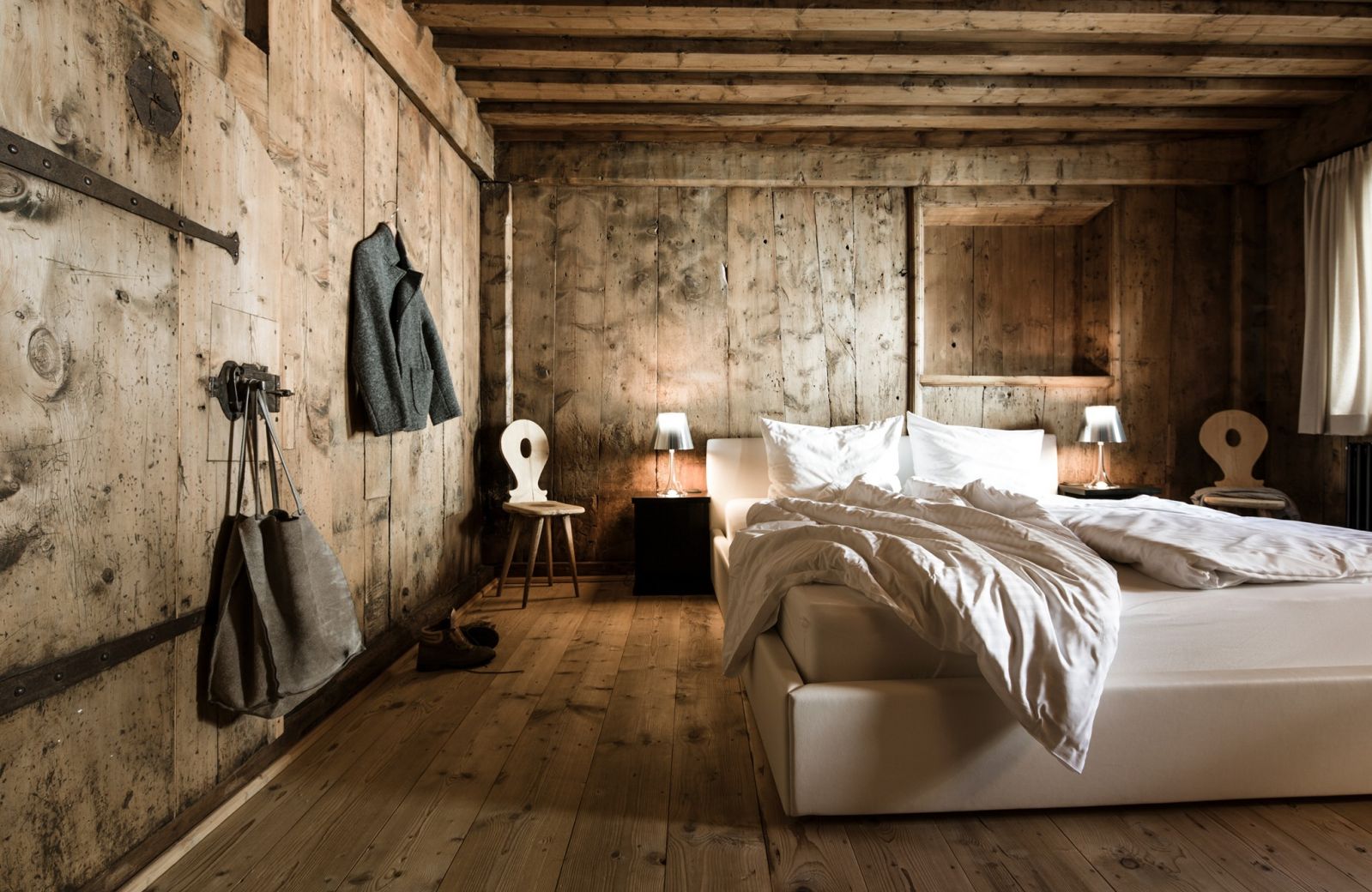
Seehotel Ambach
- Caldaro al Lago, Italy
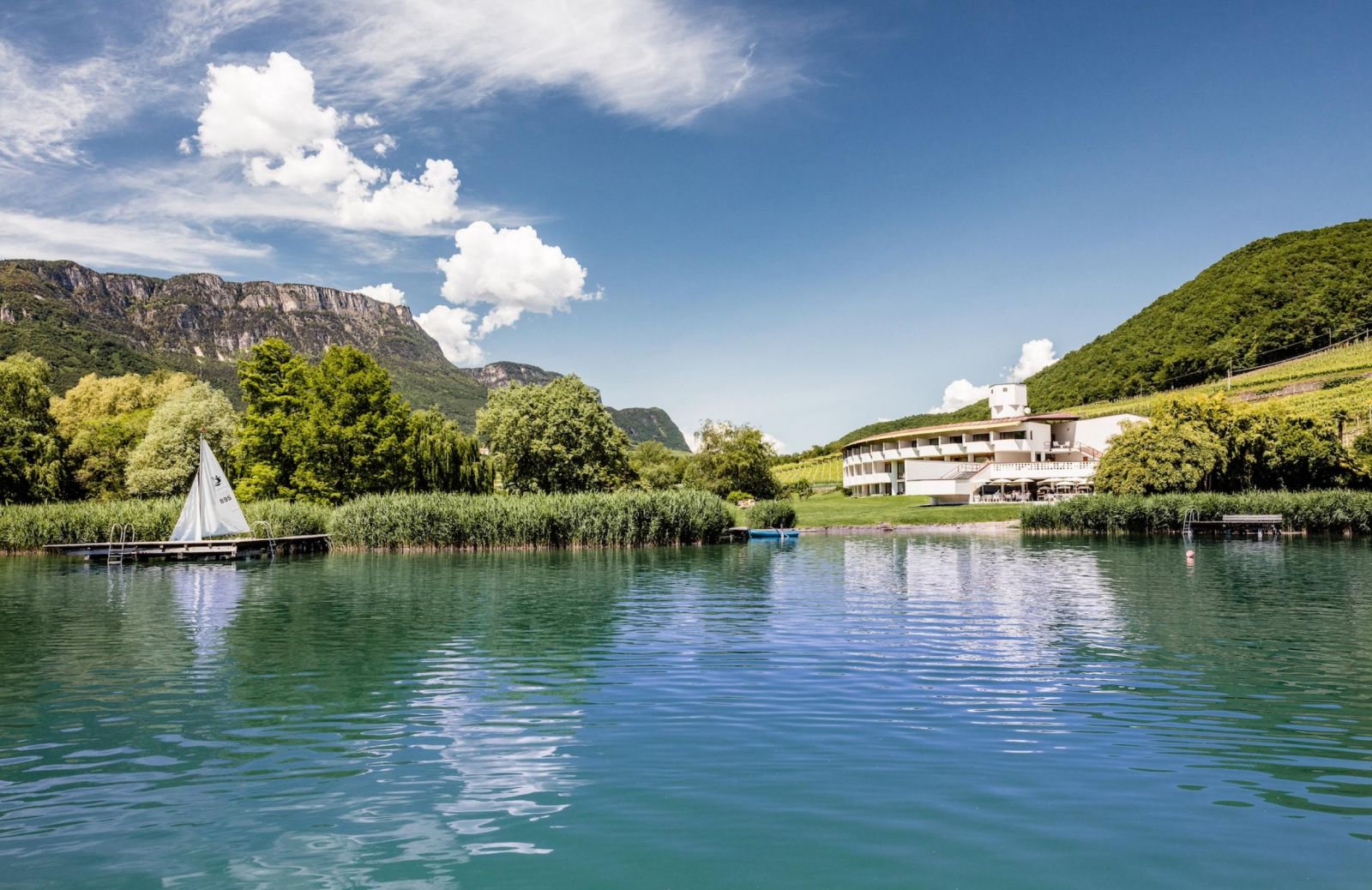
Anders Mountain Suites
- Plose, Italy
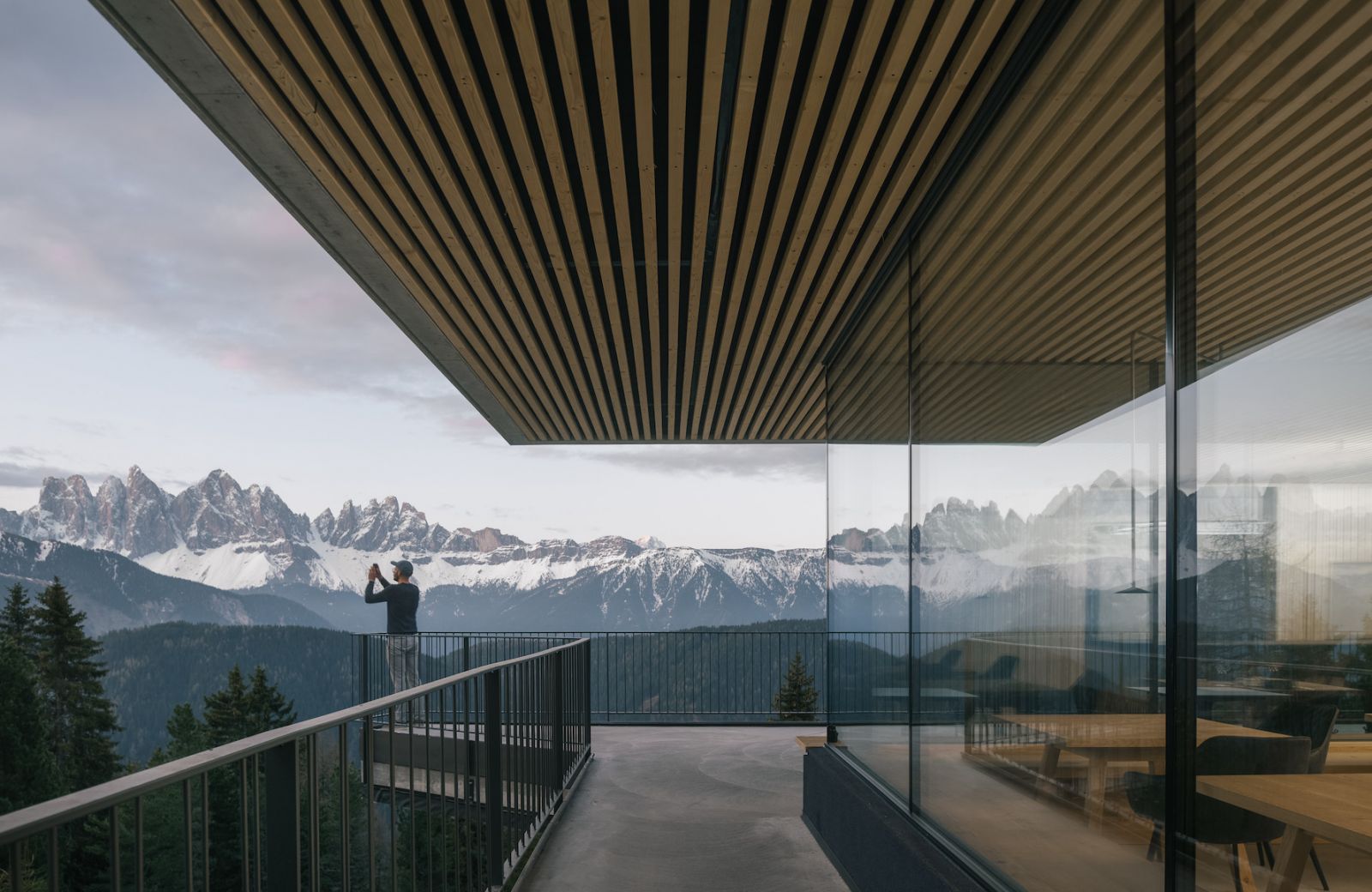
- Bressanone, Italy
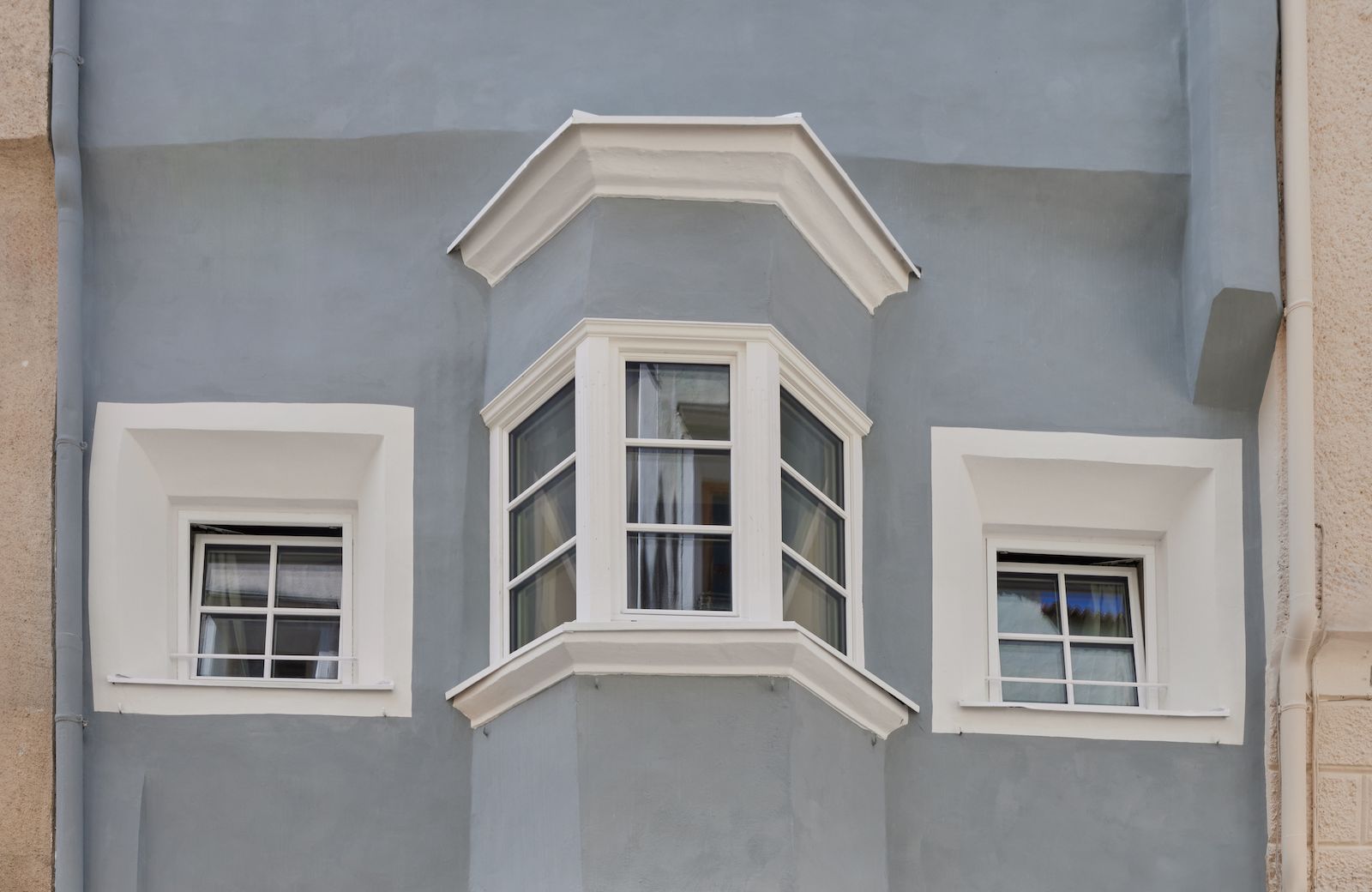
Hotel Milla Montis
- Maranza, Italy
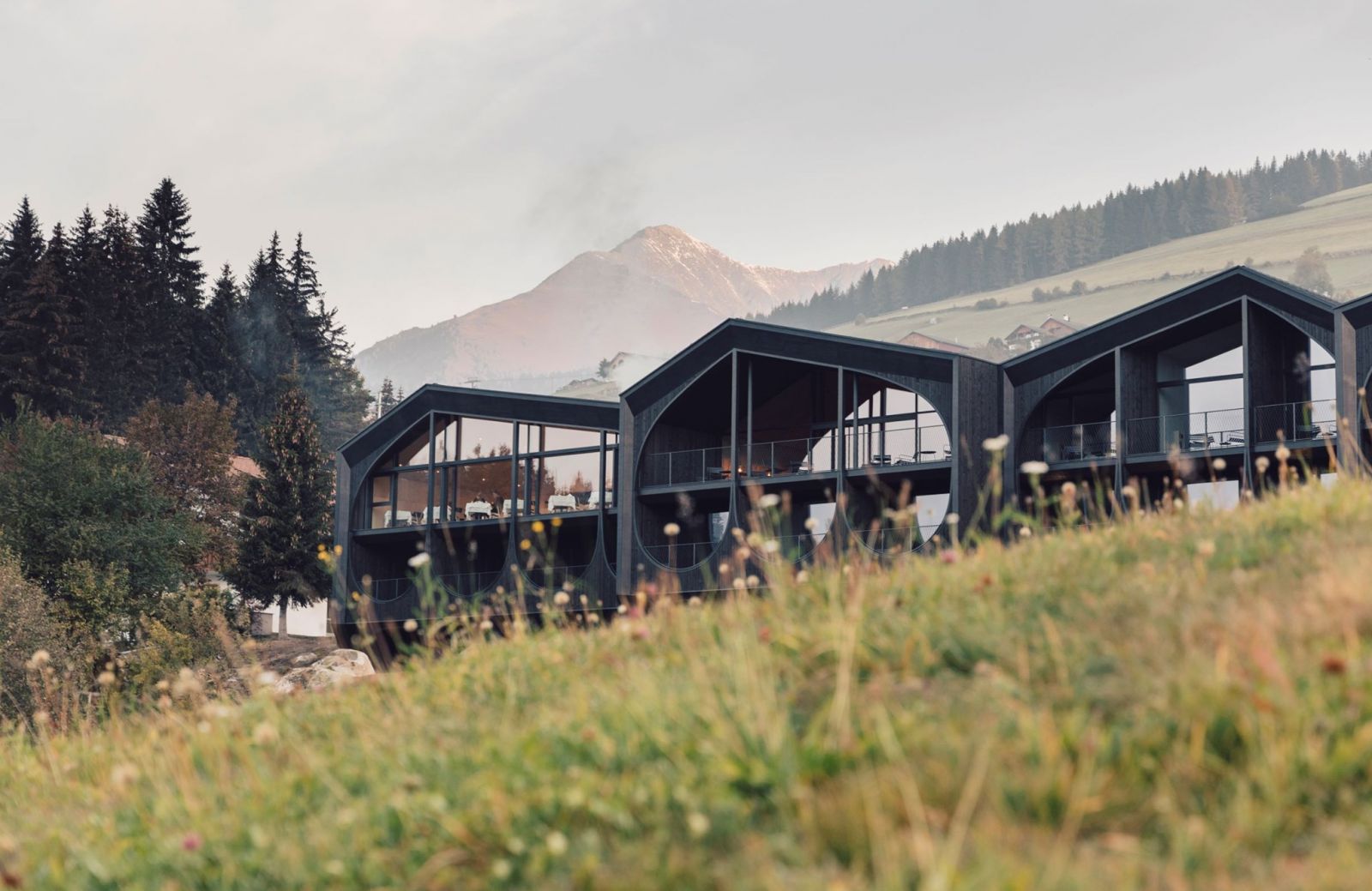
Parkhotel Mondschein
- Bolzano, Italy
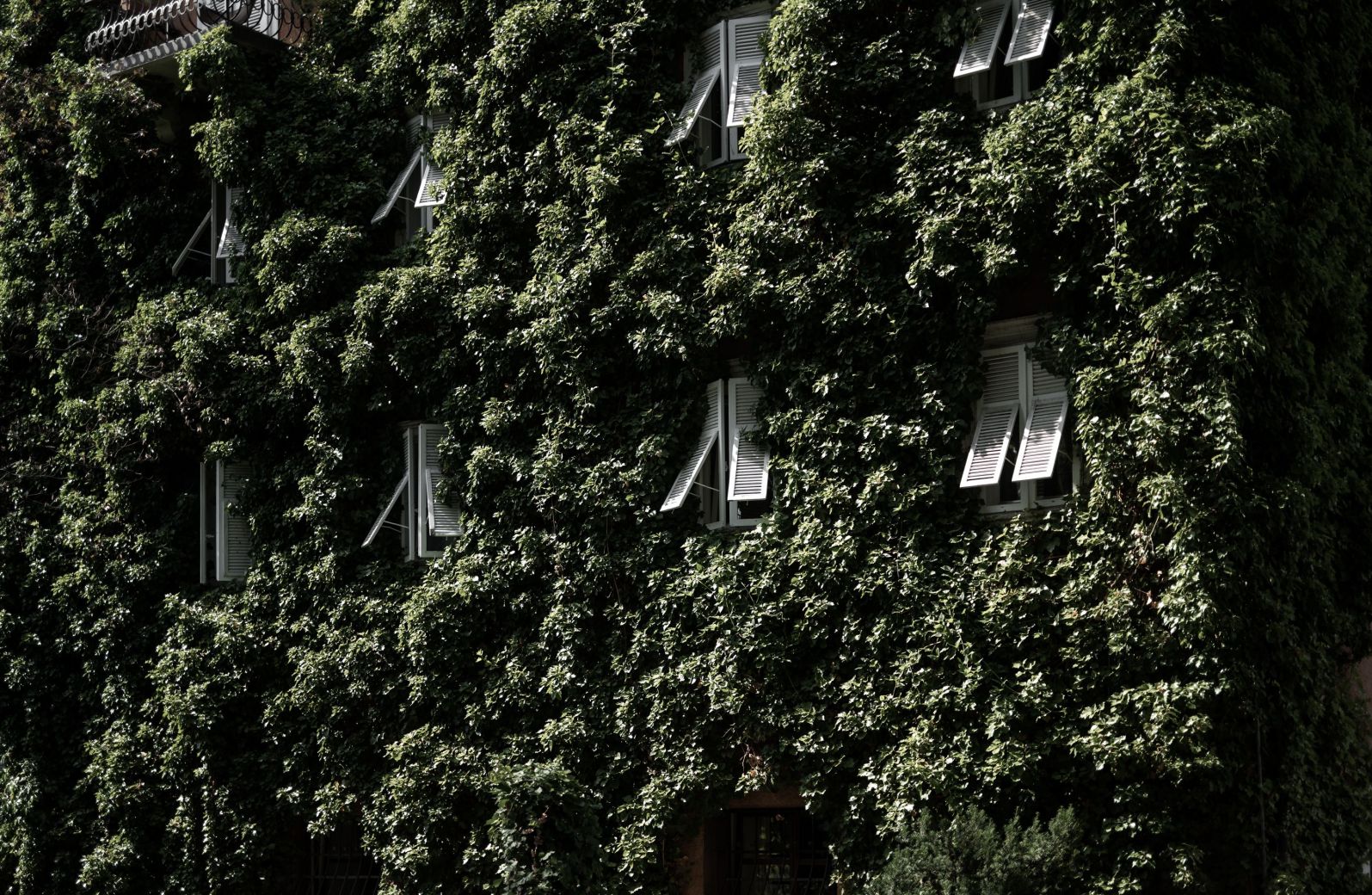
1477 Reichhalter
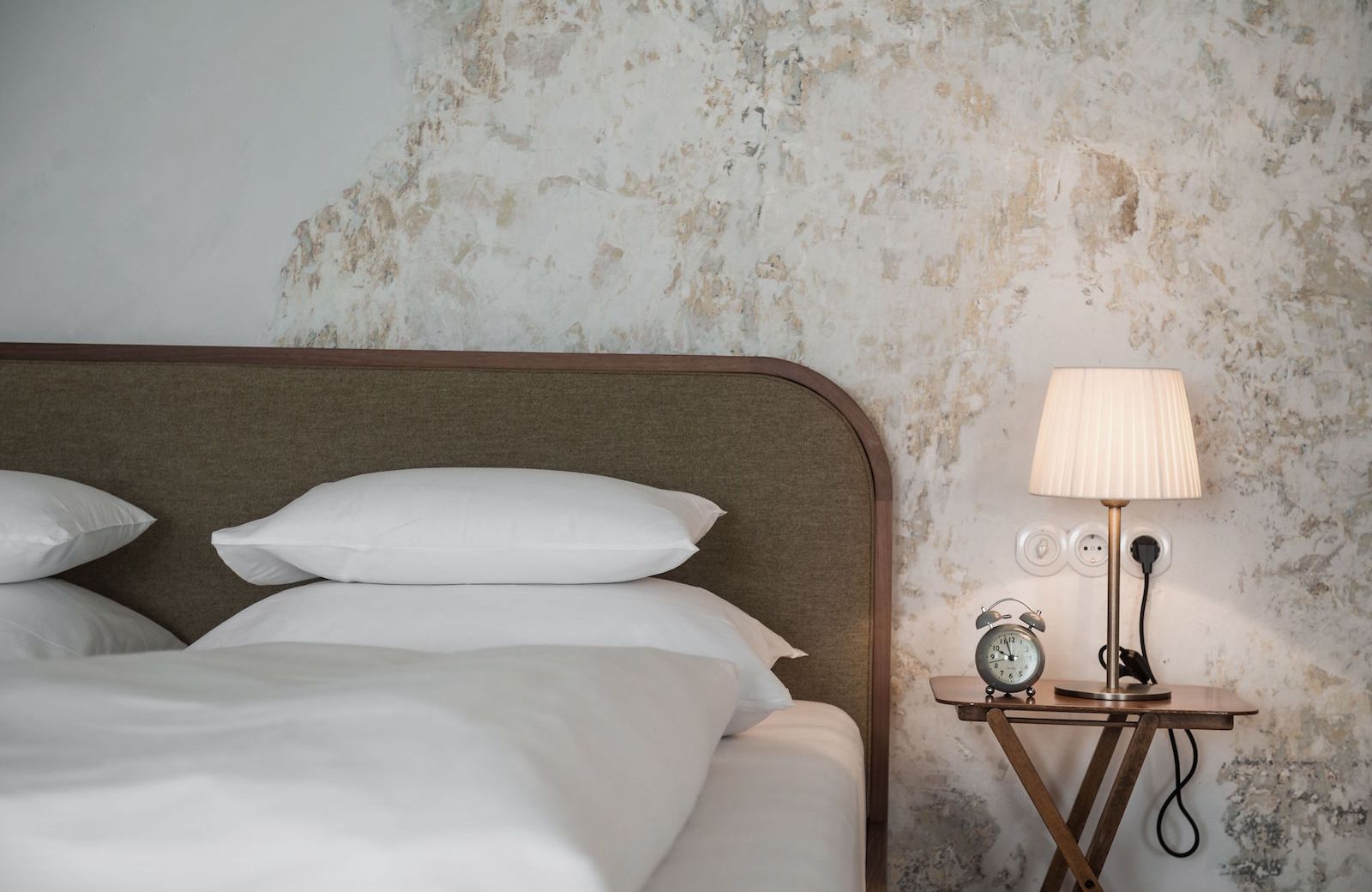
Lagació
- Alta Badia, Italy
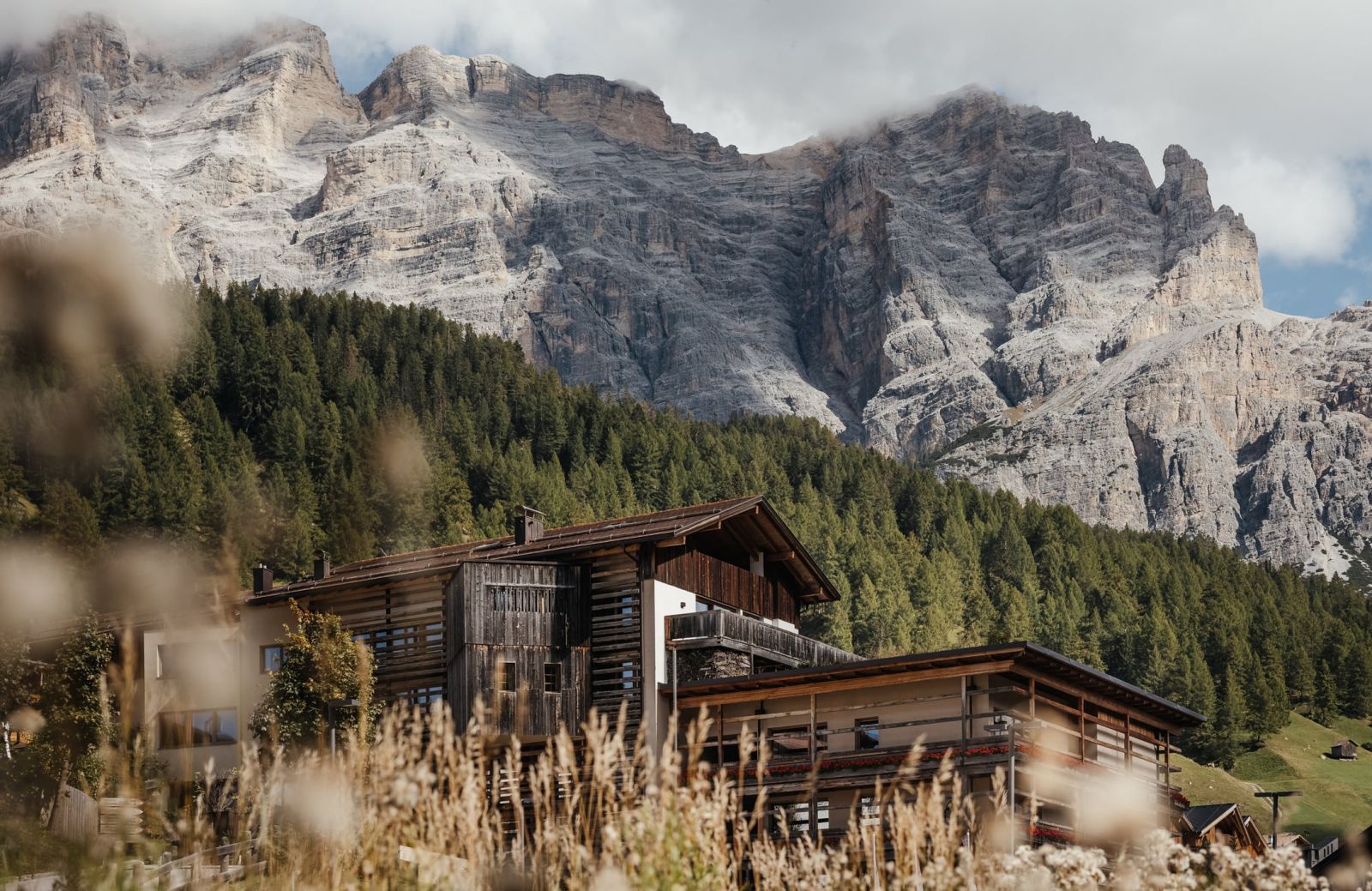
Schloss Freudenstein
- Appiano, Italy
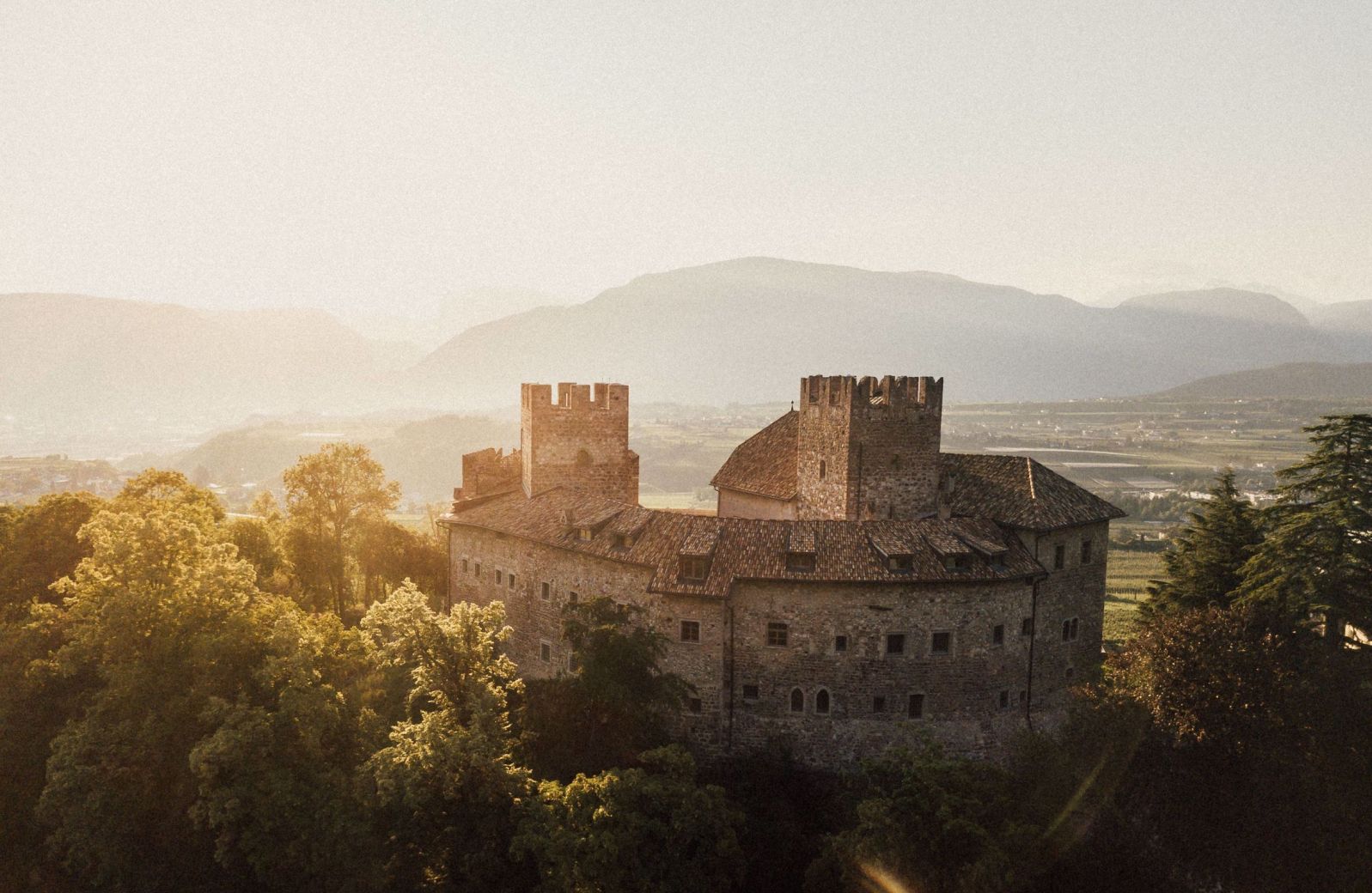
Schgaguler Hotel
- Alpe di Siusi, Italy
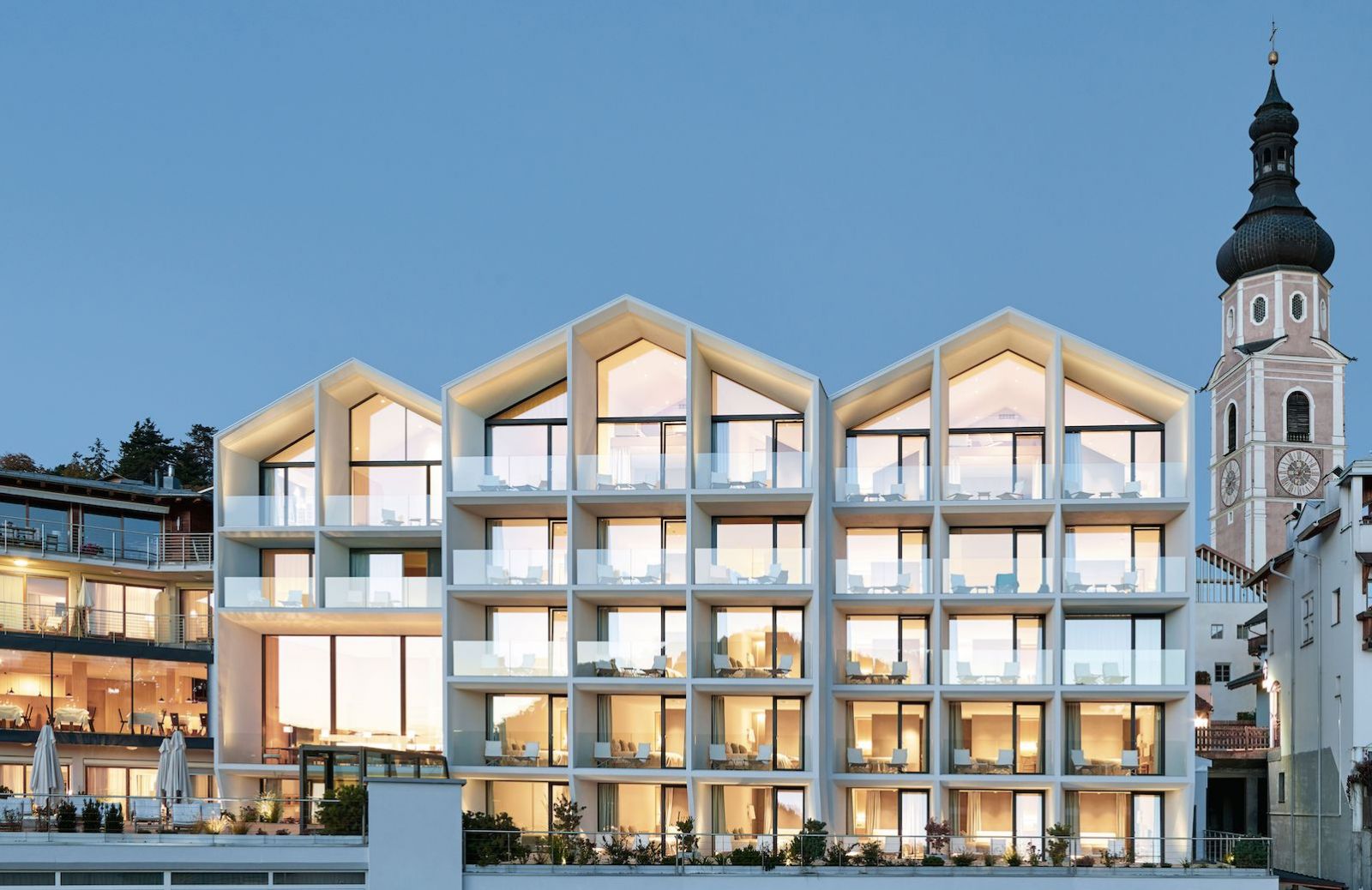
Casa al Sole
- Val Gardena, Italy
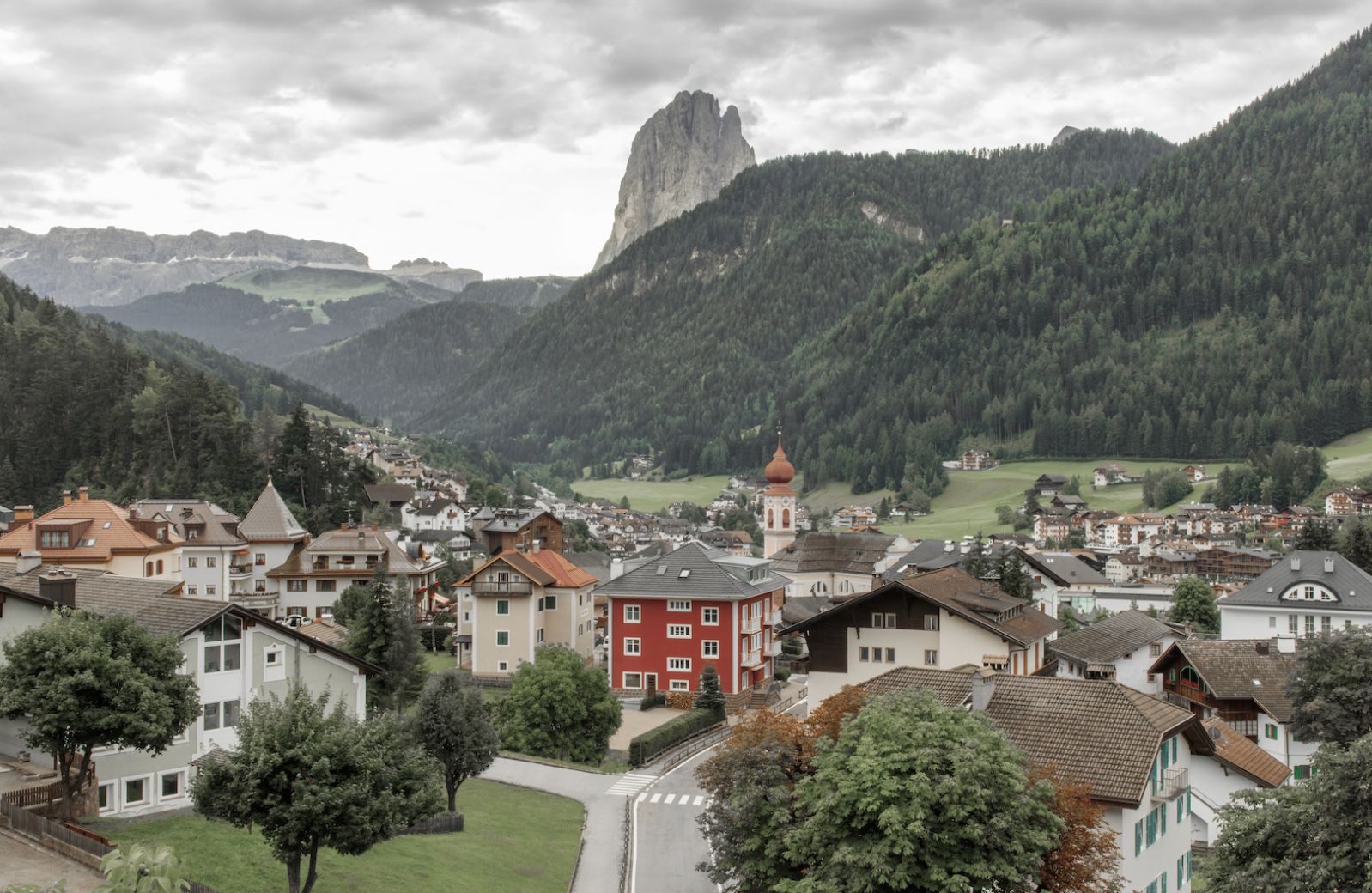
Magdalener Hof

Villa Fluggi
- Merano, Italy
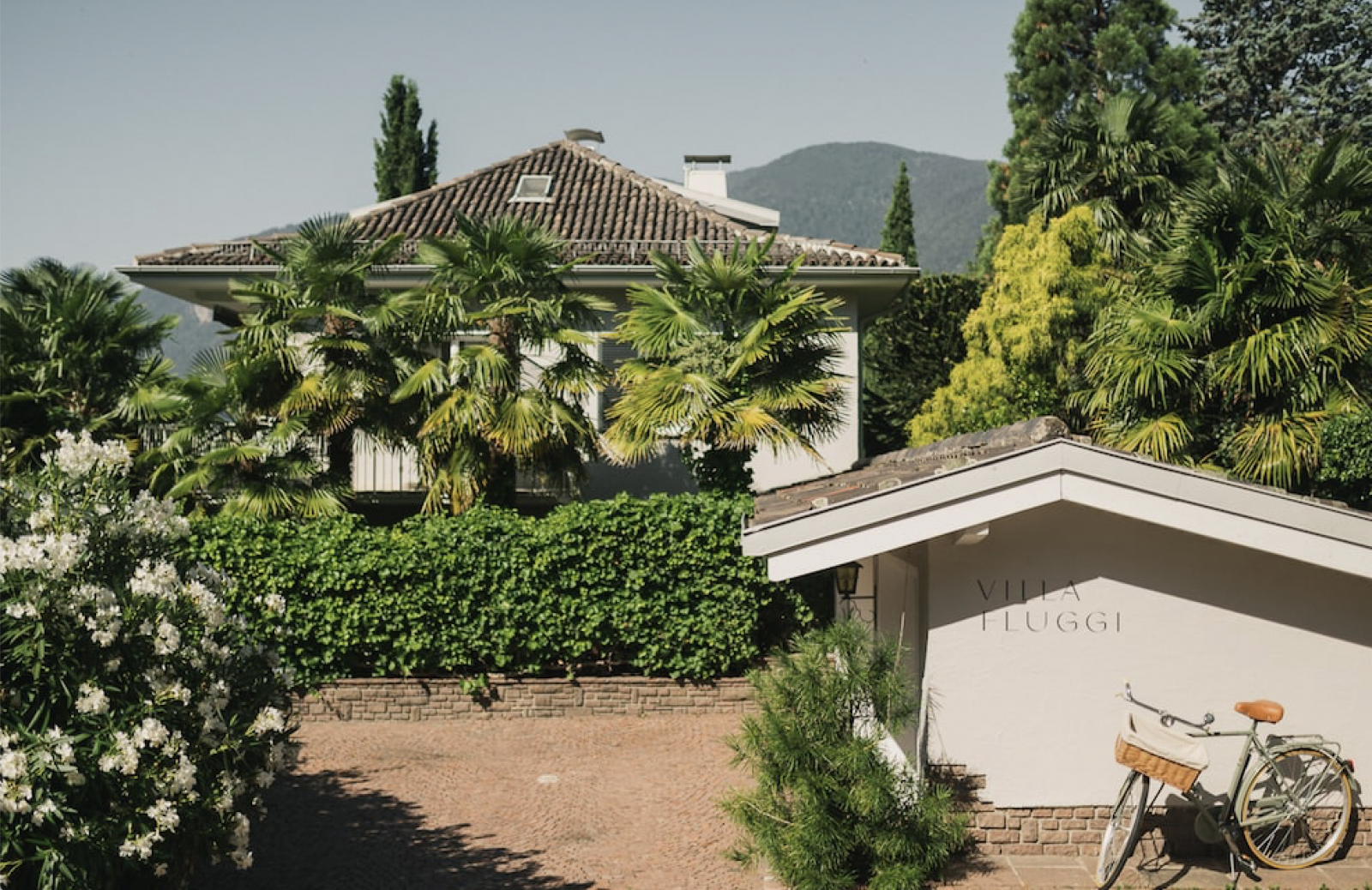
- Tirolo, Italy
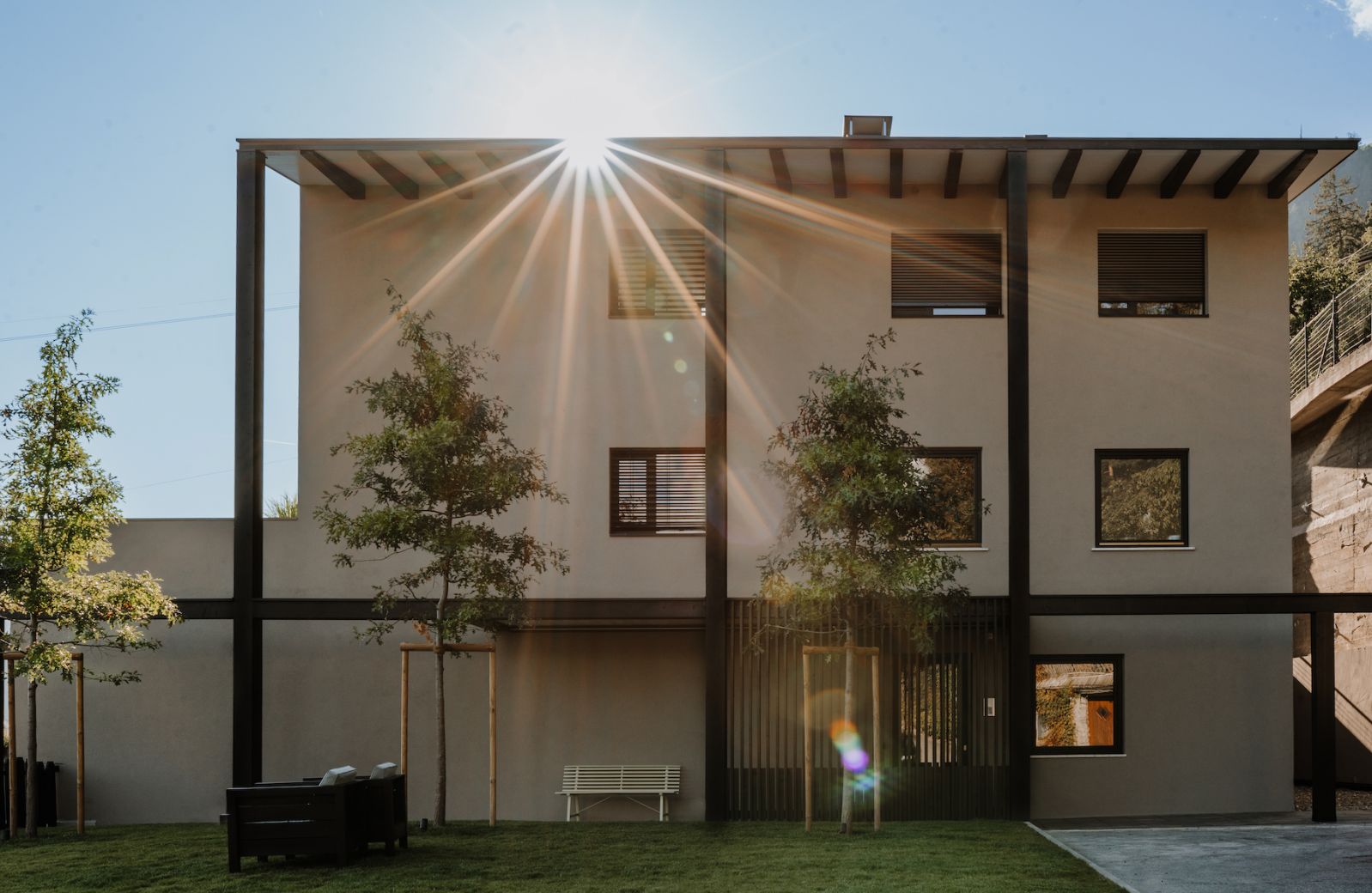
Vigilius Mountain Resort
- Monte San Vigilio, Italy
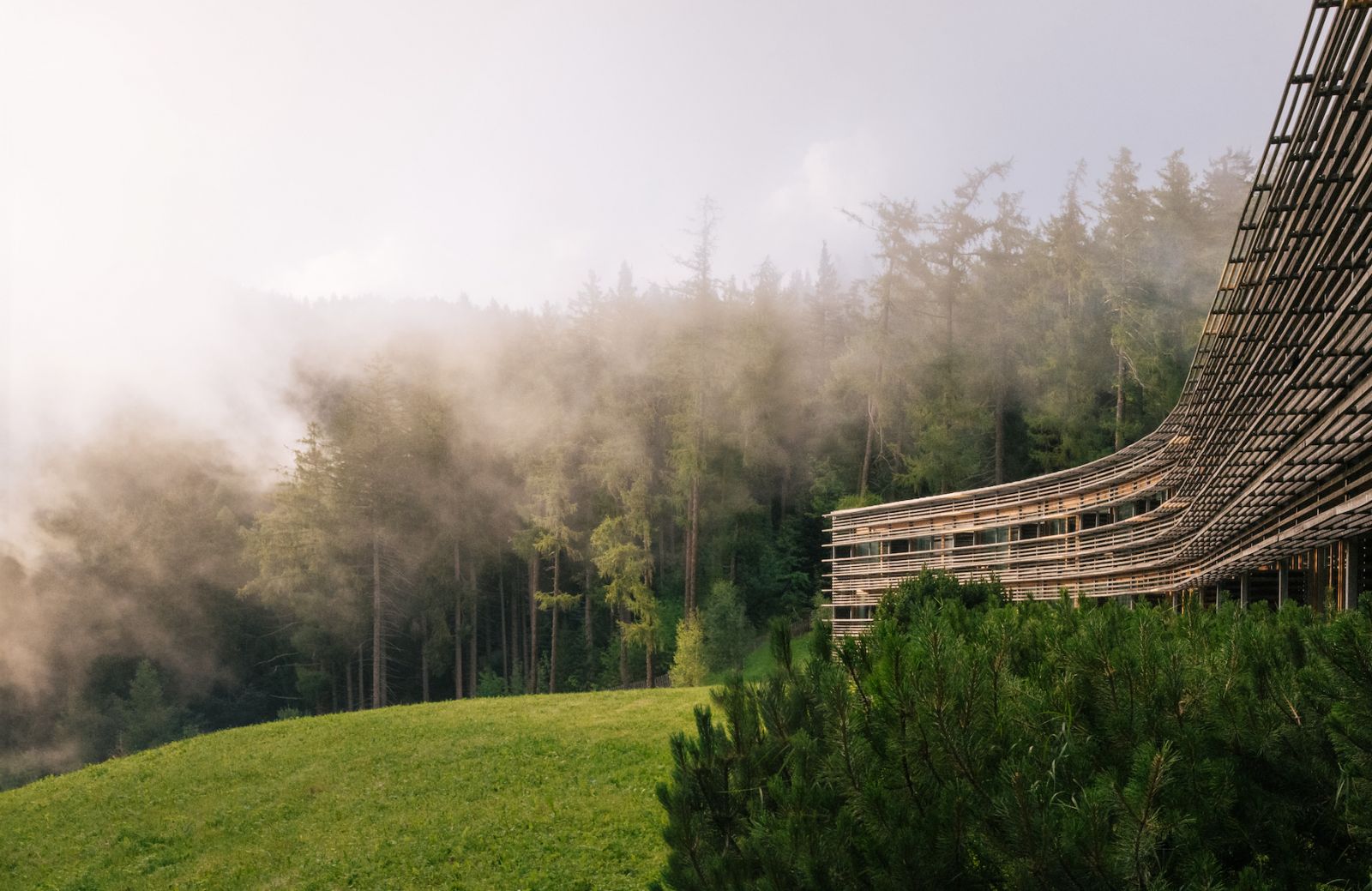
- Lagundo, Italy
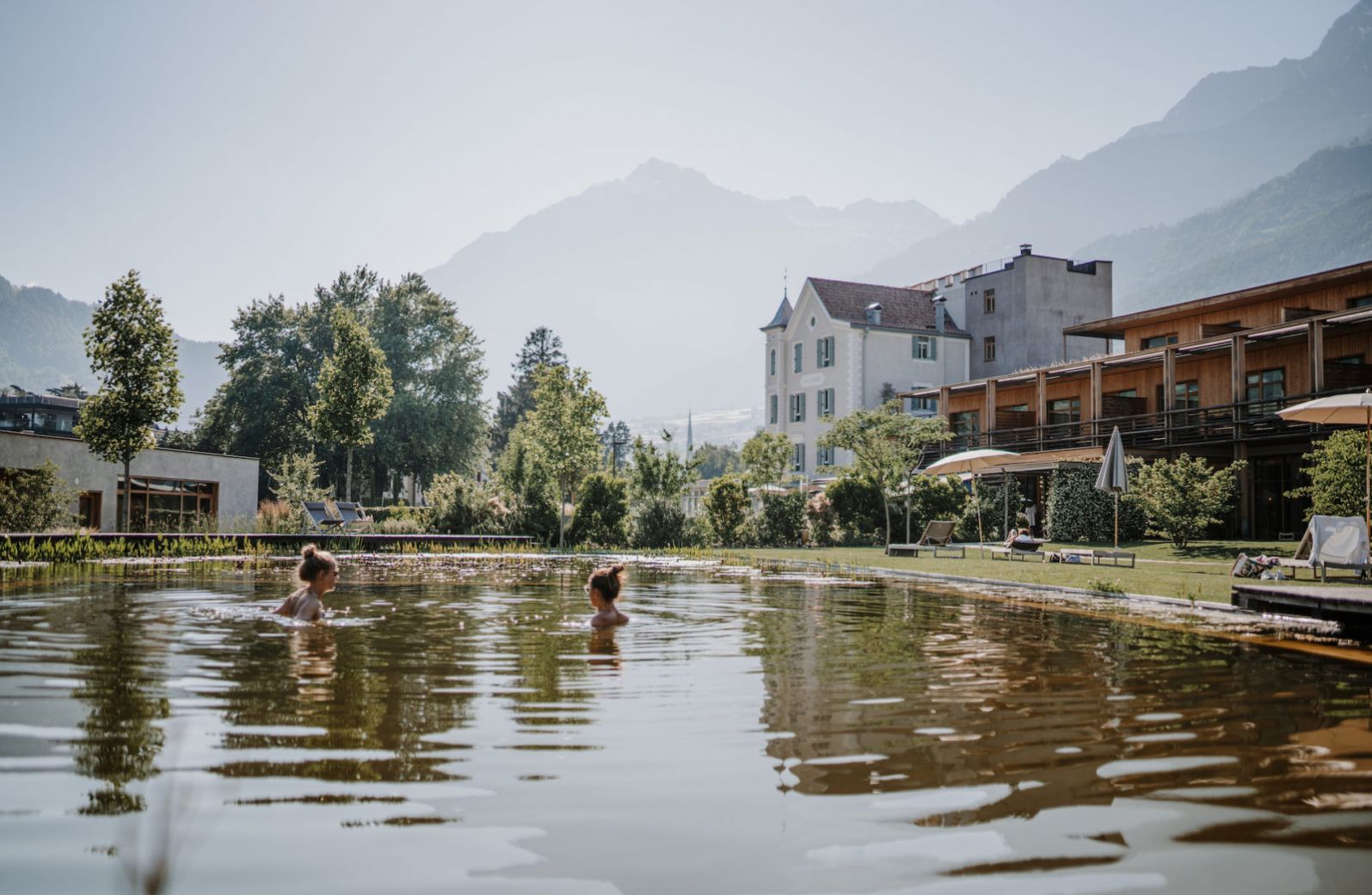
Miramonti Boutique Hotel
- Avelengo, Italy
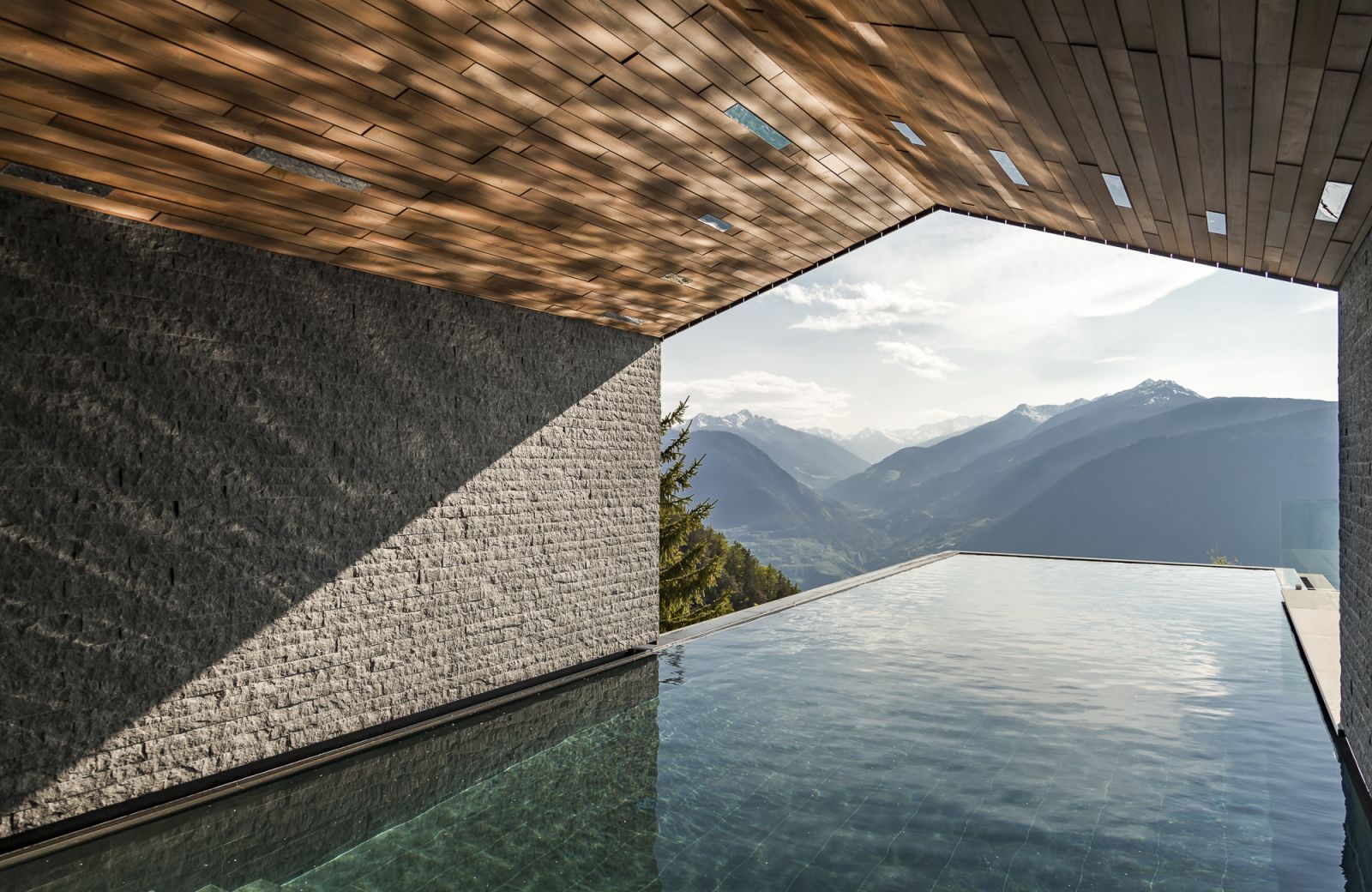
South Tyrol
'The most beautiful natural architecture in the world' – Le Corbusier, 1907.
From its perch in Northern Italy, South Tyrol/Süd Tirol or Alto Adige as it is also known is a small but wonderful pocket of Northern Italy that shares more than just a border with Austria ; this is an Alpinist lifestyle that flirts with Dolce Vita. A jewel of ancient cultures set in the mighty crown of the Alps nestled among the Dolomite mountains – a UNESCO World Heritage site. A chameleon of the Mediterranean and the Alps - expect snow-capped peaks to sun-kissed palm trees, traditional Tyrolean huts to strike-a-pose sustainable architecture, pasta to Knödel, dapper Italian styling to Lederhosen, Habsburger Villas to sleek modernist architecture, Grappa to Schnapps and the ski piste to botanical gardens .
More than forty regional dialects are spoken; South Tyrol has three official languages: German, Italian and around the Dolomites region of Alta Badia , the traditional Ladin is spoken - also home to the oldest Rhaeto-Romanic people in the Alps.
South Tyrol is all about a marriage of cultures, languages, traditions, progressive architecture and spectacular mountain nature – home to the Dolomites and the Tre Cime di Lavaredo/Drei Zinnen - a triptych declared UNESCO World Heritage Site in 2009. Le Corbusier arrived in 1907, and he famously declared the Dolomites 'the most beautiful natural architecture in the world'. A further 332 Jurassic peaks storm into the sky; the highest mountain is the Ortles/Ortler in Val Venosta/Vinschgau at 3,905 m., and the highest plateau in Europe, Alpe di Siusi/Seiser Alm . South Tyrol covers 7,400 km and has over 13,000 km of hiking trails; road cyclists adore the region for its legendary climbs. The provincial capital of Bolzano/Bozen is a vibrant university city and home to Ötzi the Iceman, the 5,300-year-old mummy discovered in 1991, protruding from the glacier near the Giogo di Tisa/Tisenjoch Pass. Blessed with more than 300 sunshine days a year and faded Habsburg grandeur, the second city Merano/Meran has been a tropical hotspot since the days of Empress Elisabeth of Austria. She came for the mild Mediterranean mountain air and healing waters. Thirdly, Glorenza/Glurns in the south of Malles/Mals is one of the world's smallest cities – a wonderful melange of narrow medieval streets, churches, and its famous castle.
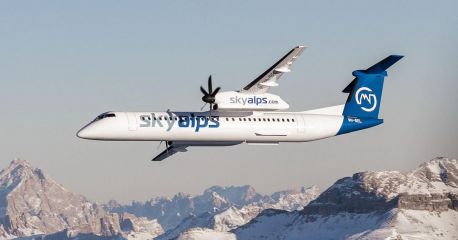
Fly direct to South Tyrol and the Dolomites
Get straight to the heart of the action with a new SkyAlps ski flight that lands directly from London, Antwerp, Billund, Copenhagen, Berlin, Dusseldorf, and Hamburg into Bolzano, the alpine capital of South Tyrol and perfectly placed for ski escapades in the UNESCO protected Dolomites.
more from Italy
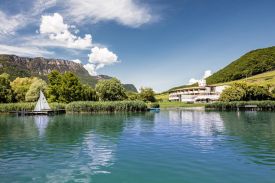
HOTEL - Caldaro al Lago, Italy
A groovy icon from the seventies, Seehotel Ambach, presides over the shores of Lake Caldaro in Italy’s South Tyrol with its perfectly formed, curvaceous marshmallowy walls of laid-back glamour and a canvas of tangerine, vert and oxide red, which drape mid-century furniture pieces.
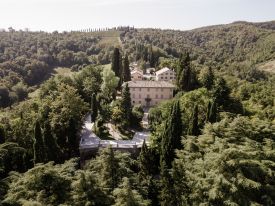
Guesthouse - Emilia-Romagna, Italy
Roncolo 1888.
Dating back to the 16th century and once the noble country pad of Marquises and Counts – the Roncolo 1888 is a boutique guesthouse-hotel set within 130-hectares of the Venturini Baldini viticultural estate.
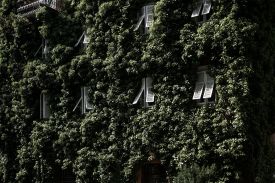
HOTEL - Bolzano, Italy
Remodelled over the centuries, 'Cinematic Italian' is the interior design mantra that consummately knits the restored historical elements to the nostalgia, style and flamboyance from the height of Italian film and design of the 1960s.
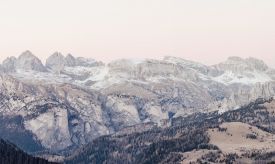
Alpe di Siusi
East of Bolzano is the long heralded as Europe’s largest alpine plateau in the Dolomites of South Tyrol | Alto Adige, the pastures and ski region of Alpe di Siusi, or Seiser Alm in German.
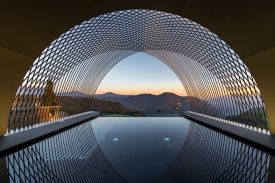
Guesthouse - Soprabolzano, Italy
With mountain eye-candy stretching out in every direction, this nest egg of casual style is the perfect bolthole for urbanites who love the rural idyll framed by modernity and crowned by its fabulous rooftop infinity pool of sheer wow.
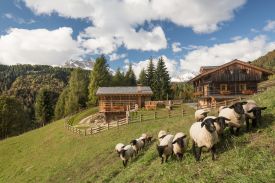
Hotel - Friuli Venezia Giulia , Italy
Borgo eibn mountain lodge.
Caramel timbers, robust chunky stone and larch shingled rooftops amplifies Alpine charisma buttered across the three ‘Malghe’houses of the Borgo Eibn which are draped in the views of the Sauris plateau and the Dolomites.
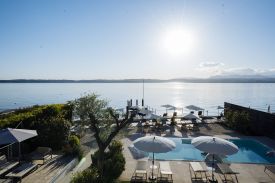
HOTEL - Sirmione, Italy
Aqva boutique hotel.
With the feel of a hip in-the-know club for lido-lovers, Aqva Boutique Hotel’s modular alabaster white building is fronted by a turquoise pool surrounded by sleek decking. Like a pointing finger, a private pier juts out onto the lake - perfect for those celeb moments.
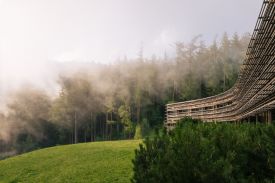
Hotel - Monte San Vigilio, Italy
The vigilius mountain resort was created by architect Matteo Thun, inspired by a fallen tree and the surrounding beauty of San Vigilio’s mountaintop landscapes. This wellness sanctuary rewrites the blueprint for an eco-design hotel, reached appropriately only by cable car.
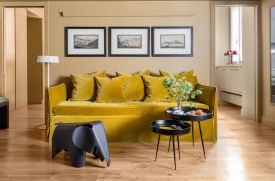
Apartment - Rome, Italy
Crossing corso.
Crossing Corso Apartment is a luxury design pad in the heartlands of Rome set within a historic 18th-century palazzo townhouse, which poignantly resides behind the Piazza di Spagna.
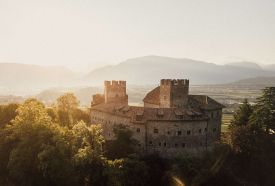
HOTEL - Appiano, Italy
Sleep under medieval frescoes, sweep down labyrinthine corridors, lord it up on the lofty ramparts or stroll through the Mediterranean garden, admiring the ivy-clad castle backdrop.
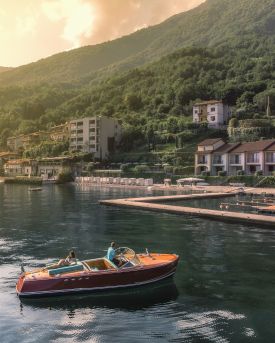
Hotel & Residences - Lake Como, Italy
A sleek modernist mansion sitting front row on the Lezzeno shoreline of Lake Como, backed by a mountainous canopy forest. An homage to Italian custom, style and native craftsmanship, Filario flirts with time-past decadence and chilled luxury.
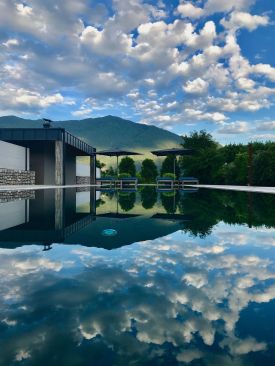
Guesthouse - Arco, Italy
Vivere suites and rooms.
A small designer outpost that is both rustic and sophisticated in its design simplicity – conceived to mirror the surrounding vineyards and Arco Mountains of Trentino, this rural idyll is an architectural bolthole that gives nature a stylish makeover, irresistibly close to Lake Garda.
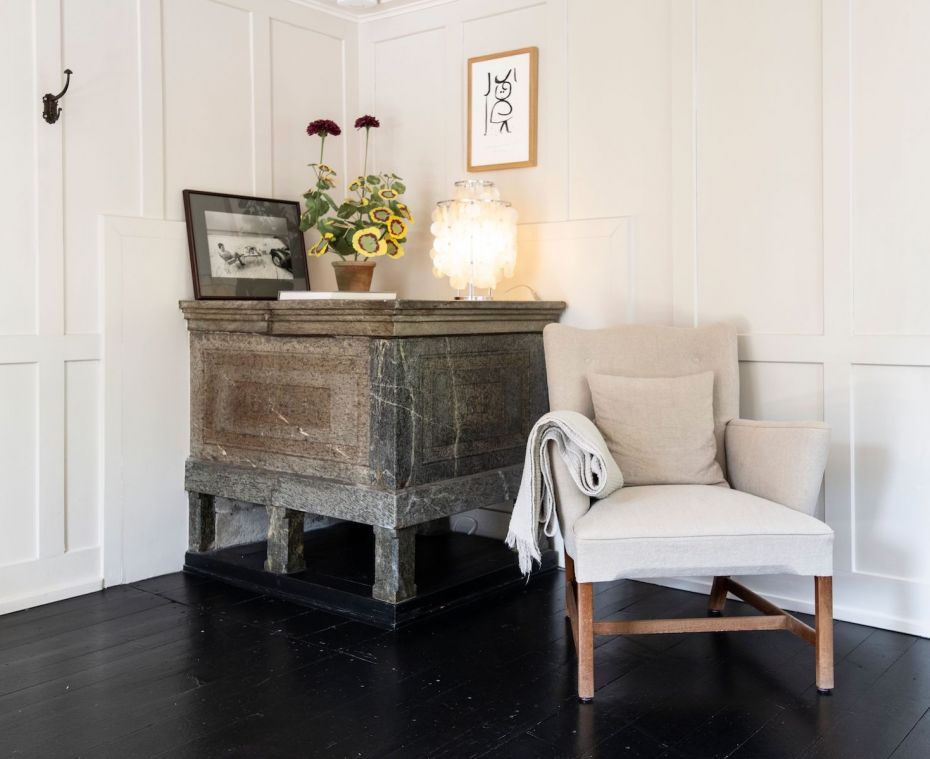
JOIN the AFICIONADOS
To receive our world of travel and style delivered straight to your inbox.

Making a Case for Ski Towns in Summer: Hiking and Fine Dining in Italy’s South Tyrol
Forget the skis. in the south tyrol region near the dolomites, delicious food and gorgeous hikes are best enjoyed in summer..
- Copy Link copied

Hikers can work up an appetite exploring South Tyrol’s charming villages and green trails, then reward themselves with decadent meals.
Photo by roxy & roy/1477Reichhalter
My dust-covered, red-laced Columbia boots created an awkward crunching noise on the manicured pathway that led to the restaurant’s reception. All I could think about was how inappropriately dressed I might be. But when I announced my name and reservation, the host didn’t so much as bat an eye at my leggings and Patagonia fleece. In South Tyrol, Italy, it seems, hiking and fine dining go together like spaghetti and meatballs. In which case, who needs snow in this ski haven that abuts Austria and the Dolomites?
Over the course of four days, I walked in every direction and trekked high above sea level, bypassing apple orchards on foot or floating over vineyards on a chairlift. In between all the activity, I ate at creative culinary spots worth the calories I had just burned. Here’s how to recreate the experience for yourself.

Stand-alone chalets surround an alpine lake at The San Luis.
Photo by Sara Lieberman
Day 1: Verano
Difficulty of hike: Easy to moderate
We began in the middle of the mountains at San Luis , a resort of lakeside chalets and tree houses so romantic and luxurious I couldn’t believe I was traveling with a friend and not on my honeymoon. Whether you want a simple jaunt or an all-day hiking affair, there are various options; wooden signs list the distances and estimated times of each trail to help you choose.
Our destination was the art installation Knottnkino, which means rock cinema. Only, there’s no actual screen—just two dozen theater chairs set up on the edge of a cliff overlooking the valley below. The walk to reach it from San Luis was mild, but full of pinch-me moments, like when we heard the sound of cowbells across wide-open green pastures dotted with the occasional lone cabin, or when we felt the pine needles crush beneath our feet as we wandered shady paths under soaring spruce trees.
We joined the trail from our hotel, but if you’re staying elsewhere, and have a car, park in the village of Verano to start what’s otherwise a 6-mile, 3.5-hour hike along trail No. 16 (toward the Oberwirt Restaurant and Grüner Baum Inn) before continuing along the Schütznbründlweg trail (No. 14) to the viewing platform. To make it a loop hike, return along No. 11 toward Leadner Alm Mountain Hut, which meets up with No. 16 again.
While we were gone, a breakfast spread had been delivered to our chalet and arranged on a white-clothed table set for two. Each of the stand-alone villas at San Luis features its own small kitchen, and there’s an elaborate checklist to fill out upon arrival, featuring everything you could possibly want for a morning meal—from seven different types of milk, including goat and rice, to eight different jams, including plum and wild berries.
What’s more, the accommodations have fireplaces, private saunas, decks with Adirondack chairs, and dipping tubs that overlook the property, which itself boasts a dreamy pool with sliding glass doors that allow you to swim from inside a lofted wooden building to the outdoor wilderness.
Rain, snow, sleet, or sun: Do not forget your swimsuit, and be prepared to saunter around San Luis in your robe—from your chalet to the pool to the spa to lunch to the chalet and back again—until 6 p.m. when the all-inclusive resort changes from “clothing sporty” to “elegant evening” for dinner in the dining room. That is, if you even want to leave your cabin at all.

The village of Merano is threaded with 18 kilometers of hiking paths, including the Tappeinerweg Trail.
Photo by Balakate/Shutterstock
Day 2: Merano
Difficulty of hike: Easy
After a late morning of lounging around on cushioned daybeds, we drove about 20 minutes on twisty, winding roads to Merano to trek one of the village’s 18 kilometers of paths. The small city is enchanting, with a mix of pastel-hued buildings from the Middle Ages and the belle époque, which we marveled at while passing under the arches and alleys of Steinach, the old town. Then we hit the Tappeinerweg Trail, a 2.5-mile, one-hour hike that runs from east to west above town. And the best part? You can skip some of the huffing and puffing by hopping on the one-person Küchelberg panoramic chairlift that glides over the hillside vineyards.
From the top, we made our way along paved pathways flanked by lush vegetation to eventually arrive back down by the Passer River, which splits the city in two. After crossing the two-arched, 17th-century Steinerner Steg Bridge, we wound our way through the city’s residential quarter—home to swanky gated residences, noble houses, and cool shops like Monocle where we were handed a free bottle of Torst beer to sip while browsing the well-curated selection of travel trinkets.
We didn’t have to change for dinner at Wirsthaus zur Blauen Traube , a contemporary restaurant in a 17th-century inn with creaky wooden floors in the tiny town of Algund, but we were glad we did. While the atmosphere is very, “Come right in, all are welcome here!” the cuisine that chef and owner Christophe Huber churns out is elevated.
The menu draws on the area’s melting pot of Italian and Austrian flavors, turning out beetroot gnocchi stuffed with ricotta just as easily as wild venison with potato dumplings—both plated so exquisitely you know there were precision tongs and squeeze bottles involved.
When it came time for dessert, I balked at ordering the tarte tatin since I live in France, but Huber (who came out to talk to all the guests) insisted—and thank goodness: Juicy, piping hot, locally grown apples sat atop the most buttery, flaky crust only made more divine when topped with vanilla ice cream.

The Brandis-Waalweg Trail leads through orchards to a waterfall.
Day 3: Lana
Difficulty of hike: Moderate
The next day we took things down a notch—in elevation, not style—by checking into Villa Arnica , a restored 1925 residence that’s been transformed into a nine-room garden property in the nearby village of Lana. Although we were tempted to stay put when we saw the in-ground pool surrounded by gardens of freshly planted herbs, we’d heard about a nearby waterfall so we walked through the pedestrian-only part of town and followed signs for Brandis-Waalweg.
Most of the dirt trail was flat, but the scenery was so spectacular it was hard to care about how little our muscles were working. To our left, orchard farm after orchard farm revealed a wealth of apples (the area produces 70,000 tons each year), while to our right, vines hung heavy with the many red-wine varietals produced in the area: vernatsch, lagrein, pinot noir, and merlot.
Lana is also home to 40 churches, chapels, monasteries, and convents that date back to the Middle Ages, and we spotted tall steeples against the green-covered alpine peaks in the distance. The path became a narrow, wooden boardwalk butting against black boulders just before we arrived at Cascata Waterfall. Other than an orange-spotted black lizard sunning itself on a rock, we were the only ones there to catch its mist.
I continued to work up a sweat (and my appetite) by walking from where we started in Lana along the SS238 road to the restaurant Miil where I’d booked a solo midday meal. I wouldn’t normally wear hiking attire to what appeared online to be a fancy place, but it was daytime and I didn’t have the energy to retrace my steps. Thankfully, I was seated in the more casual garden area where my apparel choice didn’t stick out too much among the diners wearing khaki pants and button-down shirts.
Overall, the atmosphere is chill modern meets old school—or old mill, as it were. The multiple dining spaces range from the ivy-covered courtyard outside to wood-beamed cozy rooms inside. I ordered salmon ceviche with beets, passionfruit, and yuzu mayonnaise and paccheri pasta served with small clams and leeks. I skipped a main, but options included calf’s liver with local apple puree and octopus with mozzarella and shaved zucchini.
Not one to turn down something sweet, I topped it all off with a scoop of house-made cacao sorbet served with rosemary cream. Oh, and I was surprised, but not mad, to be charged two euros for the loaf of fresh bread that arrived at the start along with a few slices of prosciutto and the creamiest truffle butter ever. (This, I later learned, is common in these parts.)
The meal wasn’t cheap, but it was memorable. At dinner, it only offers a seven-course tasting menu for 75 euros where, as the website explains, you “decide nothing” and they cook “what nature gives them.”

Martina and Andreas Heinrich, the owners of boutique hotel and restaurant 1477 Reichhalter, invite guests to “try something unusual.”
Photo by Lilli Persson (2)
Day 4: Somewhere in the forest
My last day’s outing wasn’t a hike, nor was it really a walk, nor was it an aimless wander—though, I didn’t have a direction or destination per se. Rather, according to my guide Martin Kiem of Frontier Wellbeing , a certified organizational psychologist and nutrition, mindfulness, and meditation coach, our purpose was to slowly and purposefully walk deep into the forest for a “bath,” during which we’d just see and feel and be. In fact, in practicing the ancient Japanese art of shinrin-yoku, we didn’t even cover more than 500 meters, yet we were out there for nearly four hours!
The time surprisingly flew by while Kiem led me in a handful of exercises, such as sitting cross-legged at the base of a giant tree, closing my eyes, and placing my forehead on the trunk. This was meant to practice symbiosis; to see the tree as more than just an inanimate subject.
My favorite activity, though, was when Kiem gave me a white paper frame to throw into the air to see where it landed and what it “framed.” The randomness of tossing the paper, as opposed to placing it intentionally, was a great lesson in letting go and appreciating the beauty in all things, as opposed to the beauty you make or choose.
The forest bath felt like a reward in itself, but, hey, a girl still deserves a good meal—so for dinner that evening my friend joined me at 1477 Reichhalter , a boutique hotel and restaurant owned by the same second-generation Italian hotelier who runs Villa Arnica. Here, Martina and Andreas Heinrich invite diners to settle in to what feels like their home and “try something unusual,” as it states on the menu, such as spaghettini with squid ink and smoked curd cheese or veal dumplings with cep mushrooms and creamy potatoes.
We started simple, though, with a mixed green salad of grapes, fresh goat cheese, and beets, and slowly added more drama by trying the risotto with fermented black garlic and braised beef shoulder—and then the rib eye with crunchy, tangy olives, eggplant cream, and colorful braised carrots. For dessert, we couldn’t decide between the passion fruit crème brûlée with chocolate ice cream or the panna cotta with marinated plums in puff pastry, so we ordered both.
The food coma had taken over by then so I can’t remember much more than the fact that all of it—the panna cotta and the crème brûlée, the forest bath, the waterfall trek, the cliff cinema hike, and even the momentary anxiety of wearing my muddy boots to a fancy restaurant—was very much worth it.
>>Next: 5 Urban Trails That Connect U.S. Cities to the Great Outdoors

Why Visit South Tyrol: The German-Speaking Alpine Part Of Italy That Was Once Austria
South Tyrol not only offers some of the most spectacular mountains of Italy but also a taste of the Germanic language and culture in Italy.
Quick Links
What to know of the northern german-speaking province of italy, the alps, castles, & attractions of south tyrol, the alpine german culture & traditions of south tyrol.
In Italy, they speak Italian. Or at least that statement is mostly true. South Tyrol is an autonomous province in Italy and its official language is both Italian and German. It is not just Switzerland and Austria where visitors can experience Alpine German heritage and culture. South Tyrol is sometimes known as the heaven of the Alps and offers a stark contrast to the ancient Roman ruins of Rome and the pizzas of Naples.
South Tyrol is a favorite destination for hiking and skiing. It is one of the most stunning destinations to discover while visiting Italy. While exploring the Italian Alps, visitors should also plan to drive the Stelvio Pass near the border with Switzerland. It is famous for being one of the most stunning alpine road trips in Europe.
South Tyrol was formerly part of Austria, but it was taken over and seceded to Italy after the First World War as the Austro-Hungarian Empire collapsed.
- Size: 7,400 Sq Km or 2,857 sq miles
- Population: 534,000
- Largest City: Bolzano (& Regional Capital)
- Languages: German & Italian
South Tyrol enjoys a significant amount of self-government and is the wealthiest province in Italy. The northern part of historic Tyrol (it is called "South" Tyrol) is part of Austria. The southern province, the Italian Autonomous Province of Trento is also part of historic Tyrol but Italian is the most spoken language there.
Travelers should also visit Austrian Tyrol and also discover the beautiful Austrian city of Salzburg where the famous musical movie "Sound of Music" was filmed (and see first hand if the hills are indeed alive with the sound of music or not).
Today the German heritage persists in South Tyrol, with around 62.3% of the population using German as their first language (Standard German is written, but the Austro-Bavarian dialect is spoken). About a quarter of the population speaks Italian (mostly in the cities). The province is also home to the minority language Ladin. Ladin is a Romance language mostly spoken in the Dolomite Mountains.
Related: The Swiss Alp's Hotel Belvedere Is So Iconic It Starred In James Bond
South Tyrol is dominated by the Dolomites and the Italian Alps. It is a must-visit for anyone planning to visit the Italian Alps. During winter, South Tyrol is a favorite for skiing and snowboarding. In the summer, it is a great place for hiking and biking. The Dolomites are a UNESCO World Heritage Site and are full of cultural diversity. It is a place of contrast with both Mediterranean landscapes and Alpine peaks.
South Tyrol is dominated by charming towns, dramatic scenery, and superb wines.
There are local castles to be found in almost all of the valleys of the region, while glaciers crown some of the mountain tops. Then there are churches and monasteries to seek out - like the Saben Monastery above Eisacktal (which is also a landmark of South Tyrol).
South Tyrol has around 90 museums, including the Messner Mountain Museum Corones at the top of Mt. Kronplatz and the Museum of Archeology. Additionally, visitors should also visit the historical Ritten Railway.
Perhaps the oldest and most famous mummy in Europe is Otzi the Iceman that was found mummified in a glacier in the alps. Visitors can see Otzi the Iceman at the South Tyrol Museum of Archaeology . How the life of the Neolithic man, Otzi, was reconstructed is one of the most fascinating stories of archeology .
Related: Why Slovenia Is Cheaper Than Switzerland, But Just As Good
"Life in South Tyrol is strictly connected to numerous customs and traditions that are still celebrated in the whole region or partially only in several villages." - South-Tyrol.com
In some respects, visitors may feel more like they are in Switzerland or Austria than in Italy. Visitors can come to just see the castles and fairytale-like landscapes of South Tyrol, or they can also take the time to discover the more traditional side of the province.
Notable local traditions in South Tyrol include the Sacred Heart Fires, the Kirchtag Michl tree, and a Thanksgiving procession. Sacred Heart day is held on the second Friday after Corpus Domini. The following Sunday, the Sacred Heart fires are lit all around the province. The fires are intended as "blazing proof" of the irresolvable vow made by the Tyroleans in 1796.
Kirchtag Michl involves a life-size and masked doll that's put on the top of a high tree. The next day, both the doll and the tree are put down to the ground.
Go in the autumn, and visitors can see customs like the homecoming of livestock. Those visiting during the Christmas season should consider visiting St. Nicholas and Krampus.
20+ Inspiring Photos of South Tyrol & the Dolomites in Autumn
UPDATED: November 20, 2023

Autumn is an especially beautiful time of year no matter where you travel in Europe. Whether trekking old-growth forests ablaze with fall colors or reveling in centuries-old harvest festivals, every turn offers you another enchanting way to savor the season.
However, there is one European destination we think you should etch on your fall travel wish list above all others: South Tyrol.
Why? This mountainous jewel enviably sits in a rare corner of the world where Alpine wonders crash into boundless Mediterranean beauty. Such a surprising contrast of landscapes produces arresting scenery in every season. But the vibrant kiss of autumn elevates the medley from stunning to utterly jaw-dropping.
Scroll on to discover why fall is South Tyrol’s most alluring season.
CONTENTS OVERVIEW
Val di Funes
Lake braies (lago di braies), alpe di siusi (seiser alm), harvesters of stone – south tyrol’s castles in autumn, kindled gold – the vineyards & orchards of south tyrol, fall into revelry – south tyrol’s festivals & feasts, make your autumn bountiful with adventure, of mountains & awe – the dolomites in autumn.
Our photo journey begins with one of the most celebrated mountain ranges in the world: the Dolomites. Comprising 18 peaks and 350,000 heavenly acres, the Dolomites’ jagged peaks storm above unspoiled valleys that sweep from one stone giant to the next. Hiking, biking or simply driving leisurely through this UNESCO World Heritage Site in autumn is a must for every mountain lover.
In this series of photos, we highlight the iconic Geisler peaks from Seceda and Val di Funes , as well as showcase Lake Braies (also known as Pragser Wildsee) and the crescent of massifs crowning Alpe di Siusi (Seiser Alm), Europe’s largest Alpine prairie.
A hike in Alpe di Siusi that is especially bewitching in autumn is to the “Witches’ Benches”. Countless legends tell of a coven of witches performing rituals centuries ago amid the fang-toothed peaks of Schlern mountain.
Adventuring through the Dolomites you will encounter wayside shrines as shown below. These shrines take on an almost angelic pose in the golden rays of autumn. Take a moment to admire them when they welcome you on a trail.

⇒ SEE MORE: Take advantage of our detailed guides to hike these treasures of the Dolomites by visiting our “Hikes in the Dolomites” section.
If there is a rival to the magnificence of the Dolomites, it’s South Tyrol’s castles. 800 lord over the region’s valleys and mountainsides. These medieval monoliths whisk you back to a time when stone was the steel of the world.
Seeing South Tyrol’s castles in any season is picturesque, but autumn casts them in an even more enchanting light. Their silent salute of the season’s harvest from the stony steeds of a mountainside is an instruction in majesty.
Below we reveal a handful of our favorite South Tyrolean strongholds including Tyrol Castle , Brunnenburg Castle , Trostburg Castle , Schenna Castle and the regal Trauttmansdorff Castle , which beams amid vast gardens that have to be seen to be believed.

⇒ SEE MORE: The Can’t-Miss Castles of South Tyrol
Few things set all your senses afire like the autumnal vineyards and orchards of South Tyrol. The bountiful valleys ignite with golden and crimson hues while the peaks radiate brushes of white hinting of winter’s first lashing.
Grapes, apples and other fruits fragrantly animate every breath as you wander through leafy arcades that are no doubt Bacchus’s most cherished halls.
Voyaging along the South Tyrolean Wine Road in autumn is not to be missed. You can breeze along Italy’s oldest wine road by car or bike, as well as embark on hikes to castle ruins perched high above the fruit-riddled foothills.

⇒ SEE MORE: Wandering the Tappeiner Promenade – Italy’s Most Enchanting Walk
Autumn in South Tyrol also brings numerous celebrations such as Törggelen , Almabtrieb , Speckfest and the Merano Grape Festival in the third week of October as shown below. This three-day festival showers Merano with decorative parade floats, traditional South Tyrolean music and locals dressed in ancestral attire. The festival dates back to 1886 and gives thanks to the season’s bountiful grape harvest, which in time results in some of the most celebrated wines in the world.
Törggelen is a celebration spanning much of autumn. The event extols the season’s wine harvest with a hearty trek followed by an even more hearty evening filled with South Tyrolean cuisine at a traditional farmhouse or tavern.
Revelers dine on roasted chestnuts, dumplings, speck, and smoked sausages while washing it all down with the new wine and grape must called “Nuier”, “Suser” or “Sauser”.

⇒ SEE MORE: Enjoying Törggelen – Your Guide to South Tyrol’s Most Treasured Fall Tradition
Like spring, autumn is a season of unrivaled contrasts. It’s only fitting then that a land born from such opposing forces of nature is where those seasons shine the most.
From wild-hearted treks to soul-mending walks to endearing cultural excursions, experiencing an epic autumn in South Tyrol is as certain as the leaves changing colors.
So if you’re ready to begin planning your fall escape, we’re here to help. Our Travel Guide makes South Tyrol trip planning practically as easy as plucking a ripe grape.

About KATE & vin
Kate and Vin are South Tyrol + Dolomites travel specialists and the founders of Throne & Vine. They're dedicated to helping travelers discover and visit the most beautiful region in the Italian Alps.
33 thoughts on “20+ Inspiring Photos of South Tyrol & the Dolomites in Autumn”
The pictures are convincing enough! I have always wanted to visit a place to see the true beauty of autumn and South Tyrol seems the exact one!
Wow all of your photos are stunning! You’ve definitely got me convinced 🙂 I think actually Autumn will be better for me as I prefer to go hiking instead of skiing so it would be much better for me at this time.
Just one of these pictures would have been enough to inspire me to visit South Tyrol. All so glorious and rich in color! Autumn is our fave travel season and this is definitely going to give me dreams!
Wow! These photos sure have inspired me to go to South Tyrol. I hadn’t even heard of this area of Italy, but now it’s a must-see for me since I’m a mountain-lover. Plus, a grape festival?! Yes please!
This is beautiful! Not sure how i have not seem images of South Tyrol before. The Grape Festival and wine is an added bonus!
Your pictures are stunning. Simply gorgeous and it helps that you are taking amazing shots of incredibly scenic landscapes. I love the Fall, but have never seen anything as dramatic as this. I look forward to visiting South Tyrol at one point.
Thank you Rosemary. Hope you can make the trip soon! You’ll be enthralled!
Tyrol reminds me of the Rockies – so many moments of awe in your photos! The Merano Grape Festival sounds like my cup of tea (or wine perhaps is more apt)! Your photos are simply stunning – especially the sweeping valley shots!
What a glorious collection of photos, they really showcase the autumn season colours so beautifully and make me want to visit South Tyrol too. I love autumn!
I love your photography and I a definitely inspired. Superb light play and stunning mists. Oh and the fall colors are beautiful too. I have always wanted to do to the Dolomites, now I want to go for fall. Wow
Thank you for the compliments! You can’t go wrong visiting South Tyrol in any season, but the fall is truly our favorite!
Oh I enjoyed your photos very much! Autumn is a very magical season here in Europe 🙂 I always love to take a nice walk and enjoy the colours! Maybe next time I will walk throught South Tyrol, thanks to your inspiration 🙂
I love autumn colours and these photographs look just magical. I would love to get lost in a place like this.
I have only been once to South Tyrol. I don’t even live far and I want to go more often. The Autumn light looks magical… Like as some comments before, this place looks straight out of a fairytale… beautiful. Long walks, wine, good food…South Tyrol is really something to experience. Unfortunately I only went in winter (oh well it was beautiful too, the skiing, the wellness, the food…) but would love to experience it in Autumn. Thanks for the post, I pinned it for my next time!
Hello Melanie – Glad to hear that you have been to South Tyrol before! We hope you can get back soon since you are nearby. Perhaps this autumn?
Wow! stunning pictures! You have sold South Tyrol to me. Adding it to our bucket list.
Awesome! Hope you can check it off soon!
Wow, these photos! Just amazing. I love fall travel and it looks like you timed it perfectly. October is such a great month to visit Europe.
I’m so happy you shared this, and glad you put a map on there. I LOVE Italy, but have only done the main torurist areas but I always owed to go back and see more of it. This has certinly put another stop off place for my trip. Beautful pictures of stunning scenery.
Glad to share a new place with you Becki. You’ll fall in love with South Tyrol when you make the trip! If you have any questions while planning, just let us know.
Your photos are nothing short of spectacular. You made me want to visit right now! Thank you for sharing
Thank you Daniel! Glad to have inspired you!
Oh wow what a beautiful place, it almost doesn’t look real!
What a stunning area. The colors are magnificent!
What a lovely set of images, the South Tyrol region looks utterly beautiful, very charming, I definitely want to visit!
Such beautiful images! Really inspiring – thanks for sharing! I can’t wait for Autumn to arrive now! xx
It looks so beautiful! Fall is my favorite season so I really need to go there!
These are gorgeous photos. You really captured emotion through them and your colors are so vivid.
Thank you Kristian!
Wow! Breath taking photos! I will be adding this to my bucket list of places to visit! Thanks for sharing!!! 🙂
Thanks! Glad we could inspire you to visit South Tyrol!
These photos are absolutely gorgeous! I’ll have to visit soon!
Thanks Jessica. Hope you can make the trip!
Comments are closed.
EMBARK ON AN EPIC TRIP TO SOUTH TYROL + THE DOLOMITES 🡆
BOOK A TRIP CONSULTATION CALL
REQUEST A CUSTOM ITINERARY
REQUEST AN ITINERARY REVIEW
FIND YOUR HOTEL
WORK WITH US
ABOUT THRONE & VINE
PRIVACY POLICY
TERMS & CONDITIONS
Throne & Vine is funded by our audience. Some of our articles may contain affiliate links (such as Amazon) which means if you purchase after clicking a link, we receive a small commission at no extra cost to you.
© THRONE & VINE - ALL RIGHTS RESERVED
You cannot copy content of this page
Travel Tyrol
Austria travel blog, south tyrol – why there’s a bit of italy in tyrol, one region, two countries, italy in tyrol – strange, but true, tyrol is made up of north, east and south tyrol. why then, you may ask, is south tyrol in italy.
Tyrol is an Alpine province in western Austria, tucked between Germany in the North and Italy in the South. But there is also a part of Tyrol in Italy.
The Austrian part of Tyrol is made up of North and East Tyrol. Peculiarly, these two parts of Tyrol don’t share a common border. To complicate matters further, Tyrol is also a multi-national region with South Tyrol being a part of Italy.
World War I can be blamed for this somewhat unusual situation where there is a part of Italy in Tyrol. South Tyrol was annexed by Italy in 1918 . It is now part of the Euroregion Tyrol South-Tyrol Trentino, a cross-border joint entity. Tyrol makes up 12.640 km², with South Tyrol covering 7.398 km².
Just over 739,000 people call North and East Tyrol home, while around 522,000 people call South Tyrol home. The majority live in the capital cities of Innsbruck (131,000 residents) and Bozen (106,000 residents). A further 174,000 people live in the villages surrounding Innsbruck.
Strong Traditions
The common denominator between the Tyroleans and the South-Tyroleans is their traditionalism. Centuries-old traditions, many stemming from their Catholic faith, are still upheld in the villages and cities. Catholic processions, accompanied by a marching band and followed by festive eating and drinking on the town square, are still very common.
These traditions, coupled with the recreational opportunities provided by the Alps, has put Tyrol on the tourist map. Germans and Dutchmen favour the region for hiking in summer and skiing in winter. However, more and more tourists from other countries, such as Great Britain, the US and Asia, are discovering the charms of Tyrol.

- Read my 5 good reasons to travel to Tyrol .
Recent Posts
Copyright © 2024 | MH Magazine WordPress Theme by MH Themes

IMAGES
COMMENTS
July 5, 2023. South Tyrol, Italy, is a haven for outdoor-lovers. Photo by Diana Simon. Backdropped by the Dolomites and Italian Alps, Italy's South Tyrol—also known as Alto Adige—is a must-visit for travelers who love the outdoors. In winter, South Tyrol is ideal for skiing and snowboarding; in the summer, it's perfect for those who ...
2. Hike the Waalwegs & Promenades. When visiting South Tyrol, you could easily spend all of your time in the heights of the Dolomites, but the natural splendor South Tyrol offers goes well beyond the famous jutting peaks. Wandering along South Tyrol's Waalwegs is a must. We adore hiking these paths.
Find out here, the things you can like about South Tyrol. Choose your accommodation, events and local products for your holiday in South Tyrol - such as Alto Adige wine, Speck Alto Adige PGI, apples - and much more.
The Dolomites: Italy's rugged, slow living region. Italy's ruggedly outdoorsy South Tyrol is a future-facing region where deep-rooted sustainability, alpine traditions and a focus on the homegrown have always been the way of life. By Stanley Stewart. 27 September 2020. Crookes and Jackson. In Rome I caught a train north.
Whether you want to spend your days in a wellness hotel in South Tyrol, explore the country's ski regions or go hiking in the unique mountain world, South Tyrol in Italy promises a holiday that you will remember for a long time. Send direct holiday requests. More than 650 selected accommodations. More than 4,000 real recommendations per year.
Italy, Europe. Home to the spectacular sawtoothed Dolomites, the semi-autonomous provinces of Trentino and South Tyrol are packed with stunning landscapes. The region has long enticed hikers, climbers, poets and fresh-air fanciers, with the scenic Sella Ronda remaining one of the world's most iconic skiing and cycling circuits.
Franziska Doná is from Southtyrol (South Tyrol) - a magical, little region in the very north of Italy. She is the daughter of a Winemakers Family and has a sister and two brothers. When she was young she loved traveling around the world, then 10 years settled back down in South Tyrol.
TRAVEL INSURANCE | STAY SAFE IN SOUTH TYROL. Whatever you do, don't travel through Italy without travel insurance, even if you're the most experienced traveller. Whether it be a hiking injury, car accident, theft, or lost baggage, things can go wrong in Italy, and insurance is your only way of mitigating the issues!
South Tyrol ( German: Südtirol, Italian: Alto Adige, Ladin: Sudtirol; also South Tyrol) is the northernmost region in Italy, bordering Austria to the north and northeast, Switzerland to the northwest, and the rest of Italy to the south. Together with Trentino, it composes the northernmost Italian autonomous administrative region of Trentino ...
Nestled amid the majestic Dolomites in northern Italy is South Tyrol. Welcome to a land of contrasts, where the Mediterranean meets the Alps and adrenalin meets relaxation. Explore the peaks by foot or bike, and bask in the region's glorious sunshine. Hike high Alpine trails and crisscross Italian meadows, before winding down to enjoy the ...
Thanks to a network of lift systems, on-mountain excursions in South Tyrol are available to every age and experience level. On every hiking outing, we meet travelers in their 70s and 80s vigorously enjoying the trails. The region enlivens one's wandering spirit no matter your age. ⇒ Plan Your Visit: Grab our South Tyrol + Dolomites Travel Guide
In the Dolomiti Superski ski network, you can explore 12 top ski areas in Italy around South Tyrol, Trentino, and Veneto with just one ski pass. The Alpe di Siusi - Val Gardena ski area is one of the largest ski areas in South Tyrol, with almost 112 mi (180 km) of pistes. Once there, a few highlights await you.
Restaurants to have on your radar in South Tyrol. Johnson & Dipoli, Egna (Neumarkt). This wine bar and bistro is located under the atmospheric arcades of a pretty village. Stop for a special dinner with dishes recommended personally by the owner. @johnsondipoli. Löwengrube, Bolzano (Bozen).
The Dolomites straddle the northeastern border between Italy and Austria, running through the Italian provinces of Belluno, Alto Adige (also called South Tyrol), and Trentino. The highest point of the mountain rises nearly 11,000 feet above sea level.
However, if you're planning to hit the region for photography only, five nights is achievable to see the South Tyrol highlights. SOUTH TYROL HIGHLIGHTS. 1. The stunning lakes of Lago di Braies & Lago di Carezza. 2. The dramatic peaks of Tre Cime di Lavaredo. 3. The exquisite wineries of Strada del Vino. 4.
Here are four must-visit attractions and sites in South Tyrol, as well as where to stay near each one. Castle Tyrol. The destination is named for the town of Merano's Castle Tyrol, with the first known written reference to Tyrol in 1141. "Two counts constructed the castle," said Tanja Cassitti, an archeologist and guide for The South ...
South Tyrol became a part of Italy in 1919, when the area south of Brenner was separated from Austria and awarded to Italy. Today, the region has a mix of Austrian and Italian influences, along ...
South Tyrol Italy 'The most beautiful natural architecture in the world' - Le Corbusier, 1907. From its perch in Northern Italy, South Tyrol/Süd Tirol or Alto Adige as it is also known is a small but wonderful pocket of Northern Italy that shares more than just a border with Austria; this is an Alpinist lifestyle that flirts with Dolce Vita.A jewel of ancient cultures set in the mighty ...
Making a Case for Ski Towns in Summer: Hiking and Fine Dining in Italy's South Tyrol. Forget the skis. In the South Tyrol region near the Dolomites, delicious food and gorgeous hikes are best enjoyed in summer. Hikers can work up an appetite exploring South Tyrol's charming villages and green trails, then reward themselves with decadent meals.
Over the past 10+ years, we have explored nearly every corner of "Italy's best-kept secret" to uncover its unique cultural charms and astounding natural treasures. Through Throne & Vine, you will find a mountain of travel resources, insider tips, itinerary ideas, and trip planning services to ensure you get the most out of this alpine ...
Size: 7,400 Sq Km or 2,857 sq miles. Population: 534,000. Largest City: Bolzano (& Regional Capital) Languages: German & Italian. South Tyrol enjoys a significant amount of self-government and is the wealthiest province in Italy. The northern part of historic Tyrol (it is called "South" Tyrol) is part of Austria.
⇒ SEE MORE: Wandering the Tappeiner Promenade - Italy's Most Enchanting Walk Fall into Revelry - South Tyrol's Festivals & Feasts. Autumn in South Tyrol also brings numerous celebrations such as Törggelen, Almabtrieb, Speckfest and the Merano Grape Festival in the third week of October as shown below. This three-day festival showers Merano with decorative parade floats, traditional ...
World War I can be blamed for this somewhat unusual situation where there is a part of Italy in Tyrol. South Tyrol was annexed by Italy in 1918 . It is now part of the Euroregion Tyrol South-Tyrol Trentino, a cross-border joint entity. Tyrol makes up 12.640 km², with South Tyrol covering 7.398 km². Just over 739,000 people call North and East ...